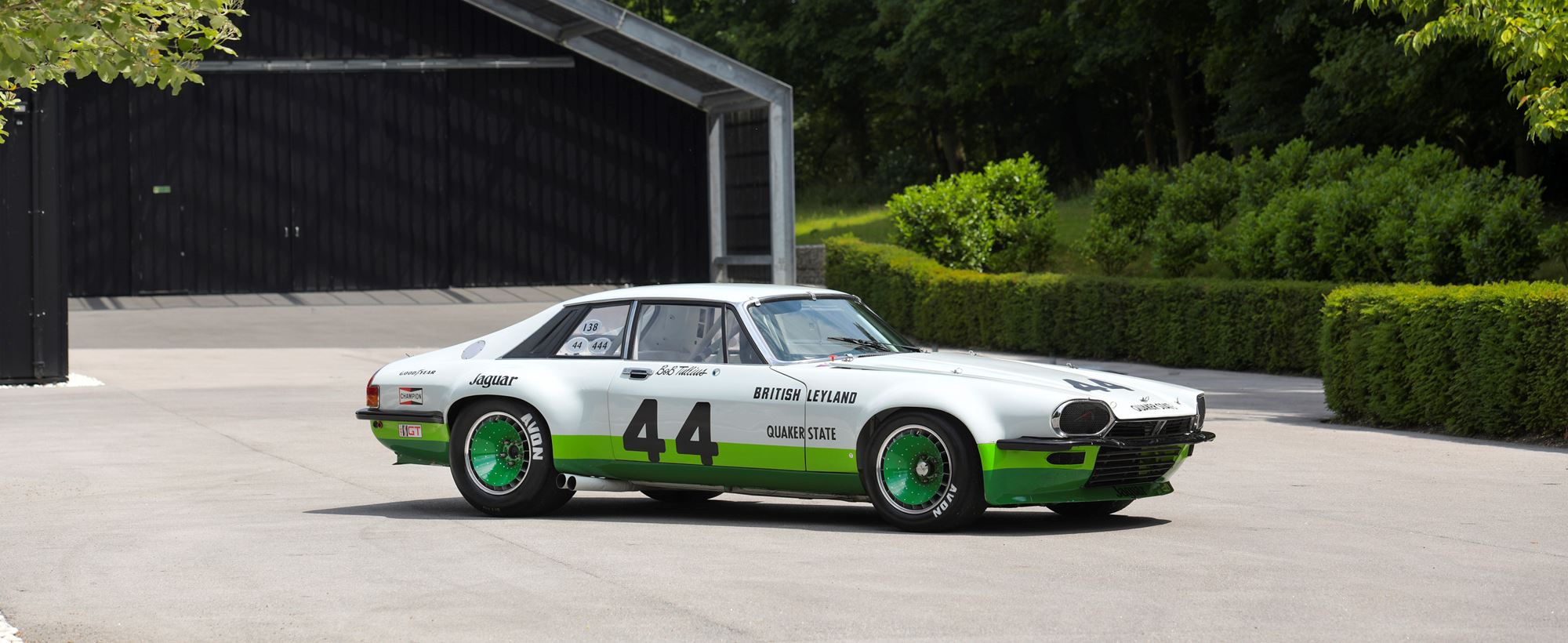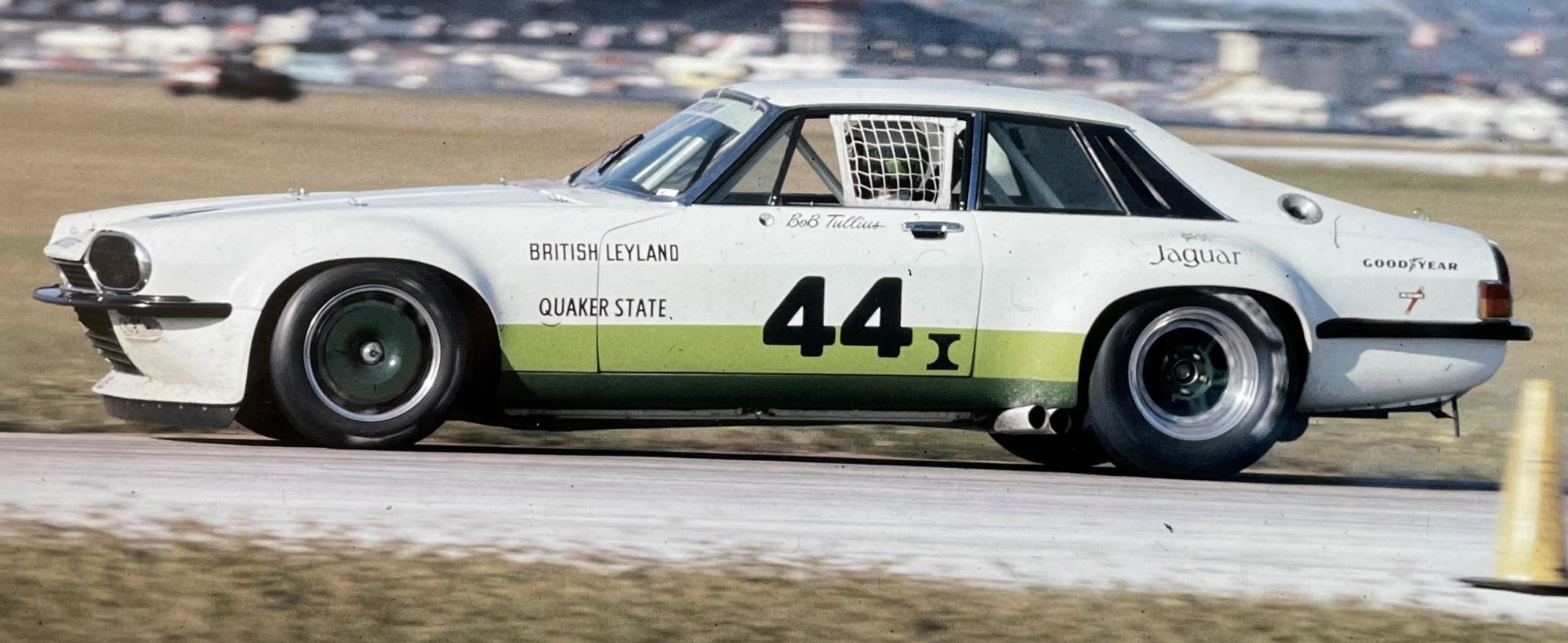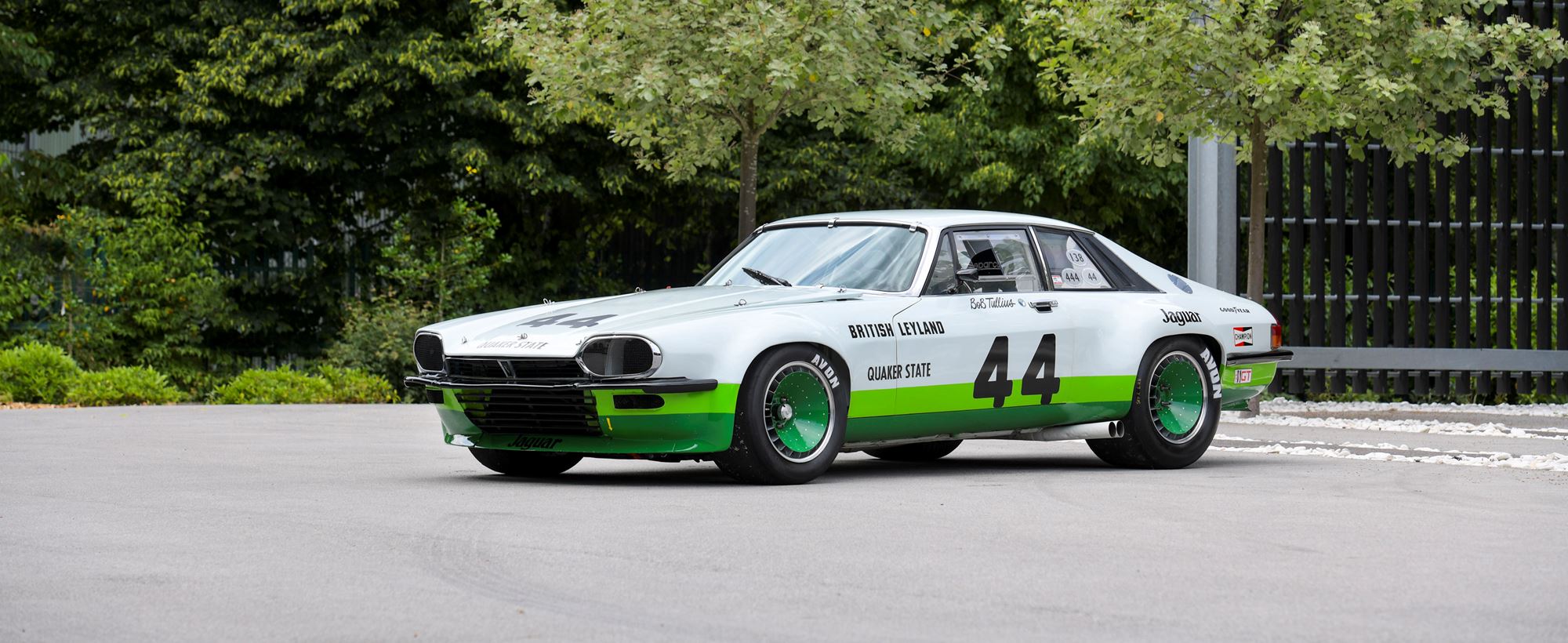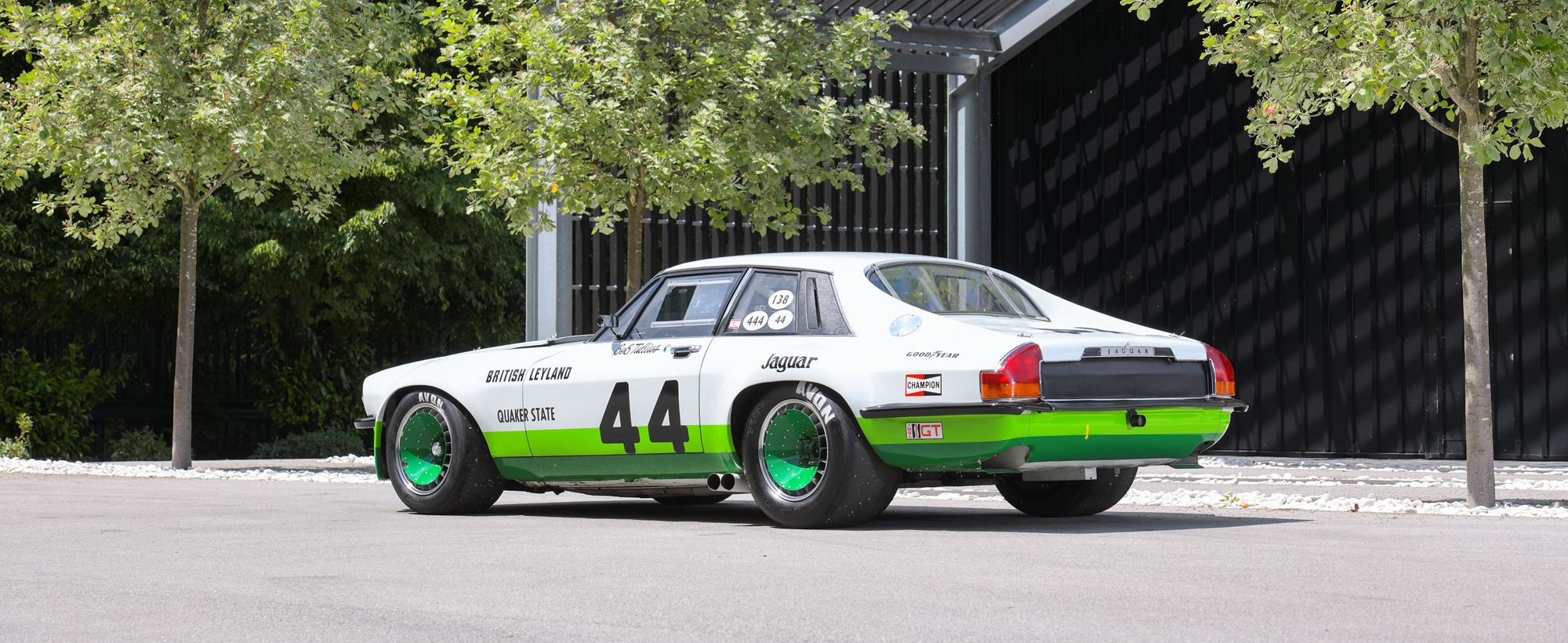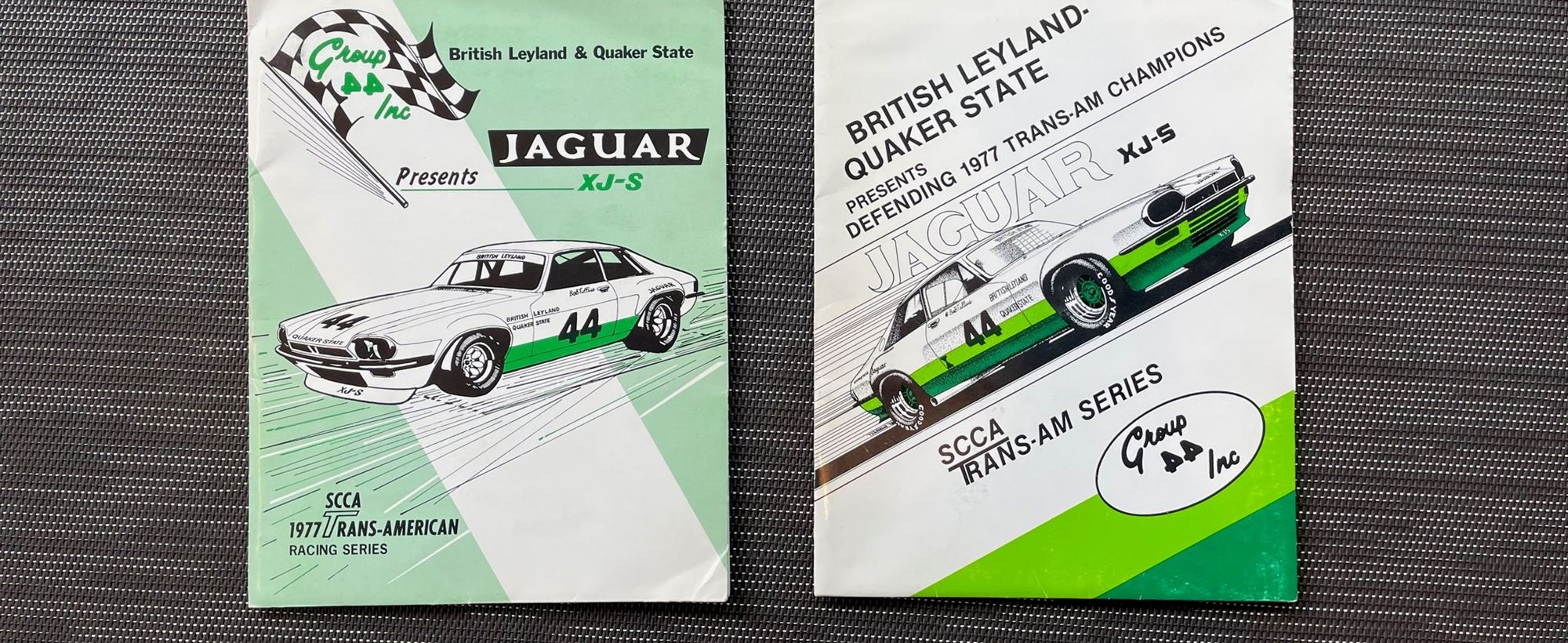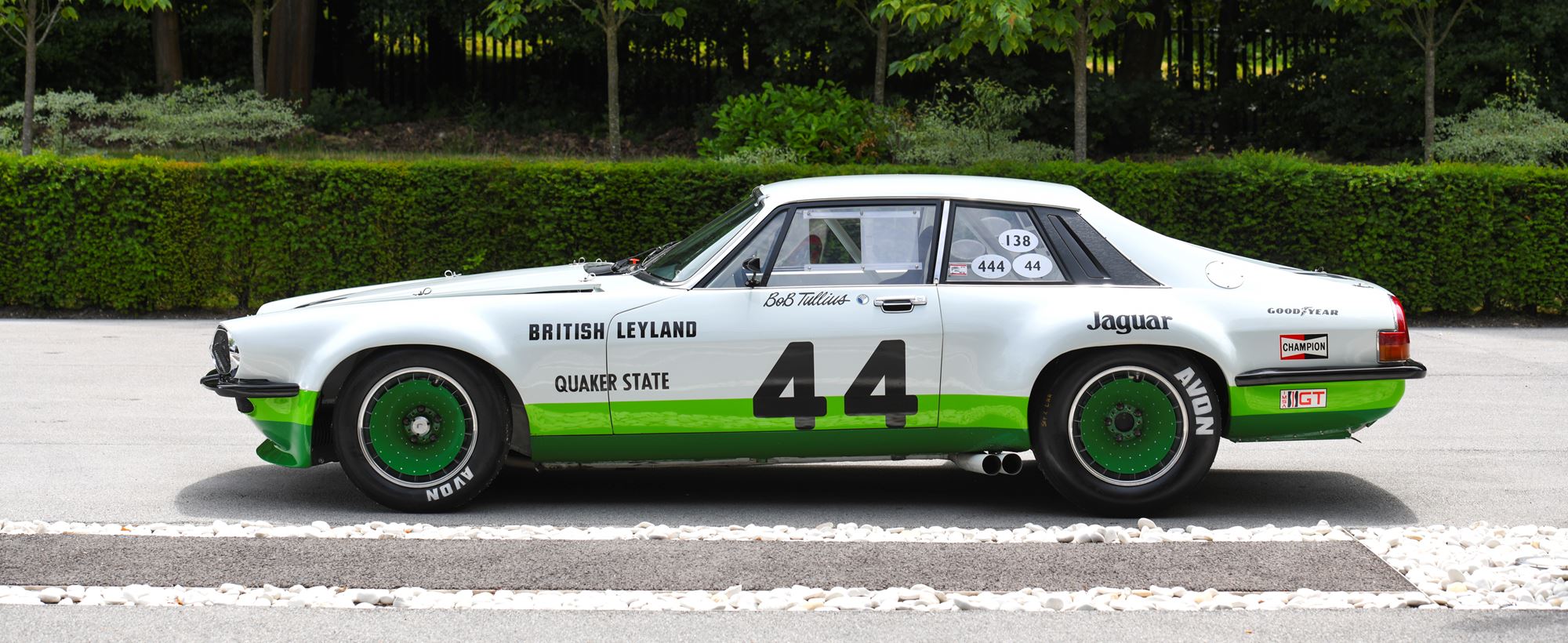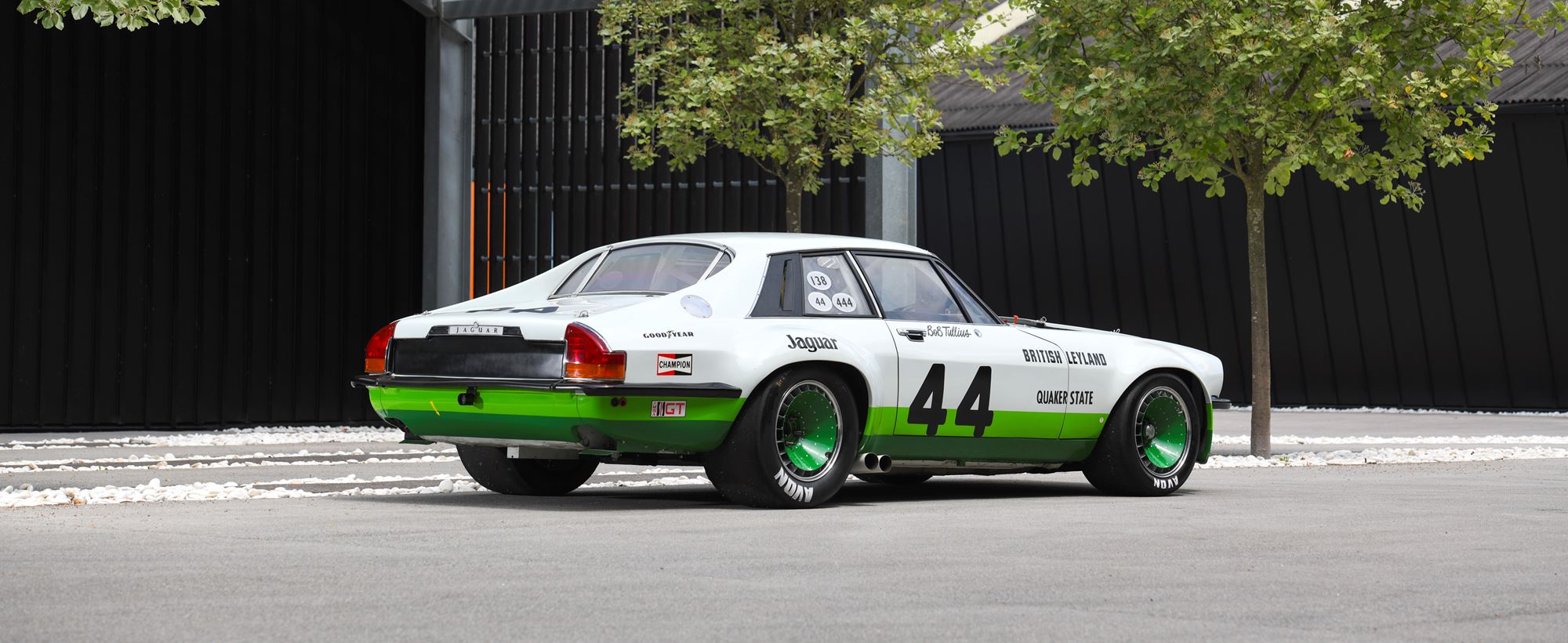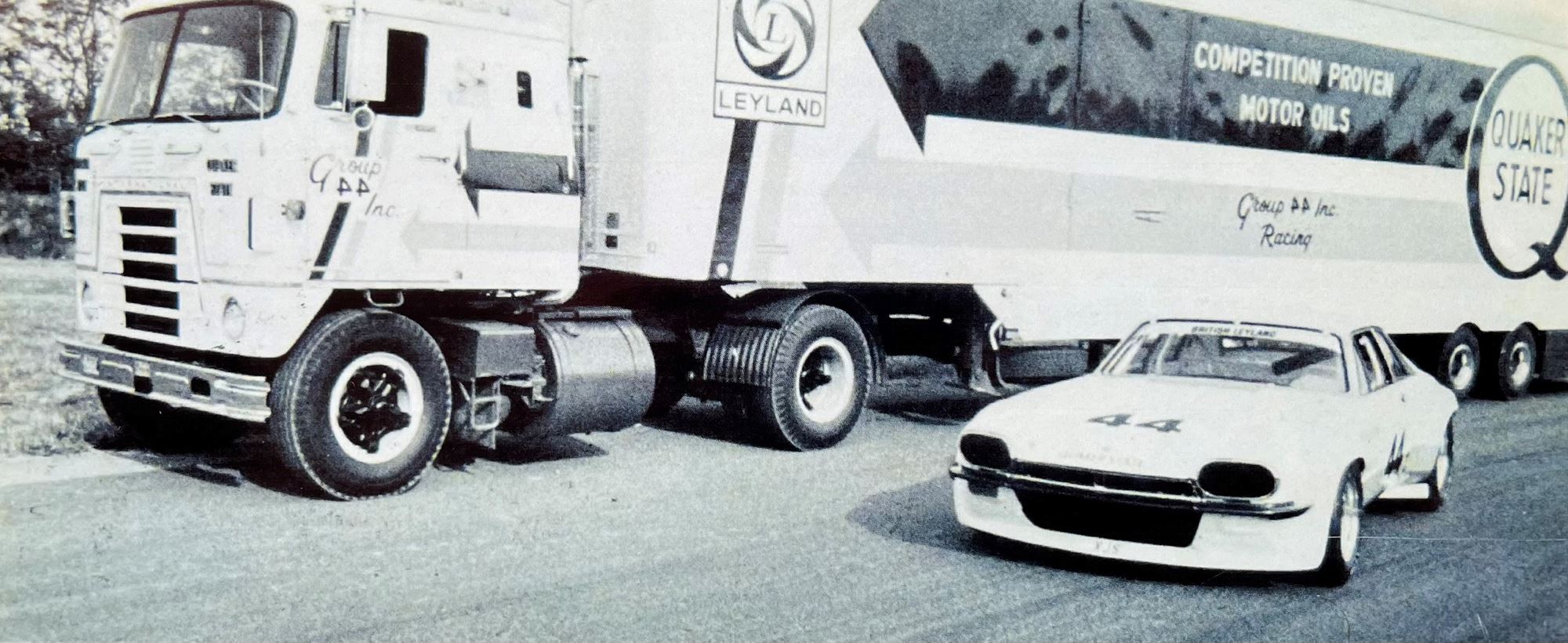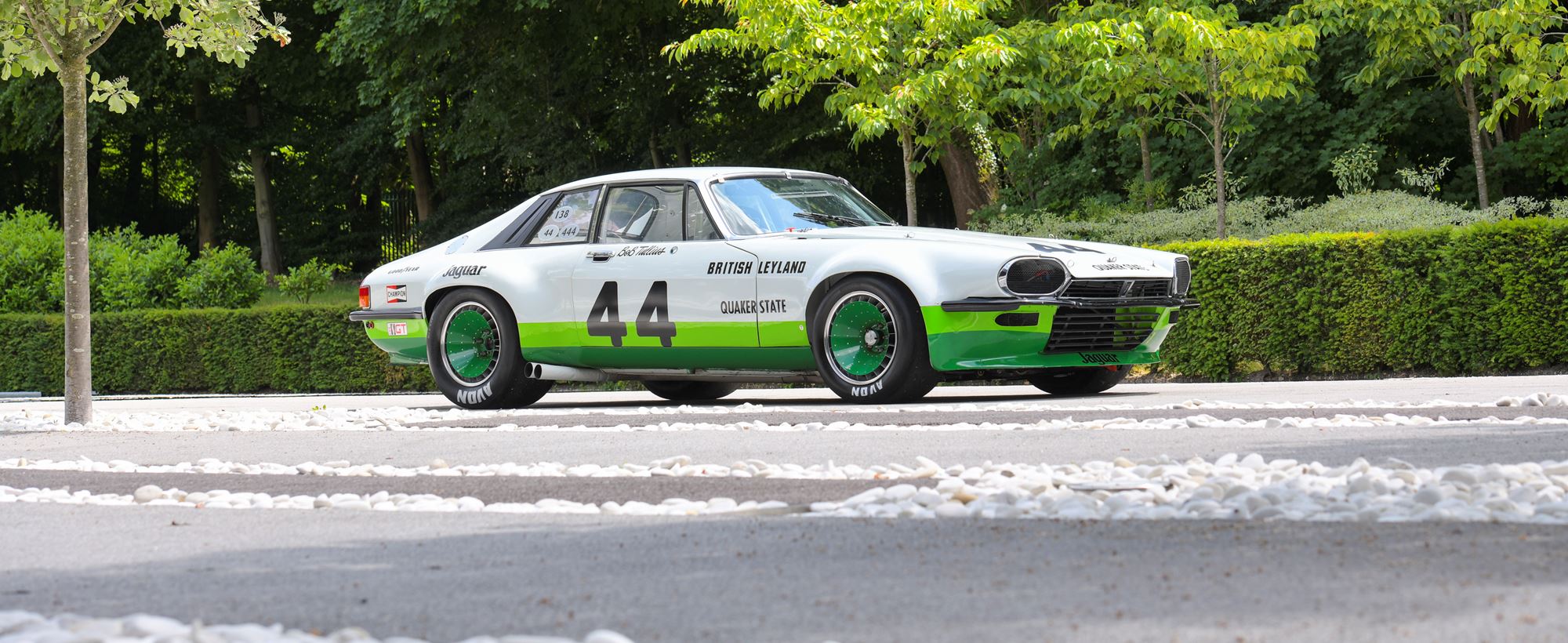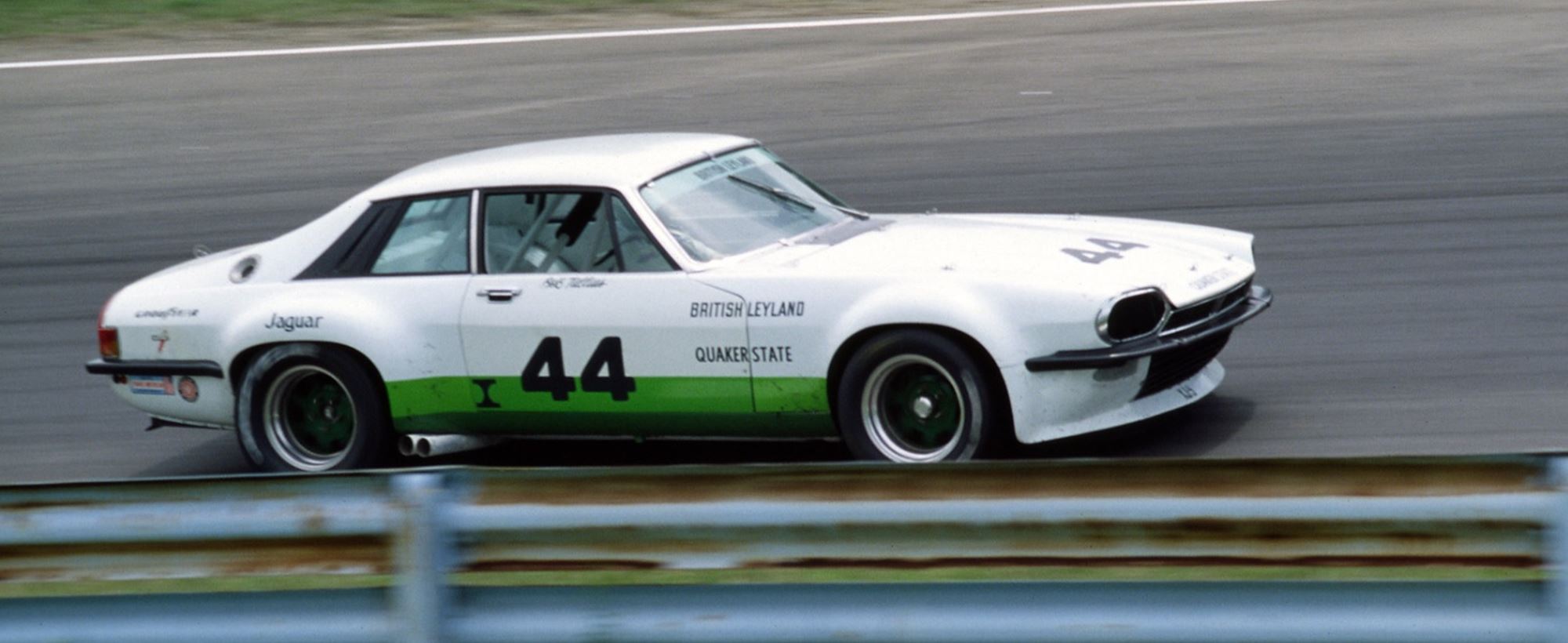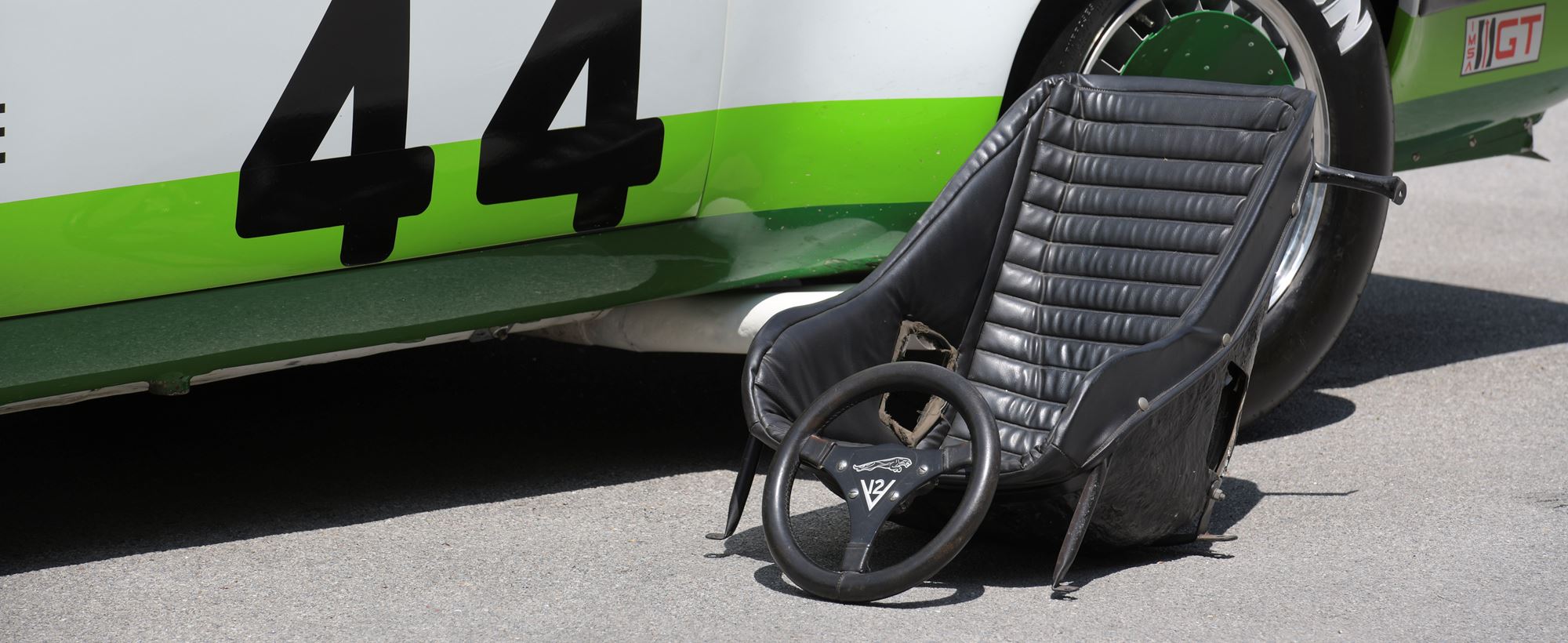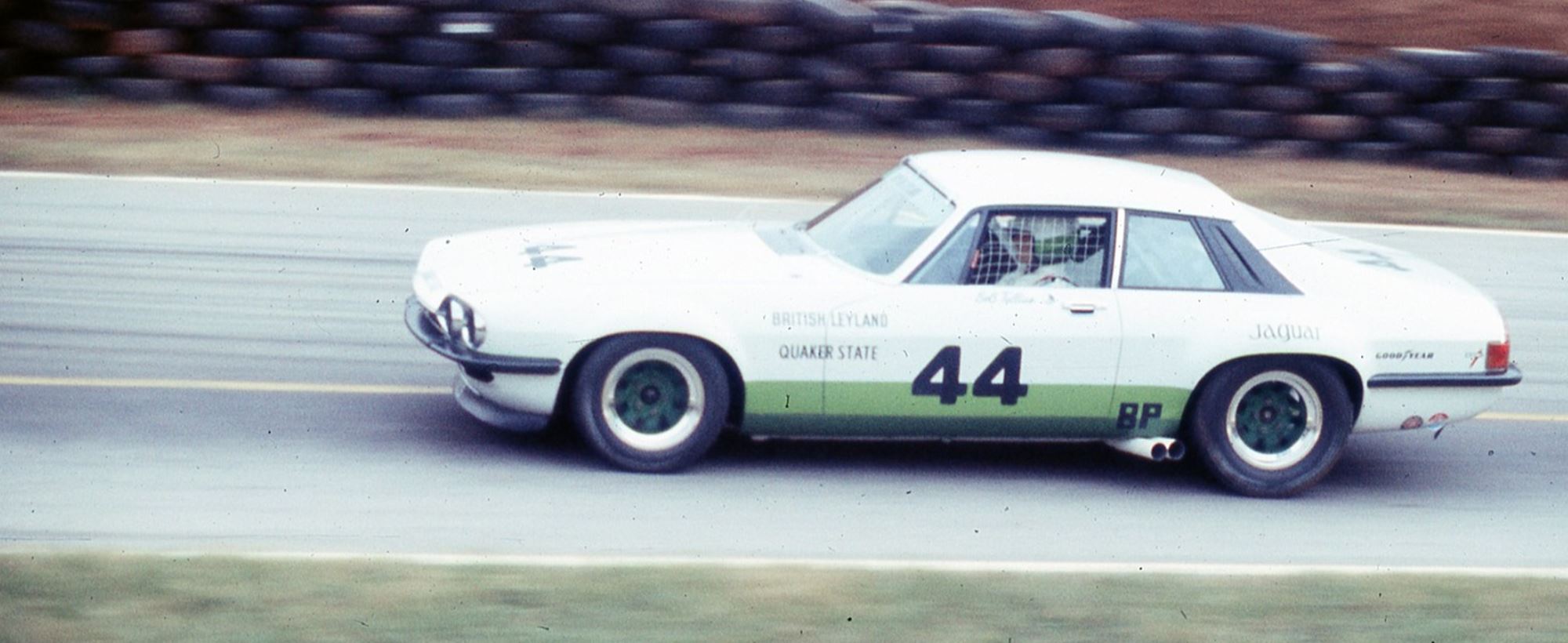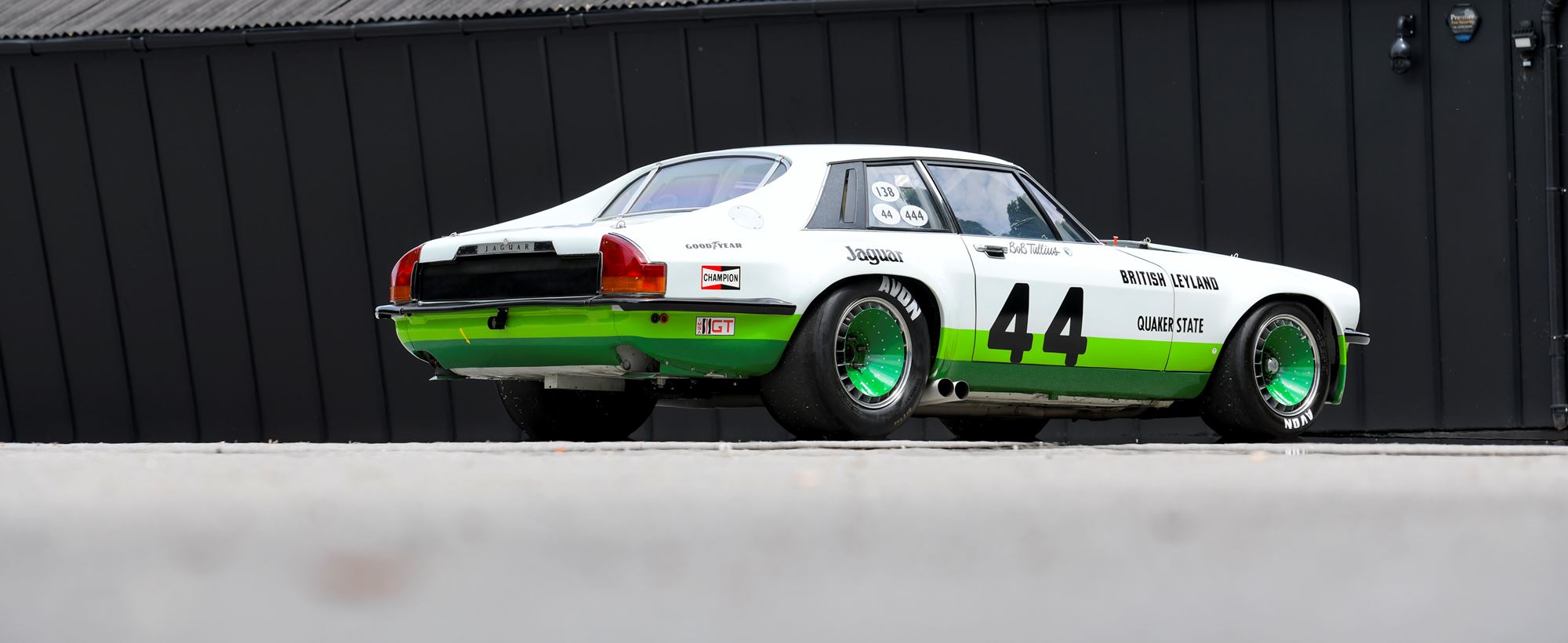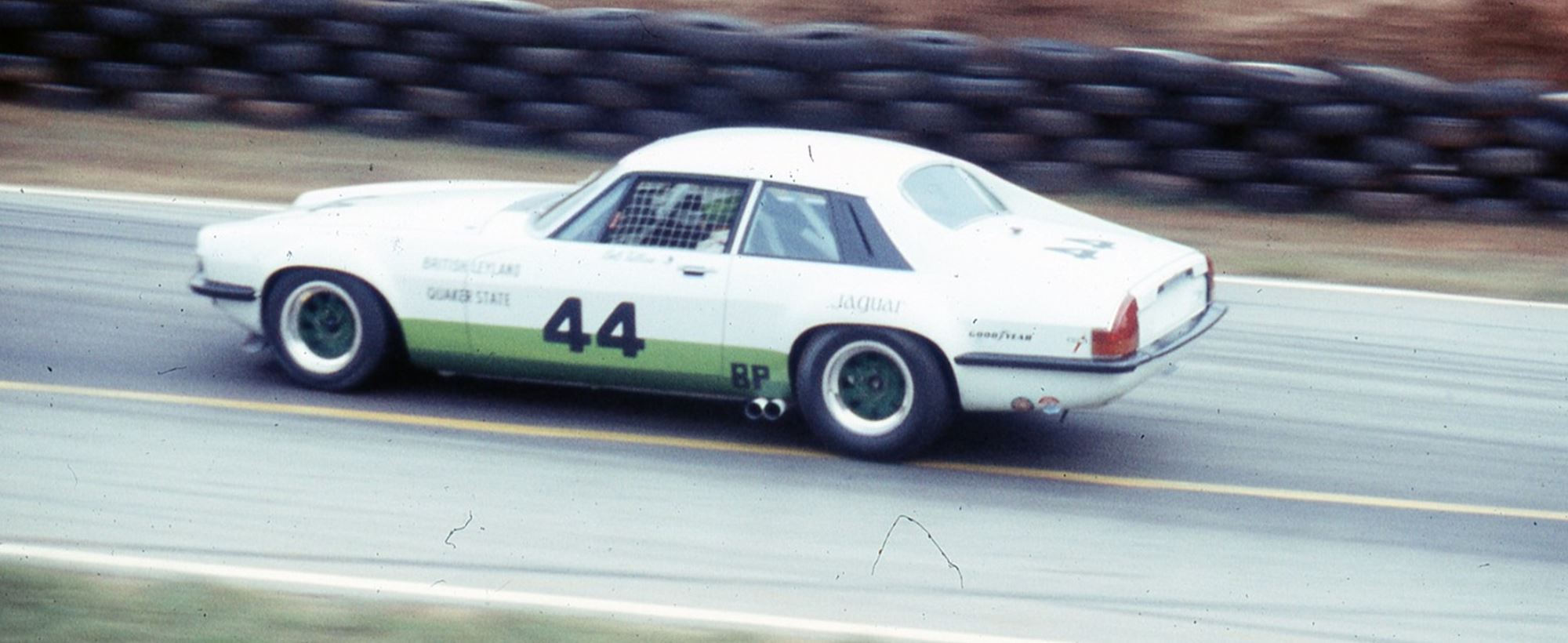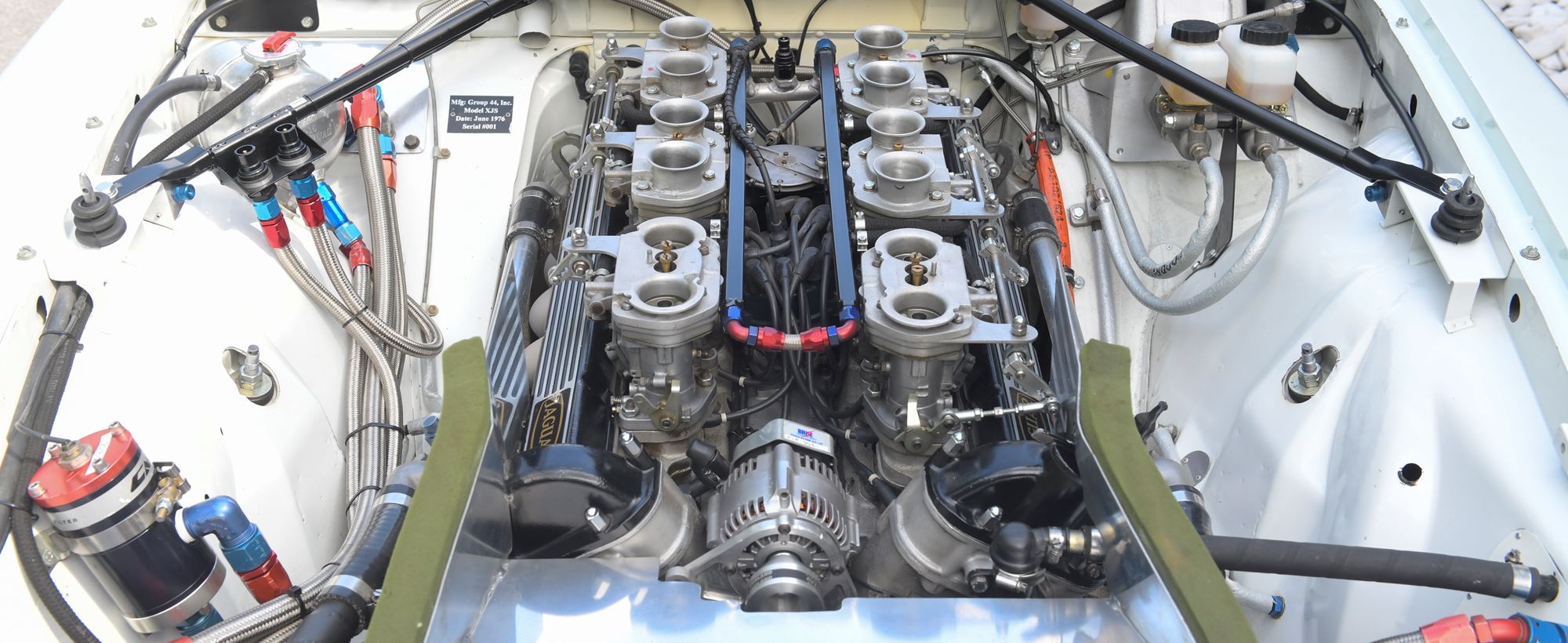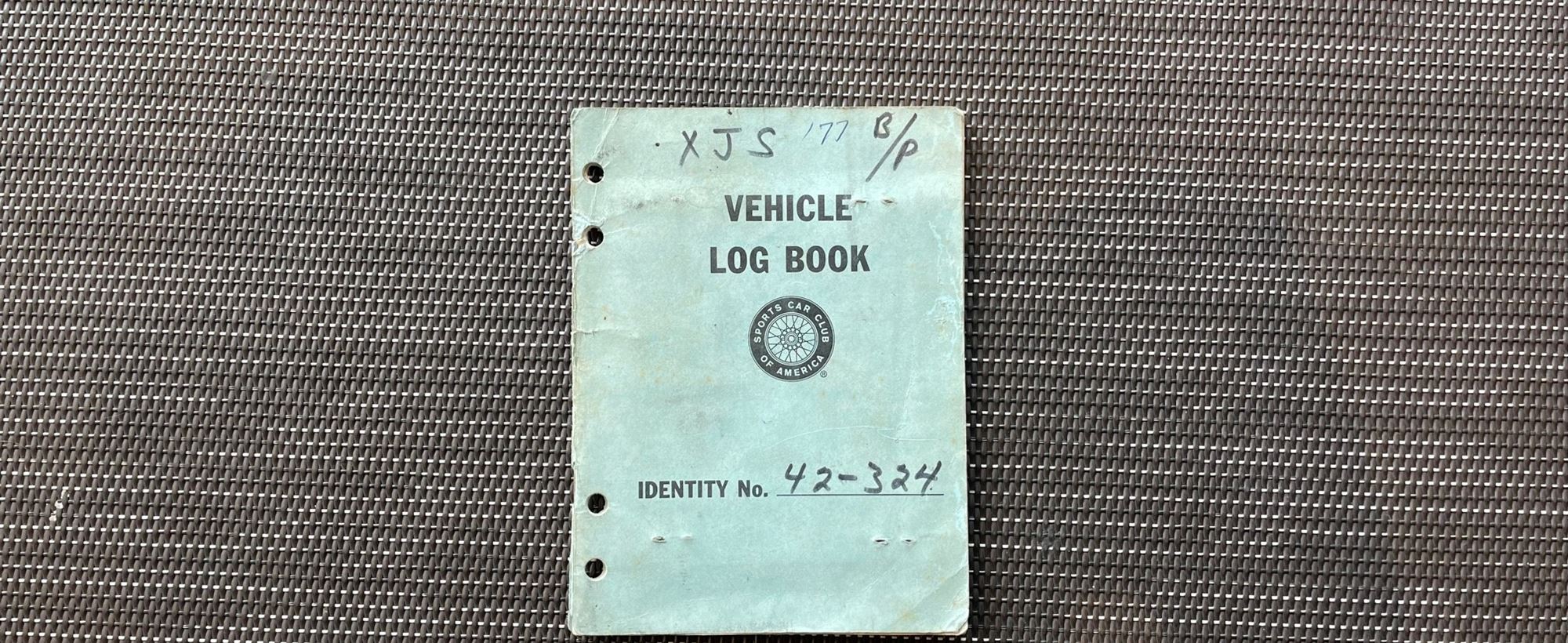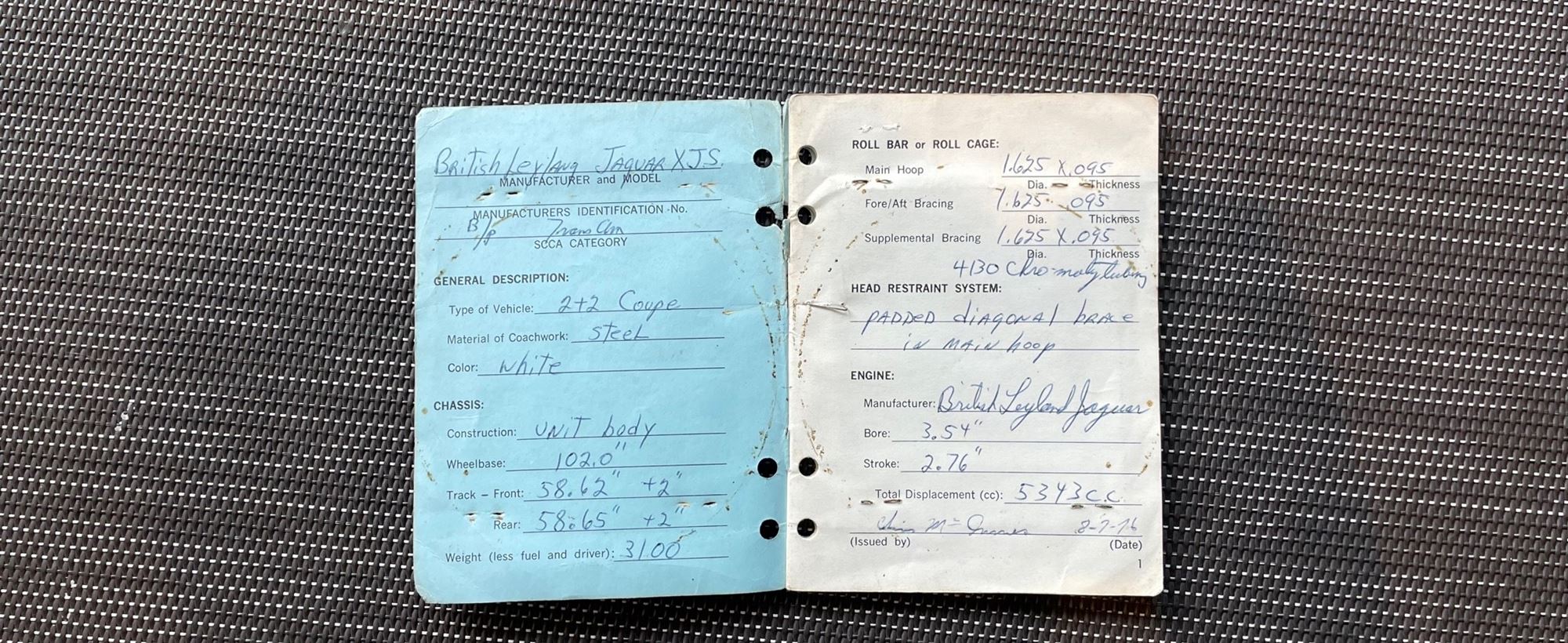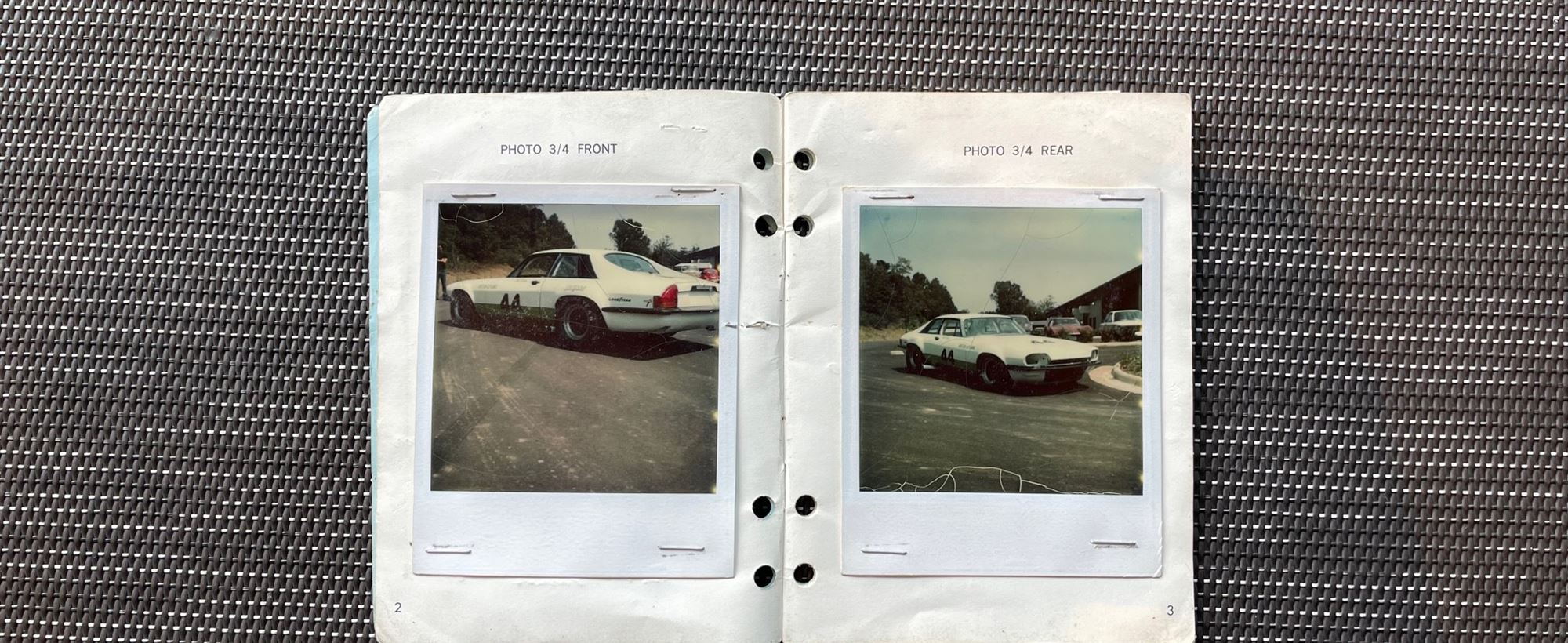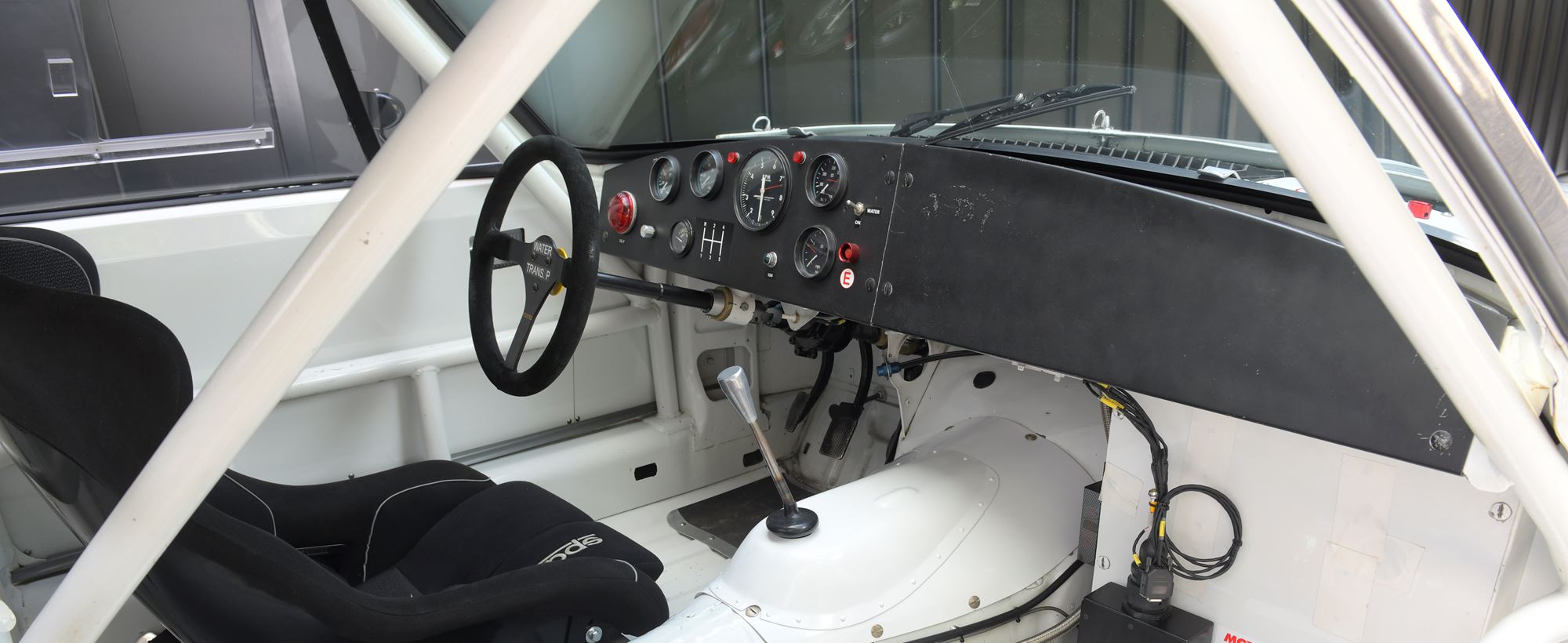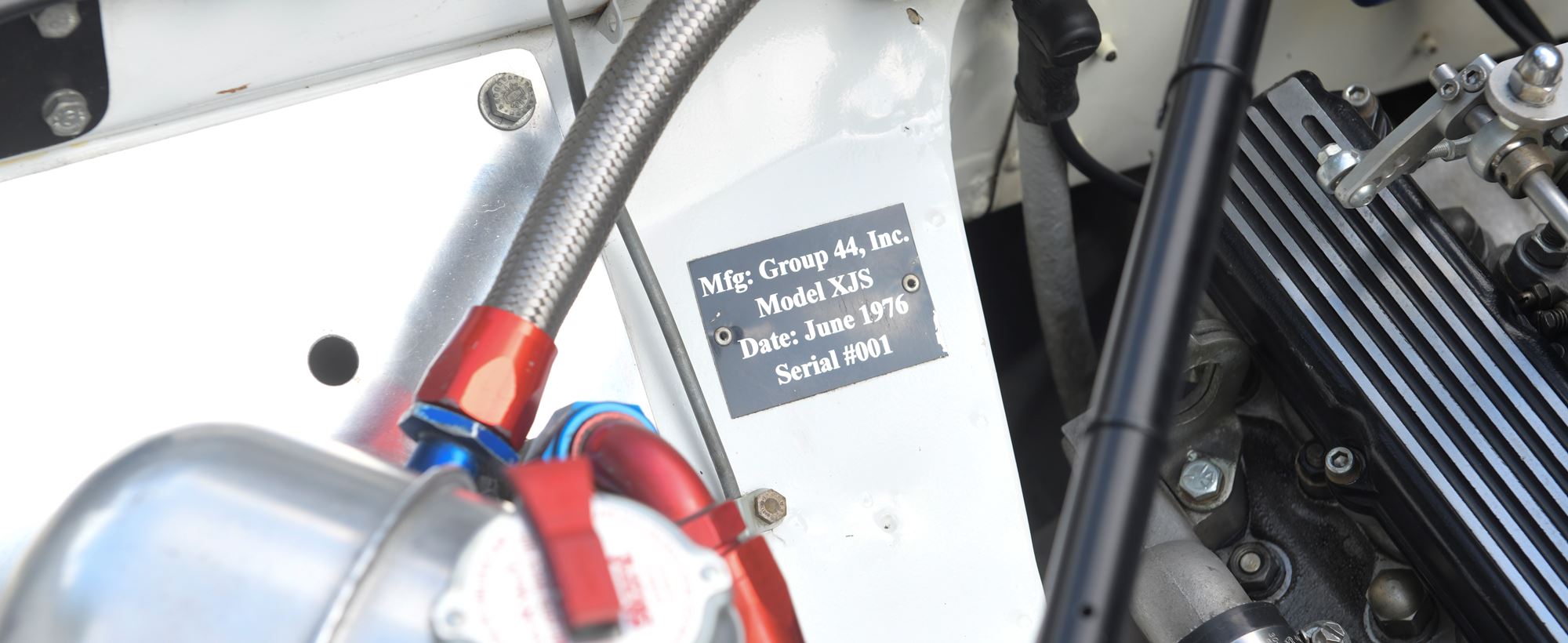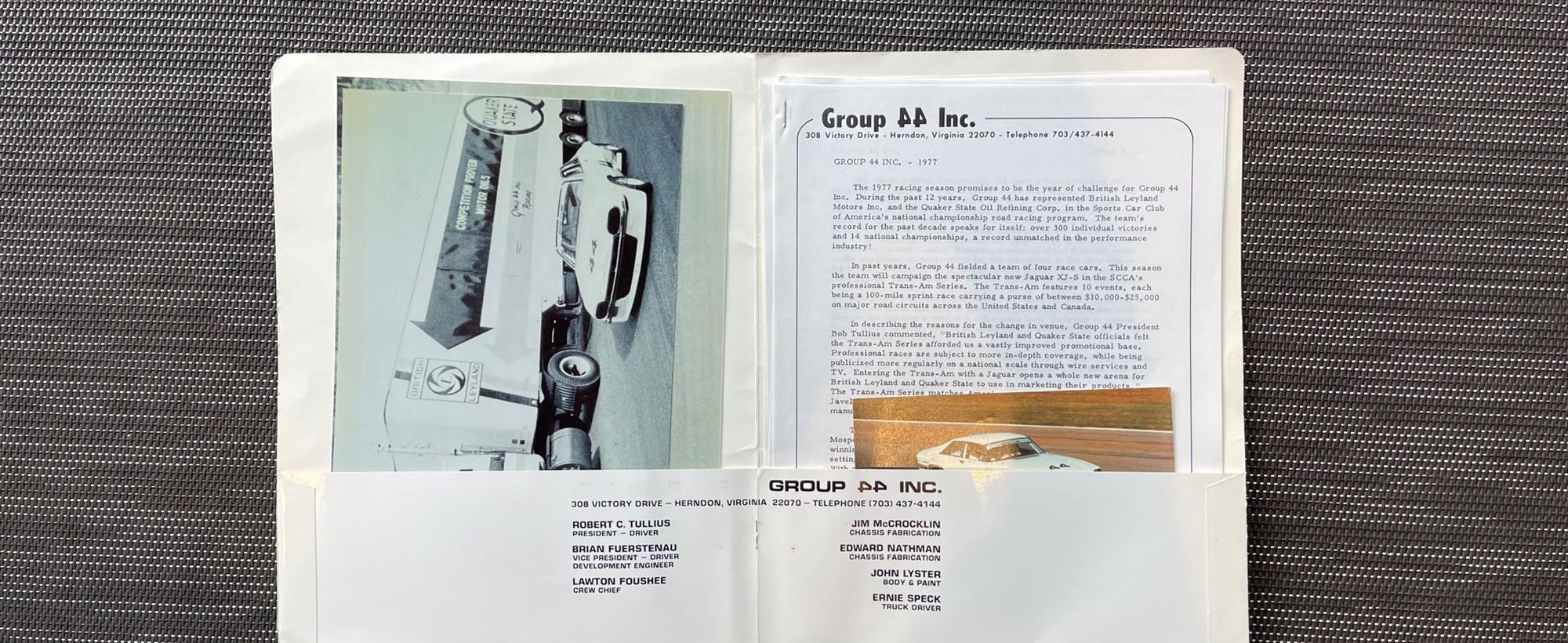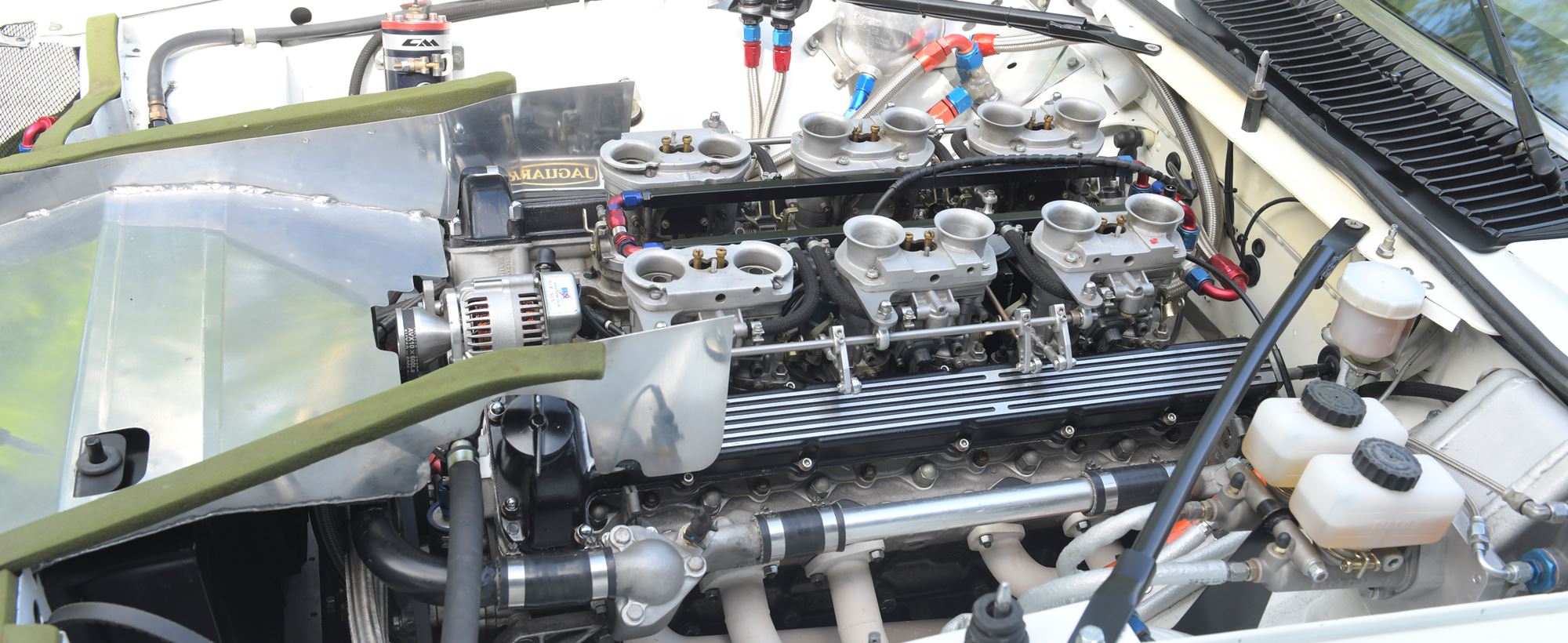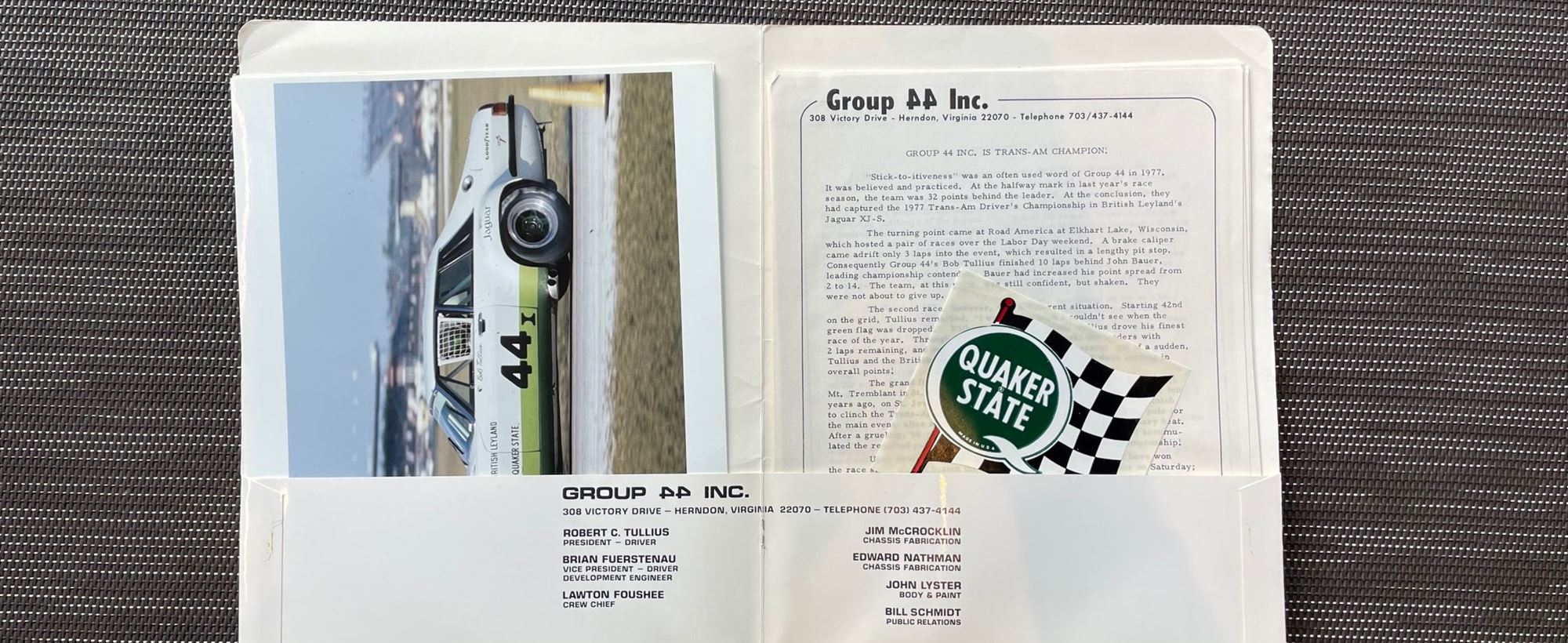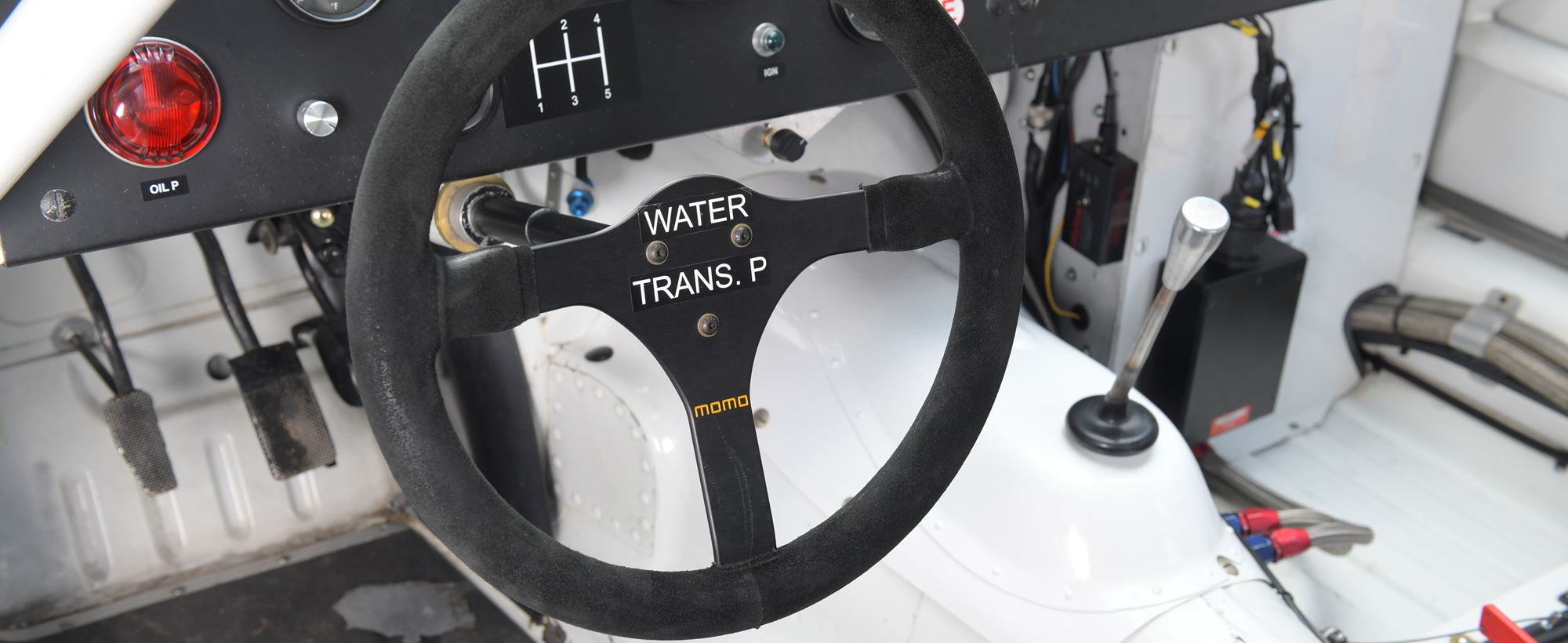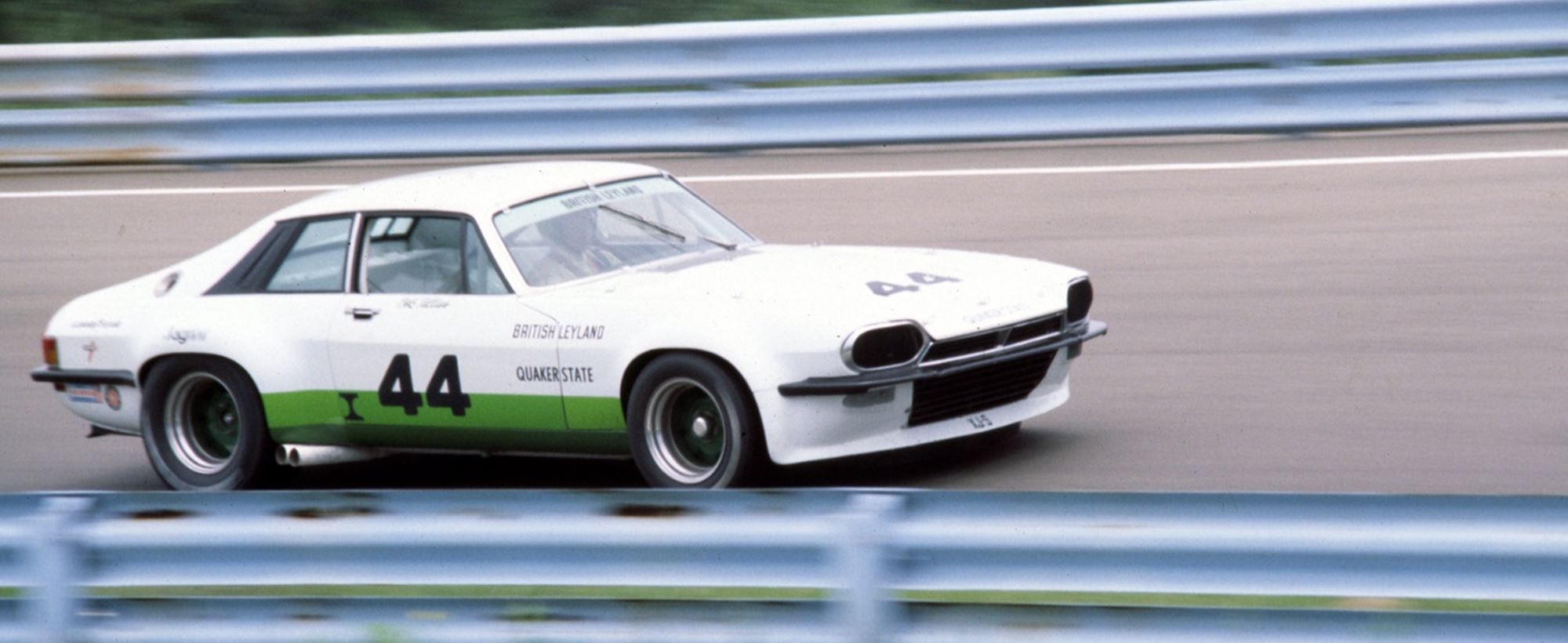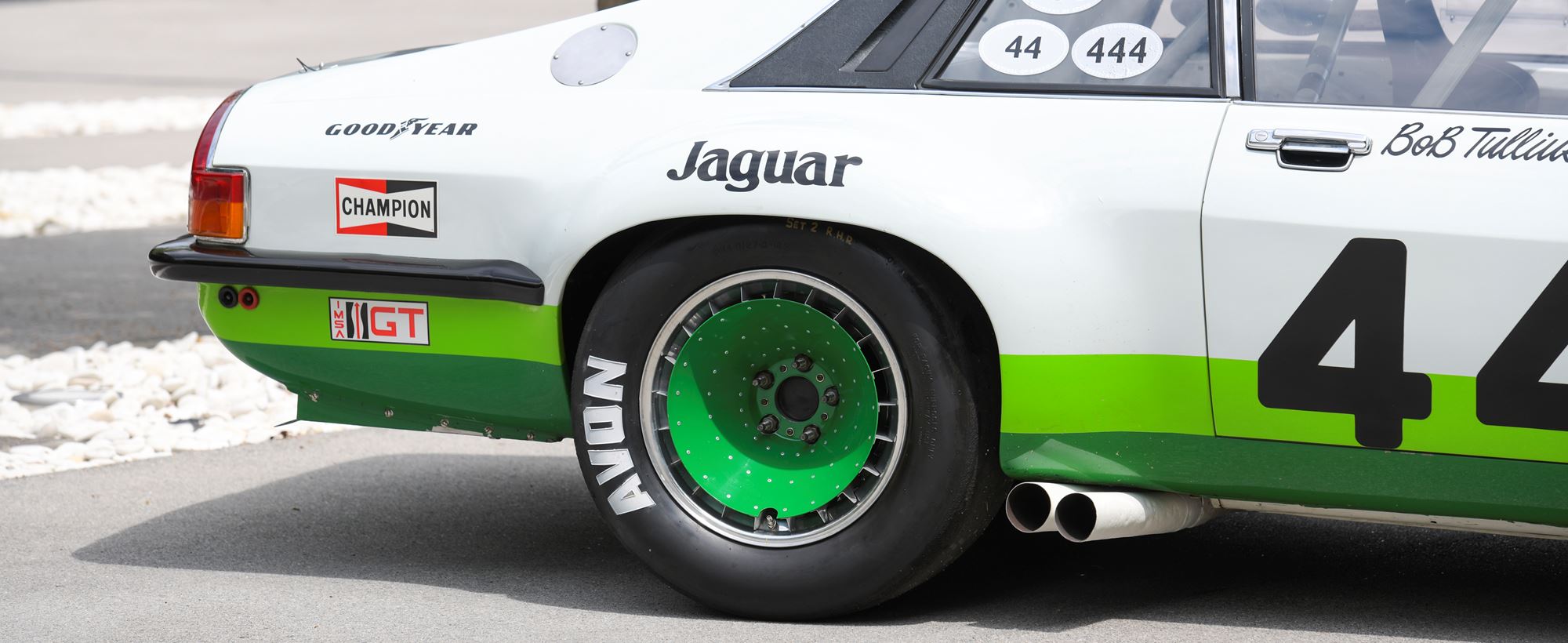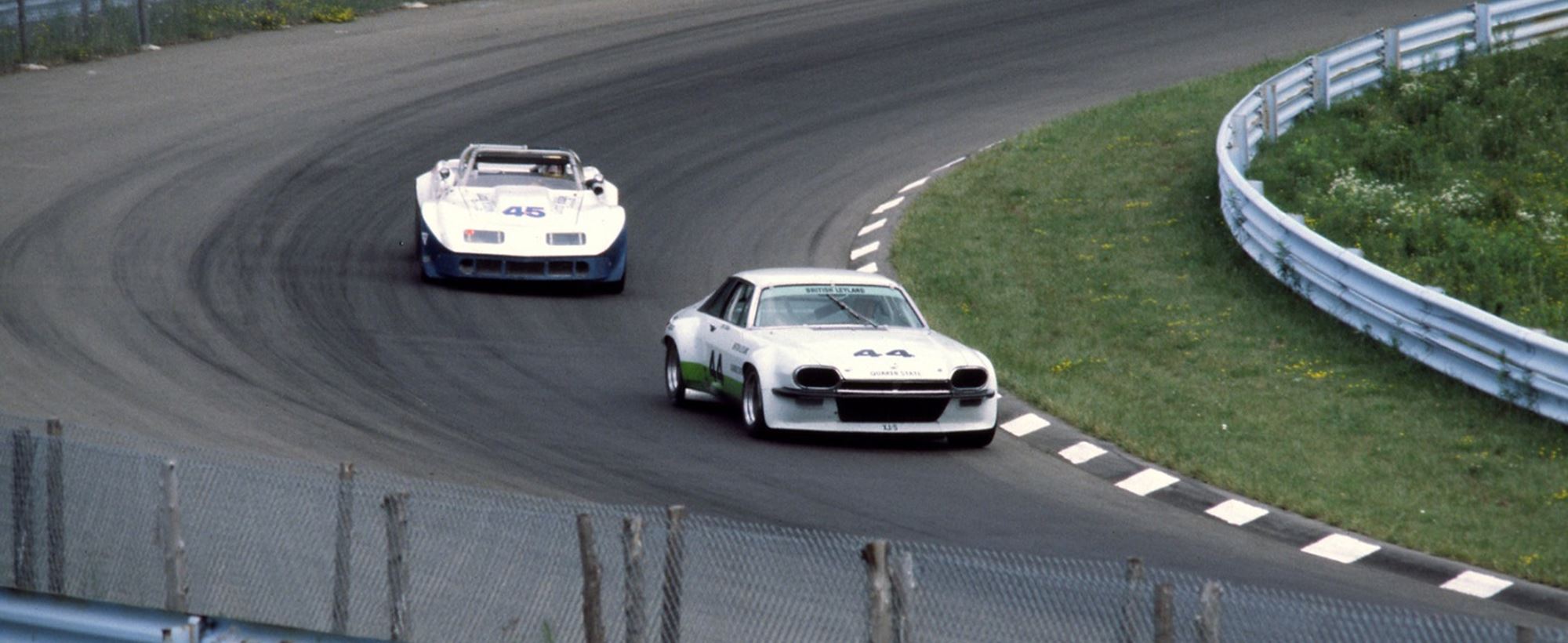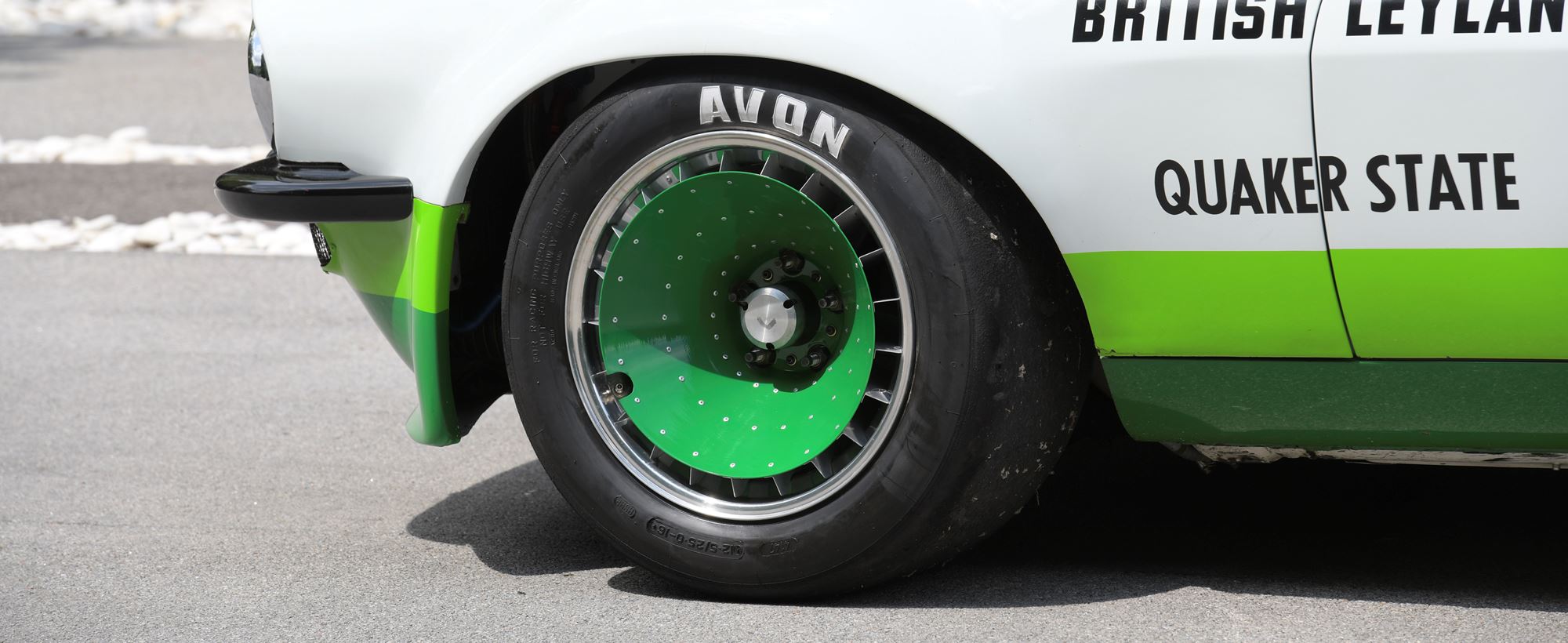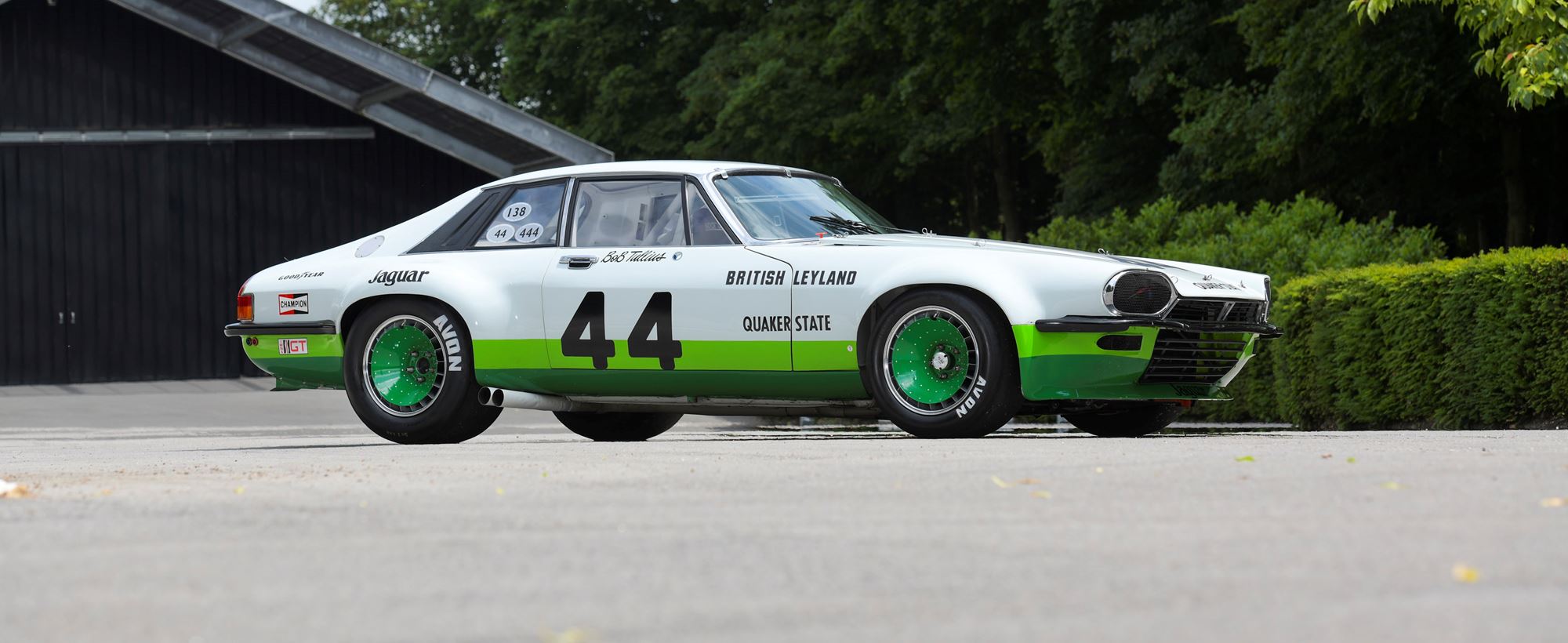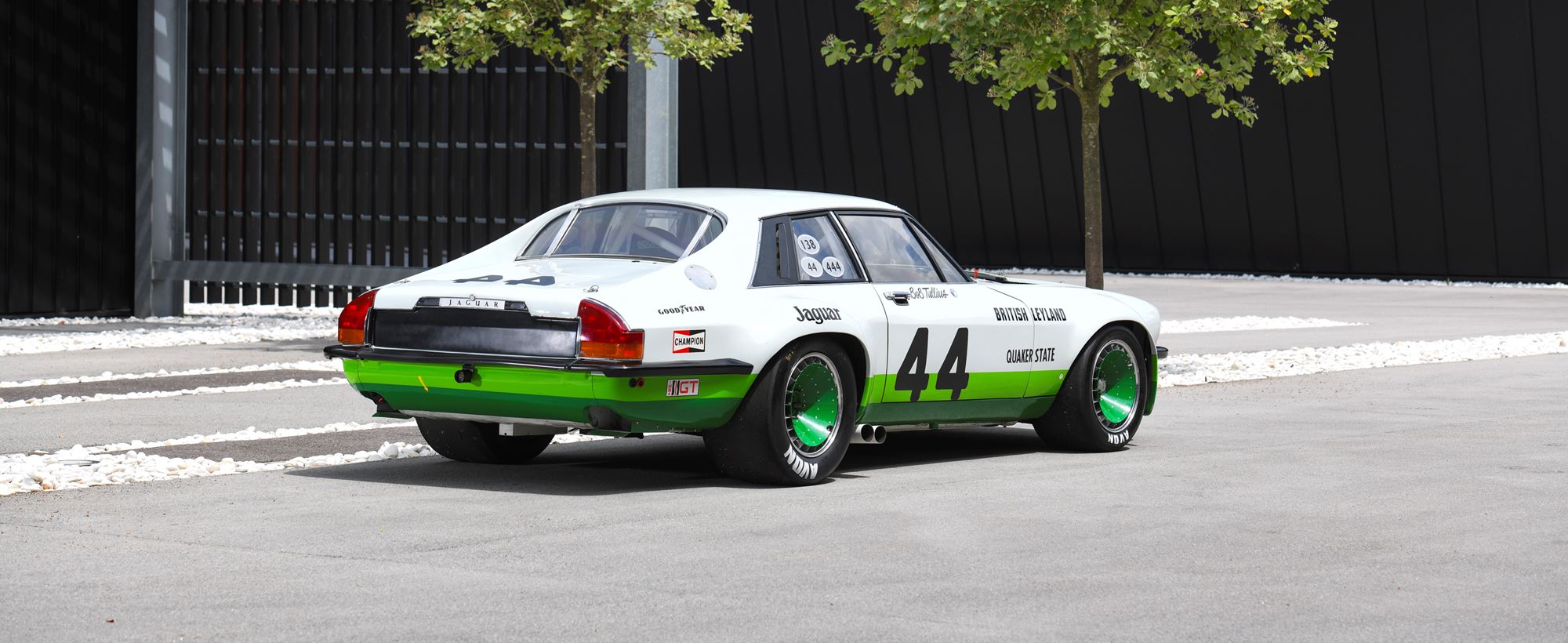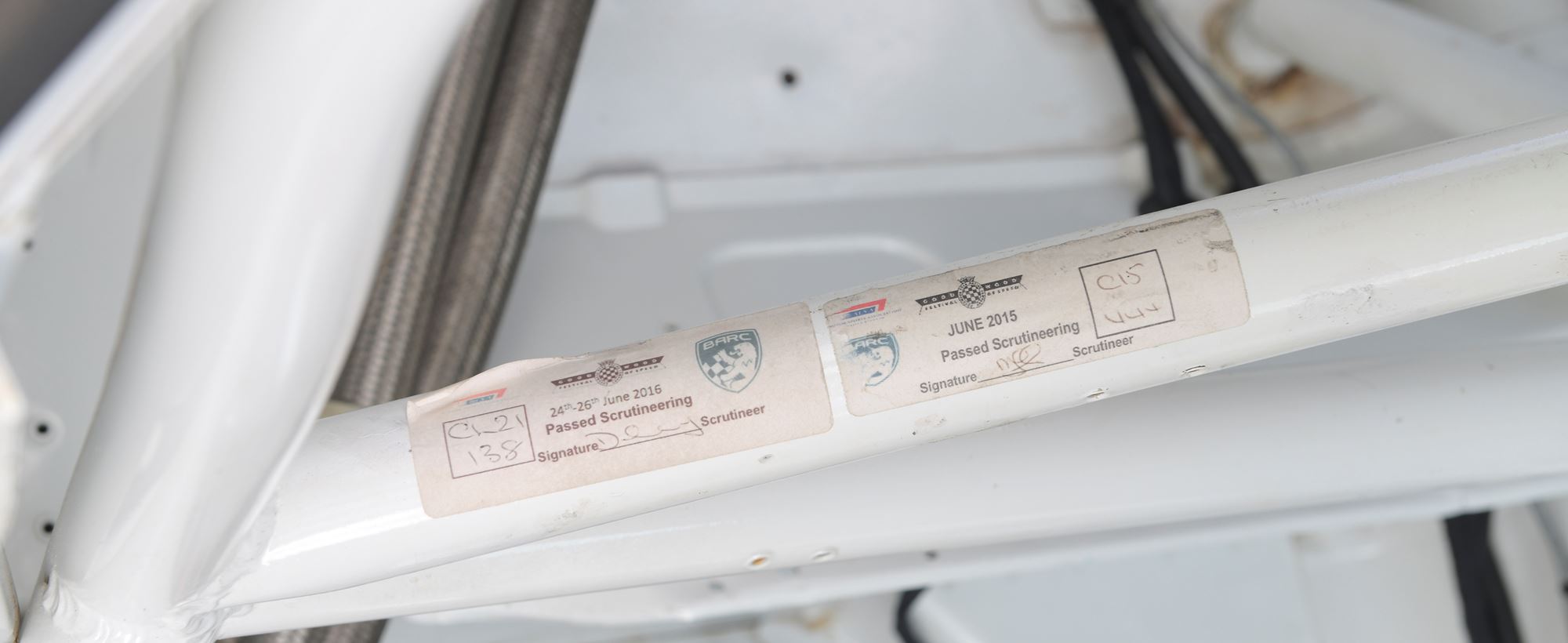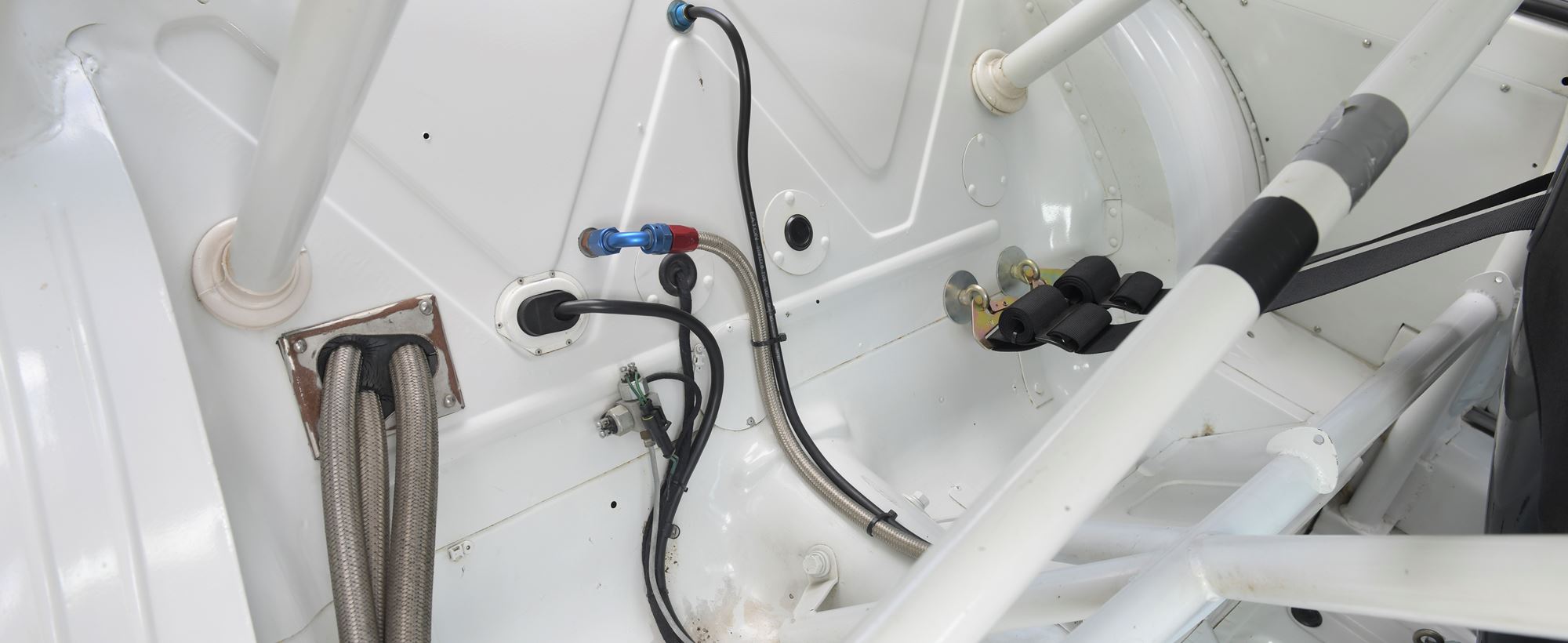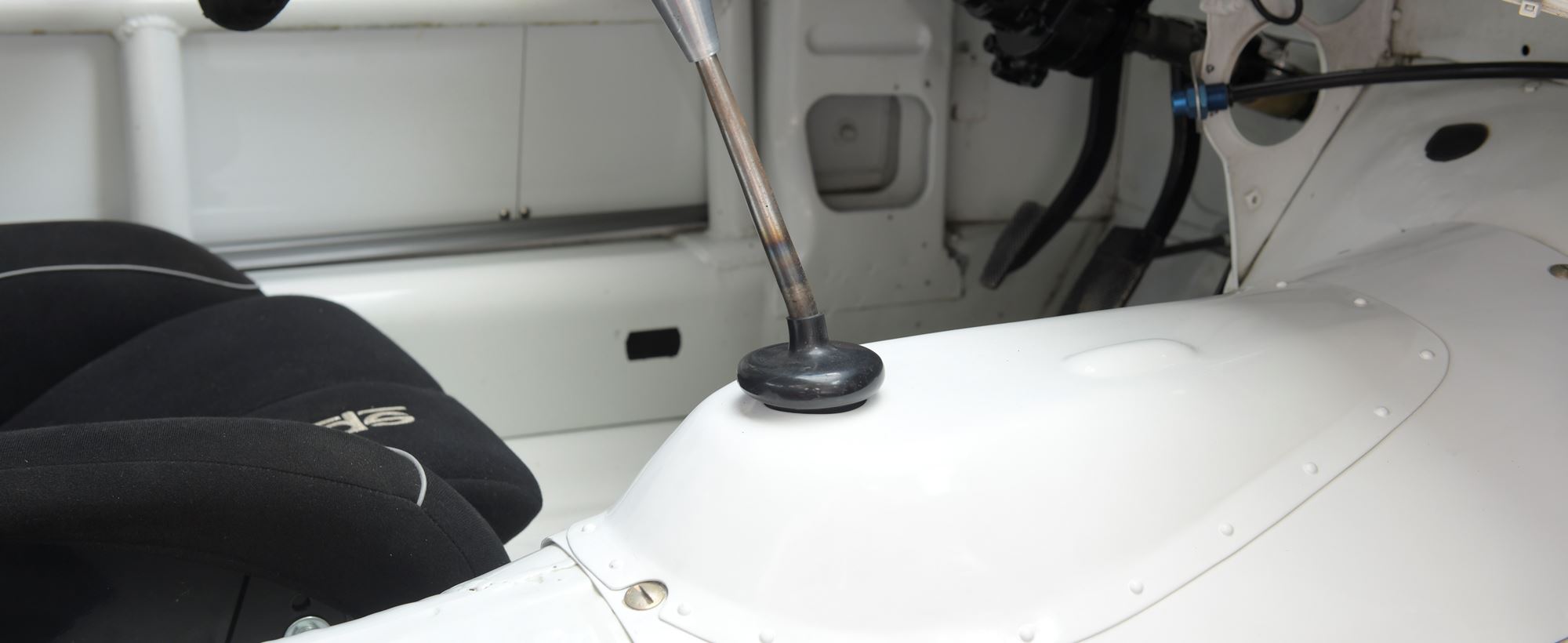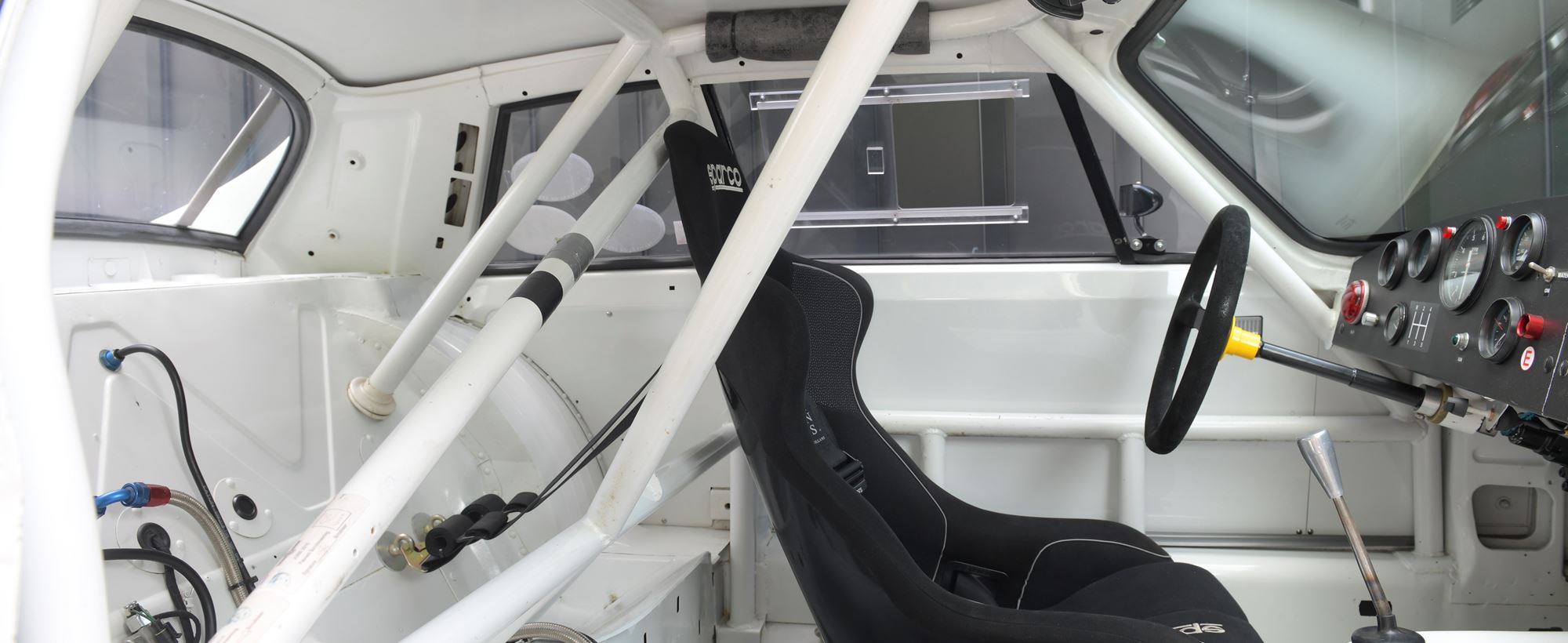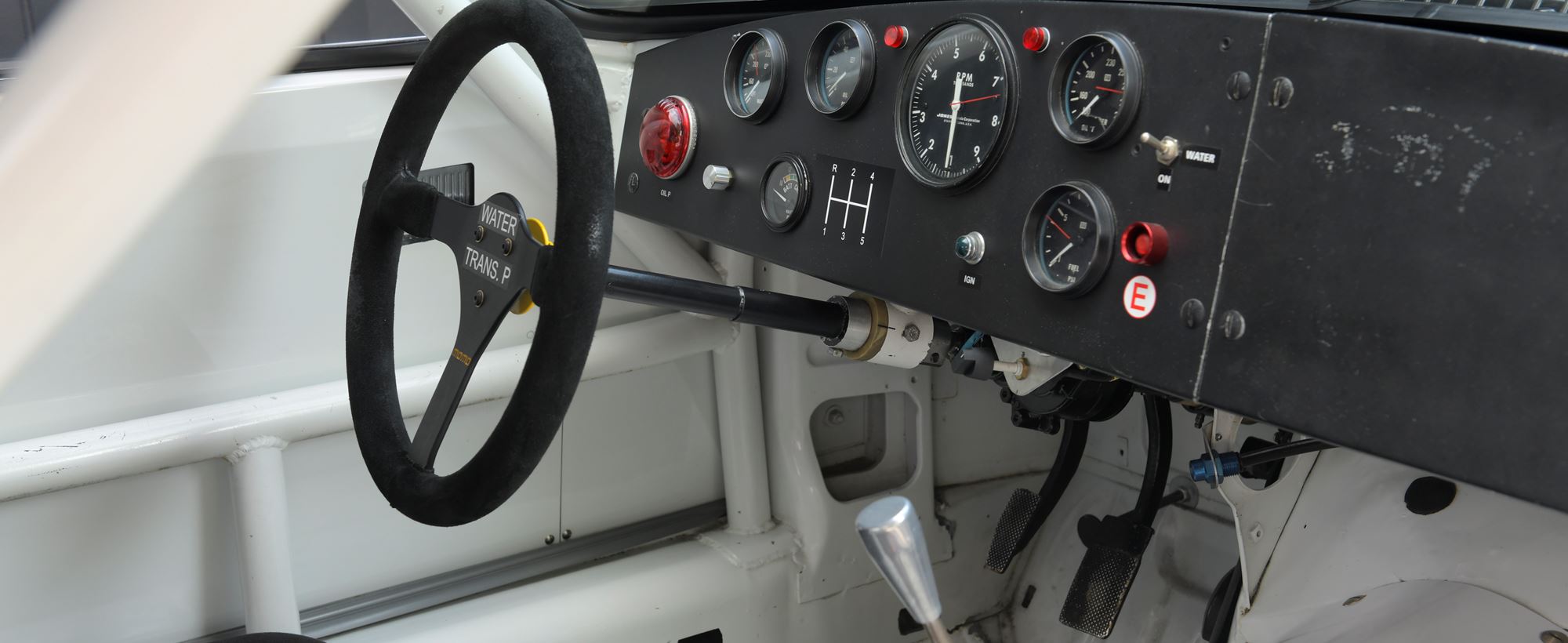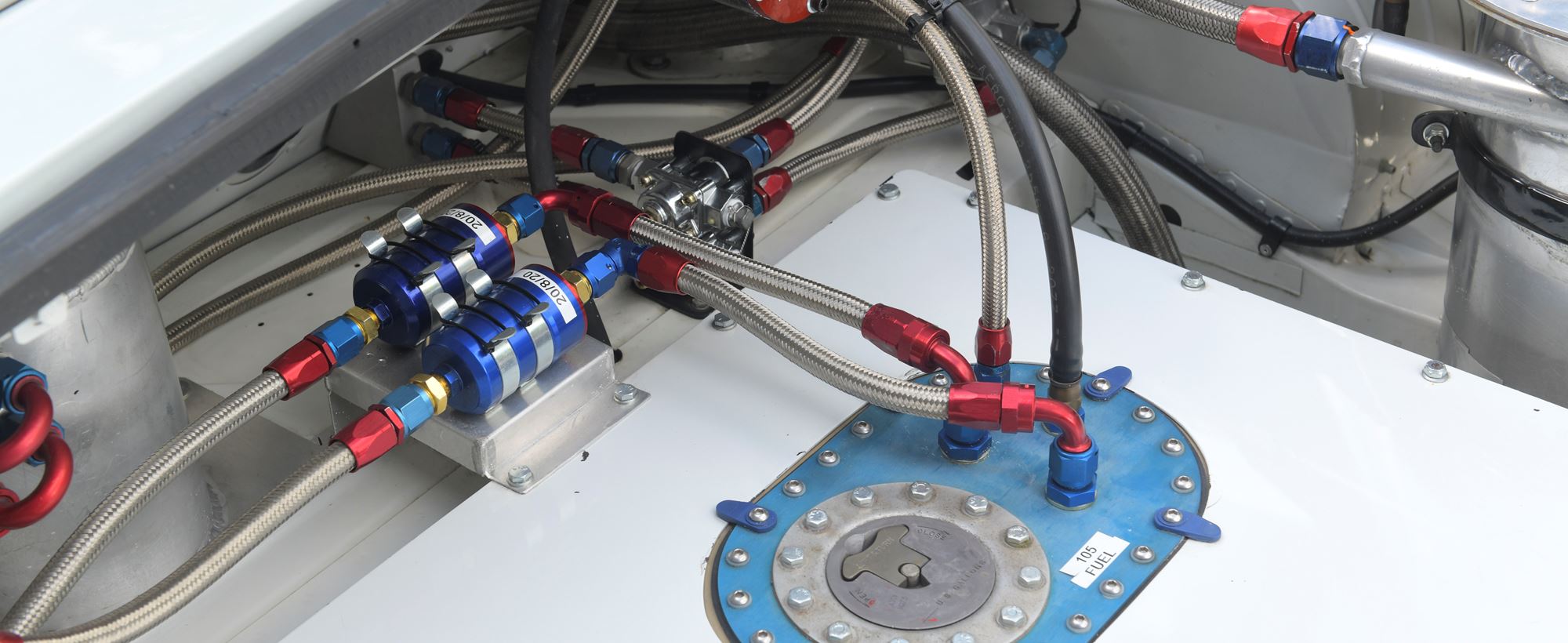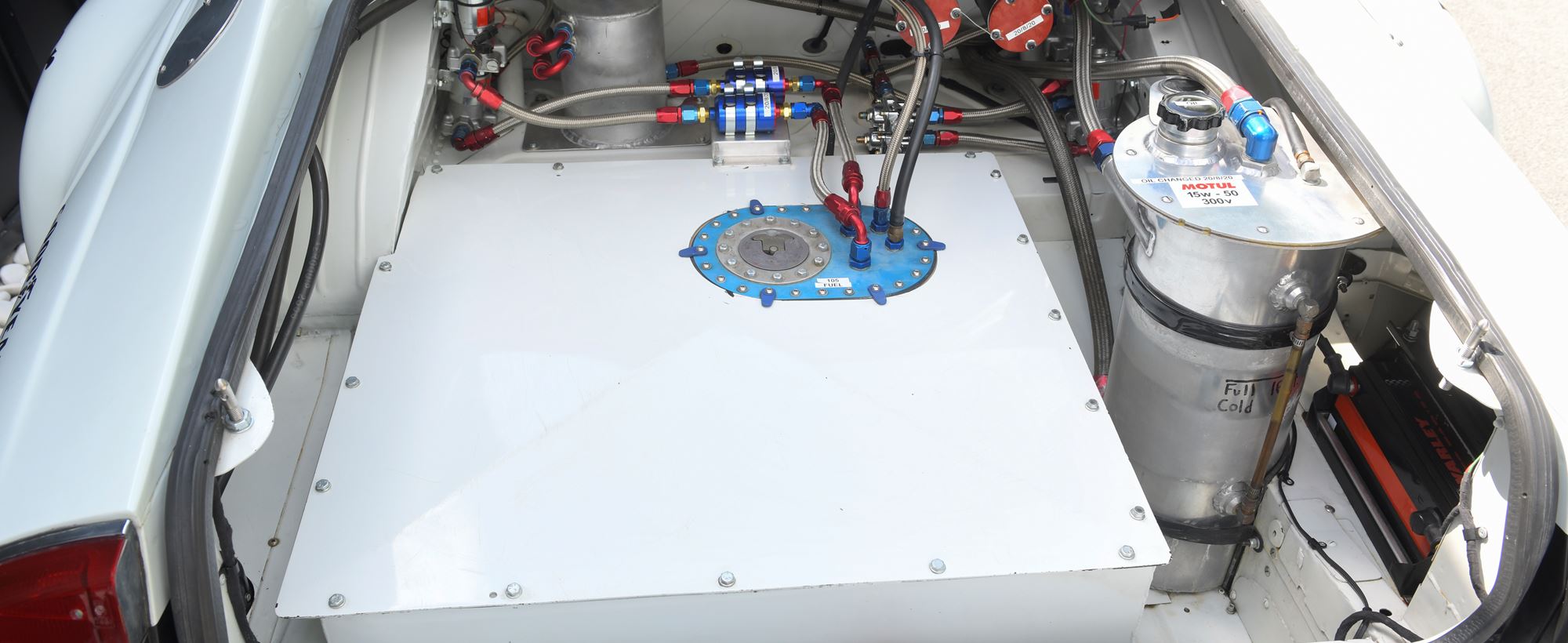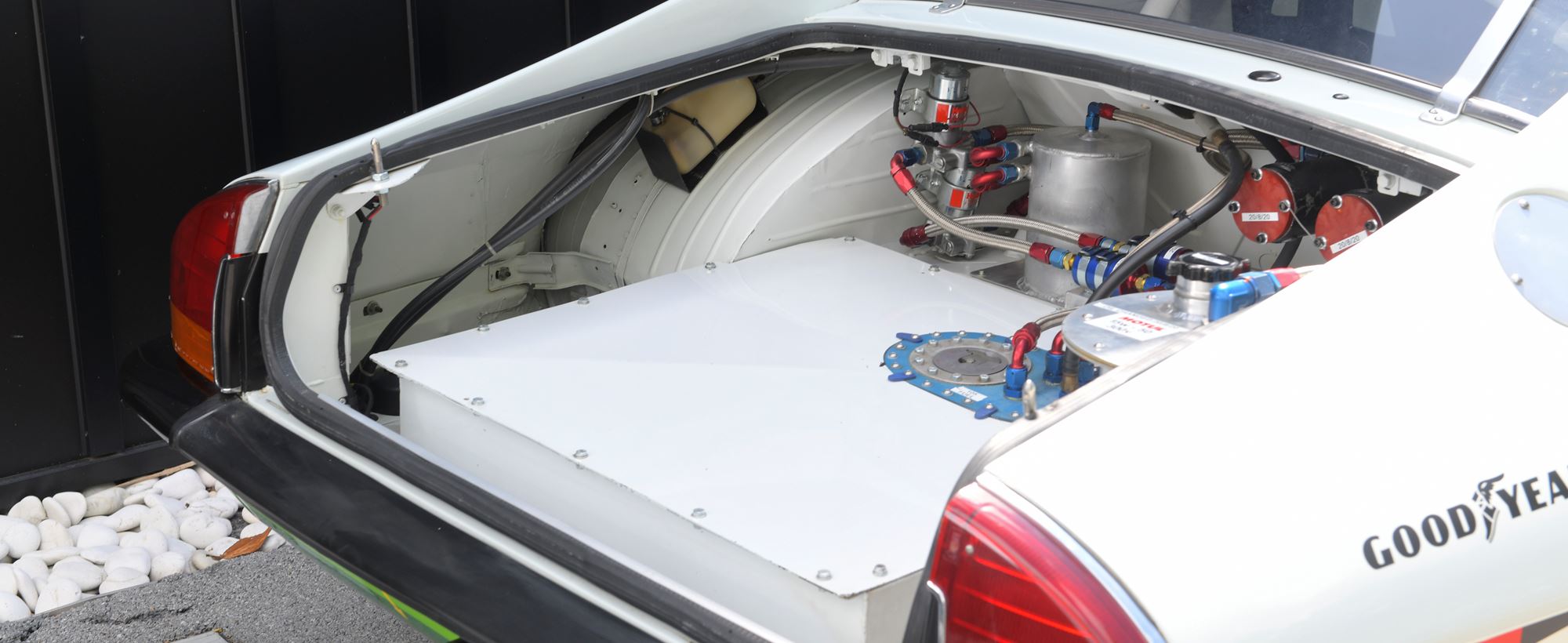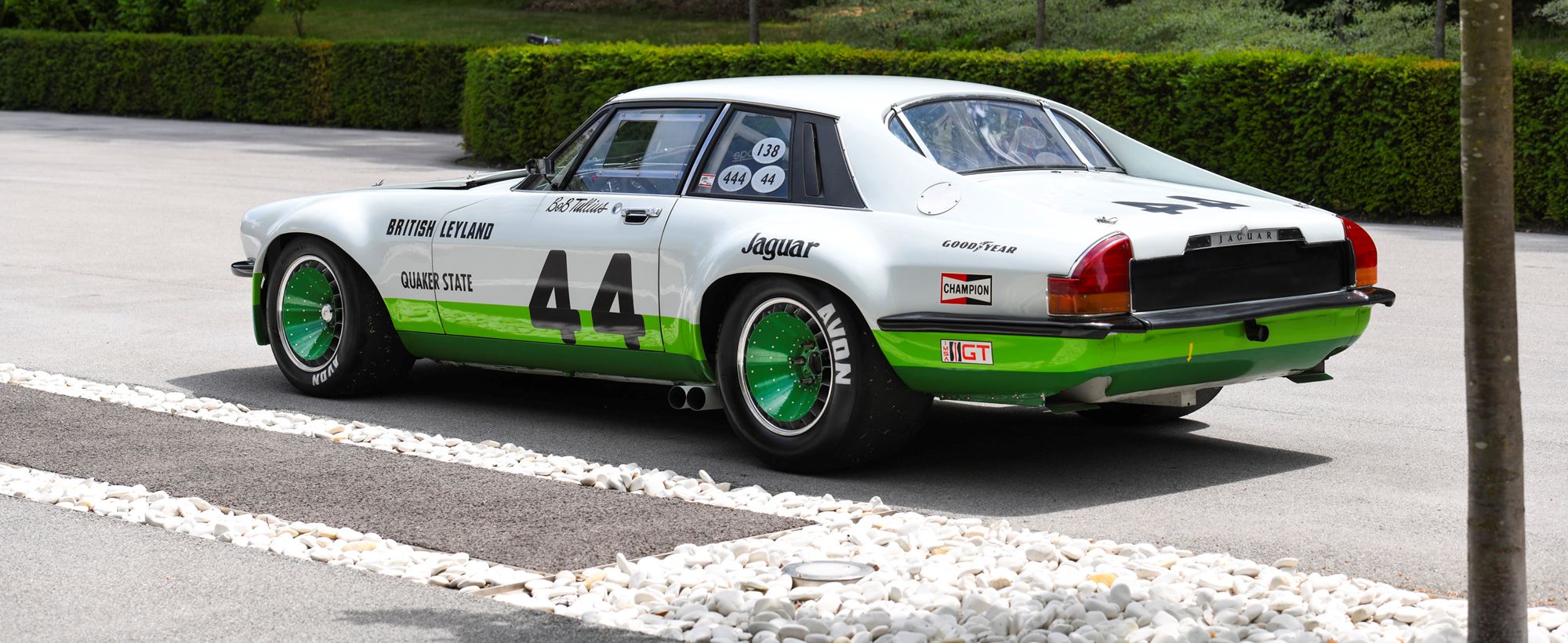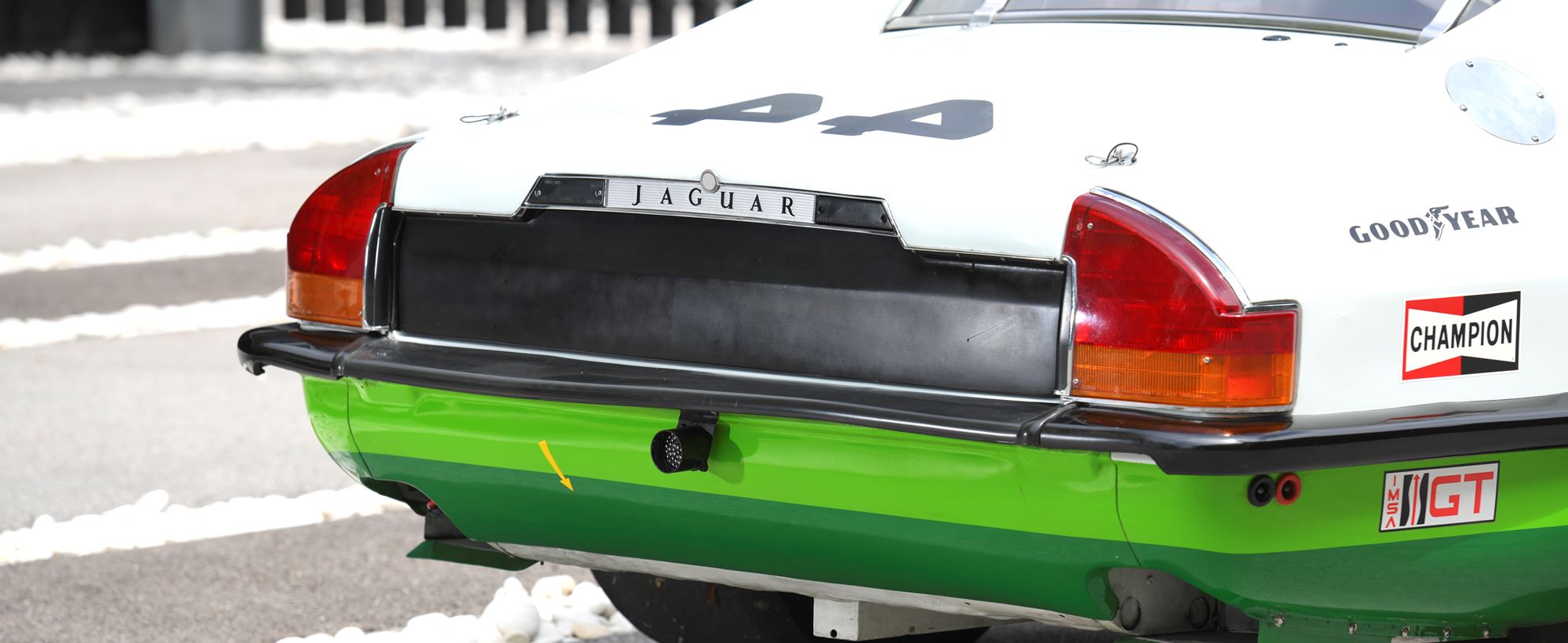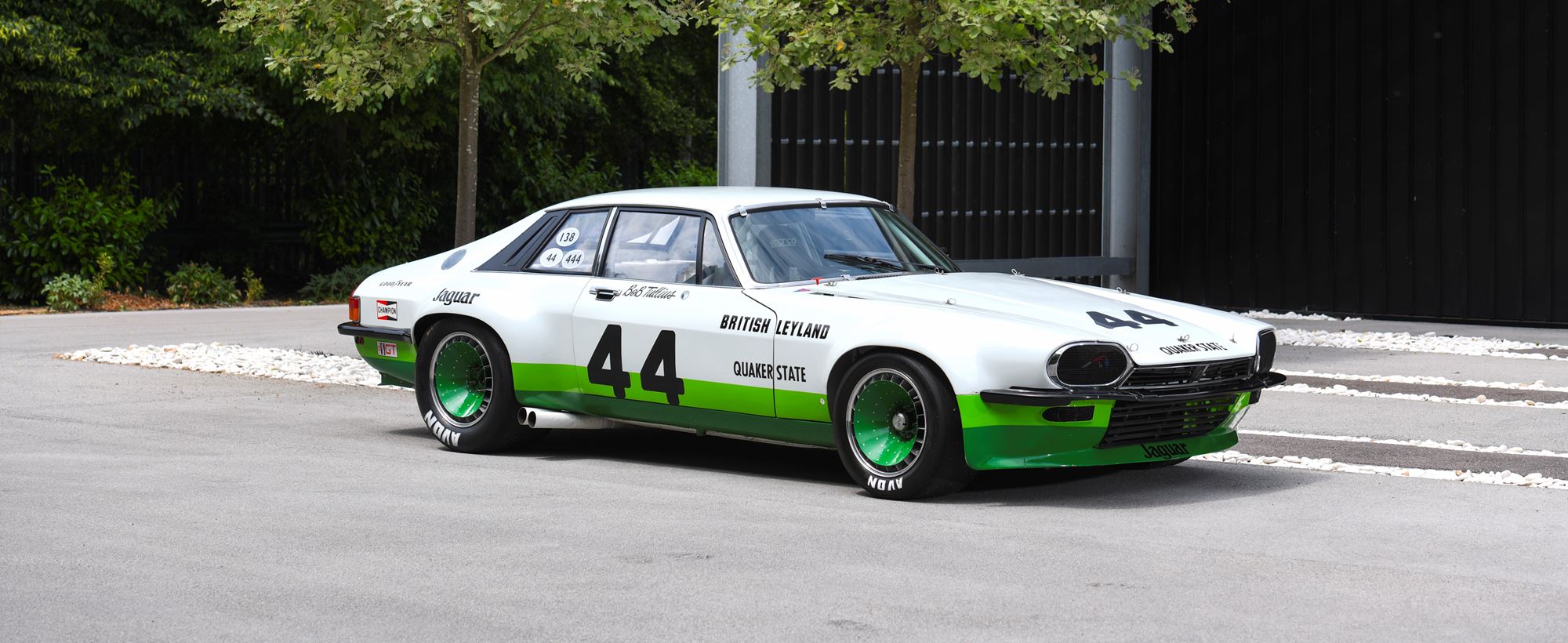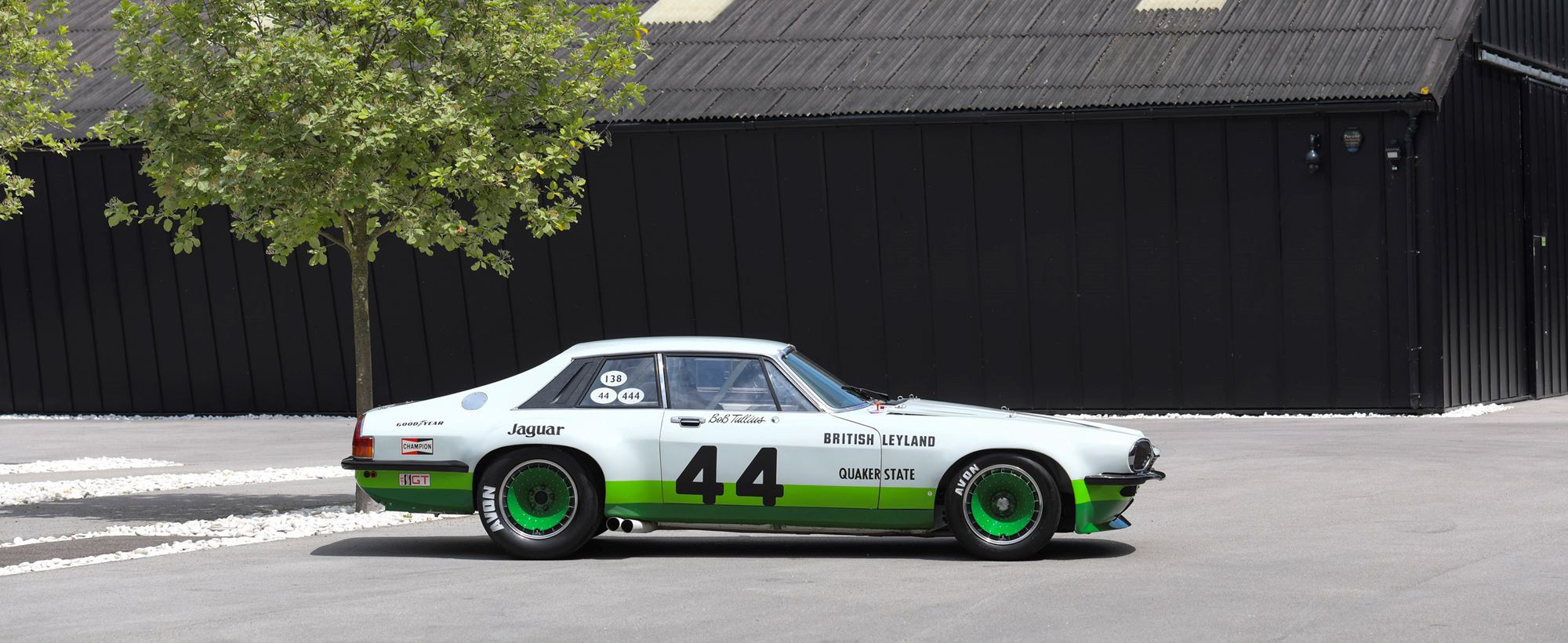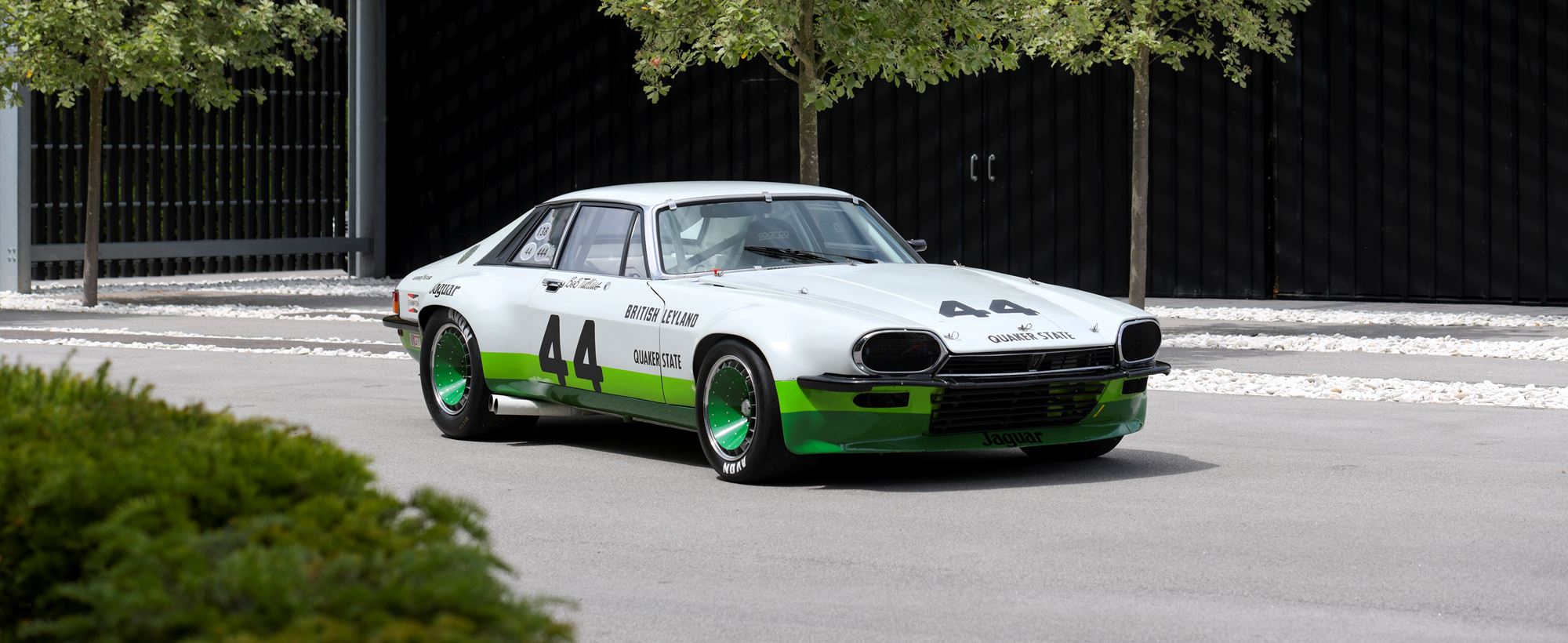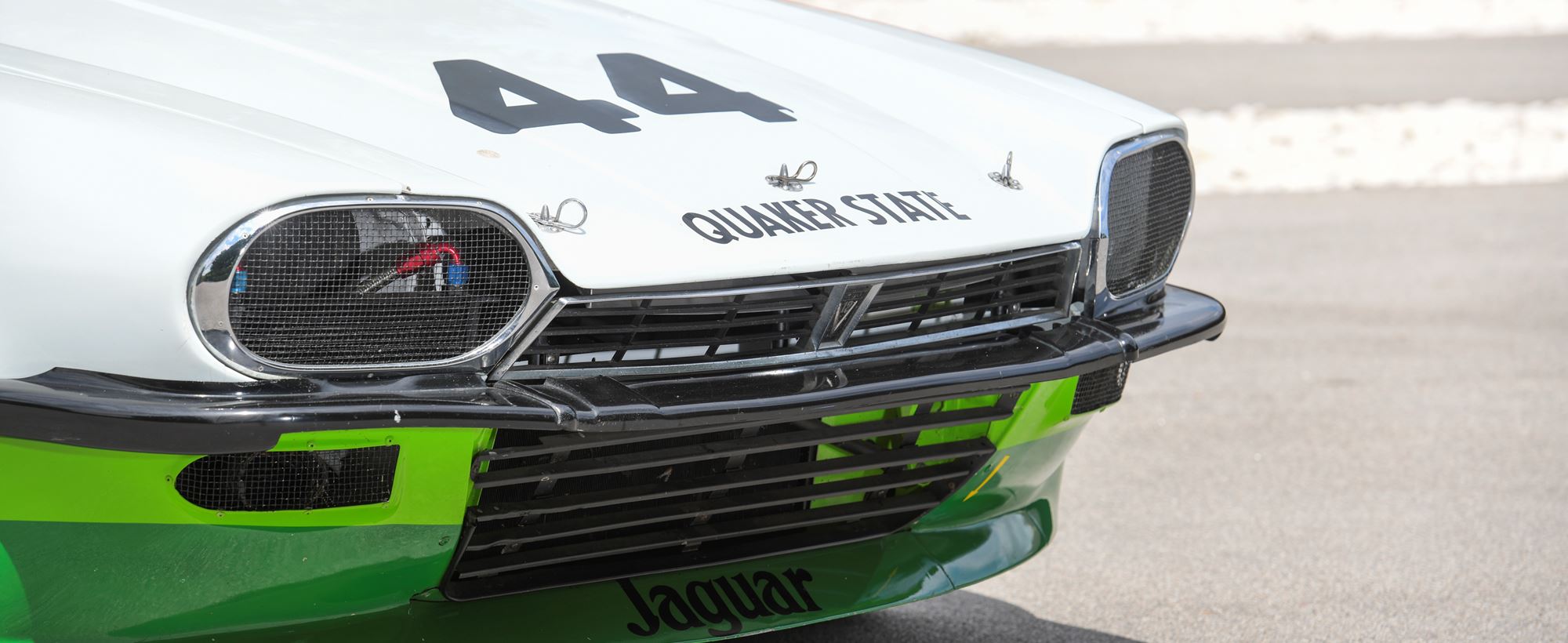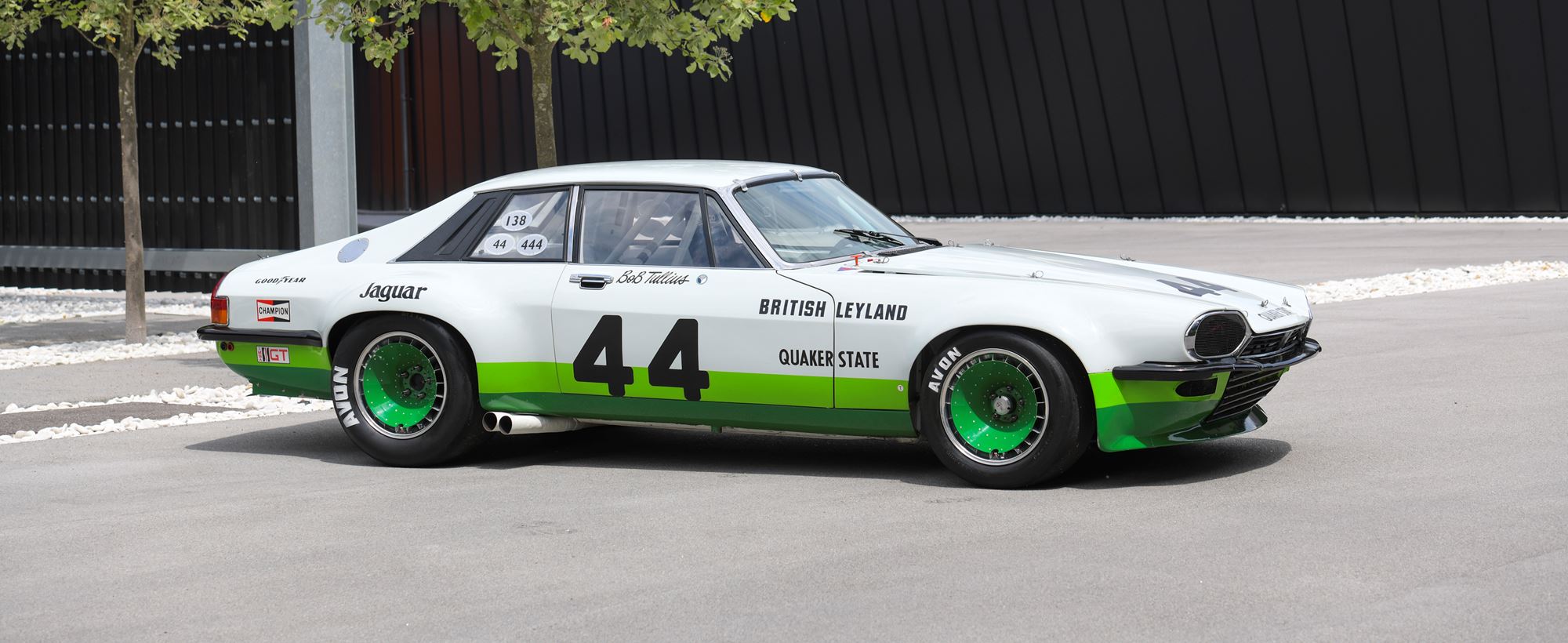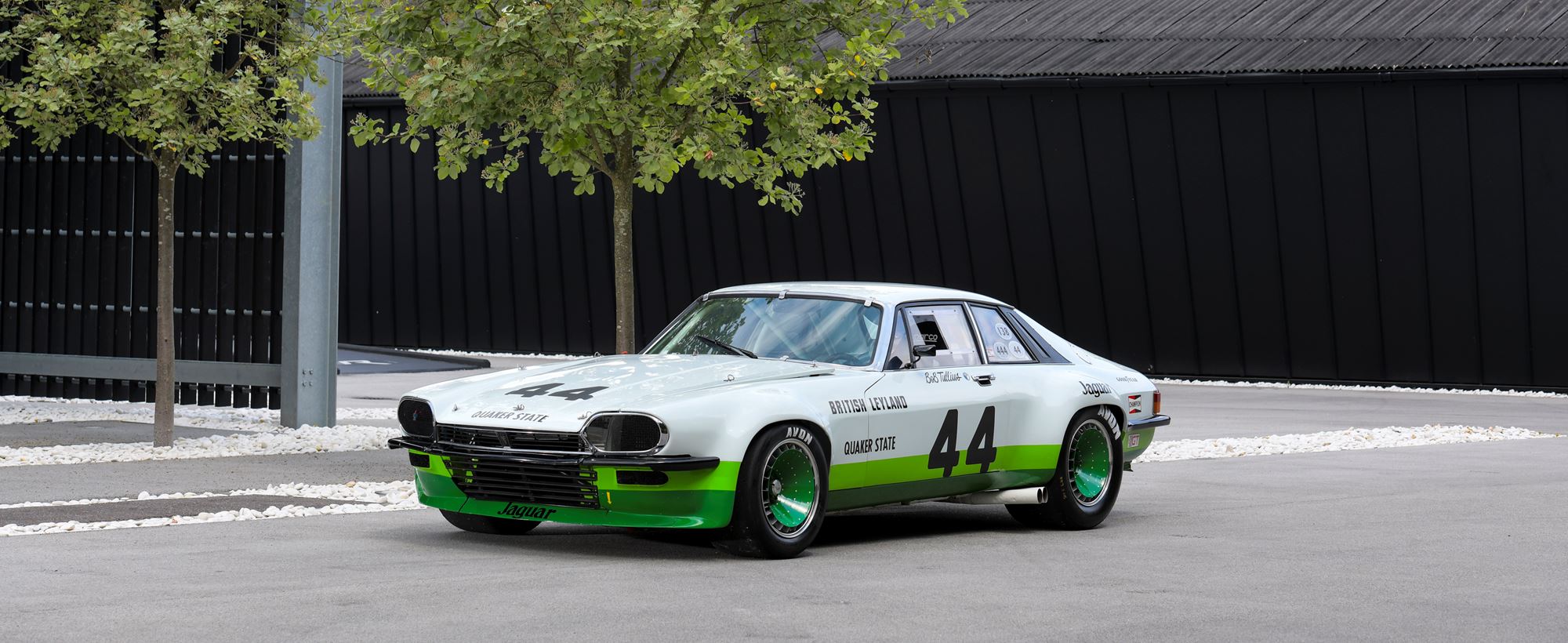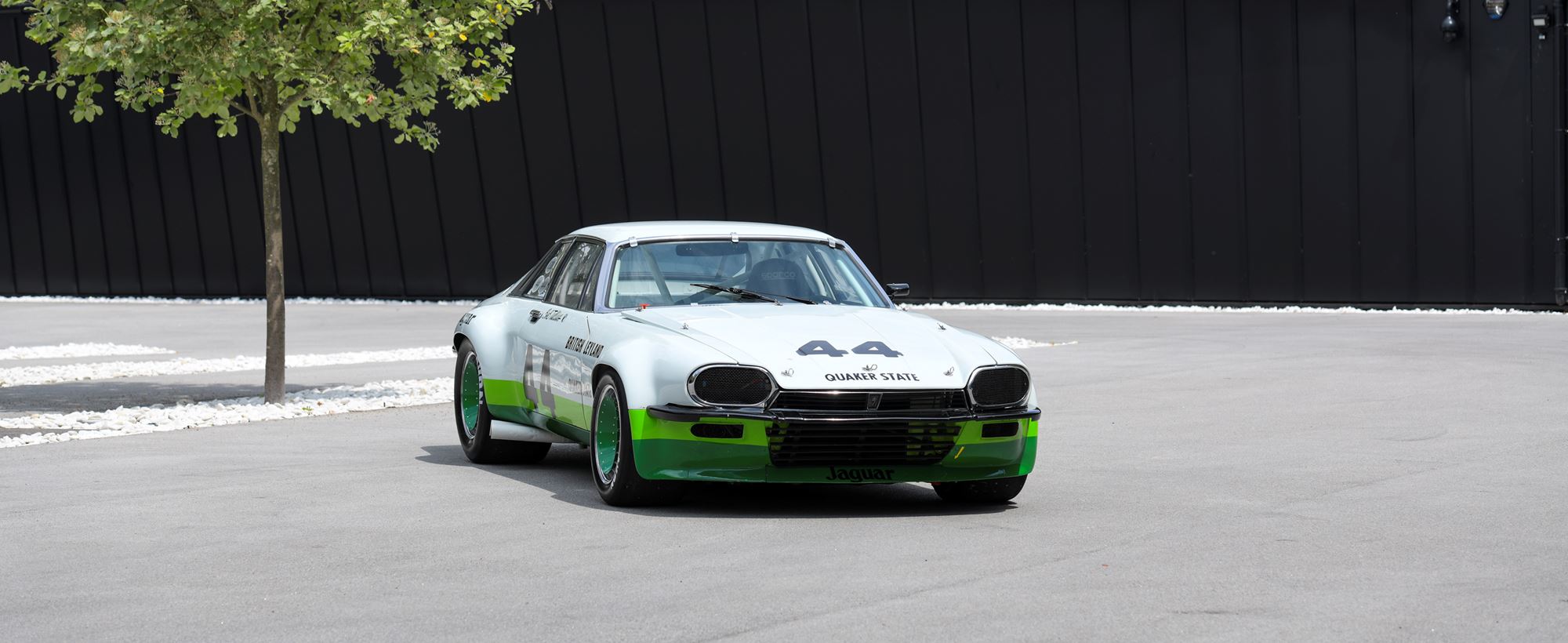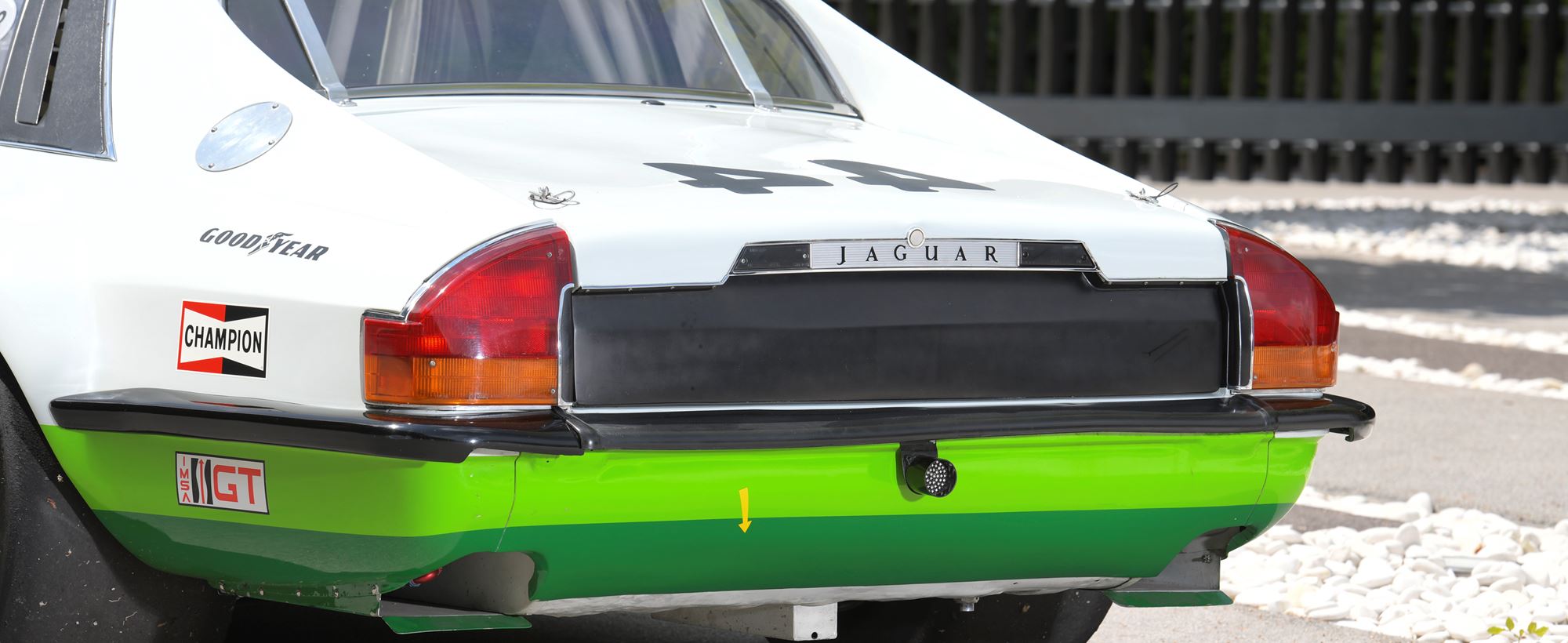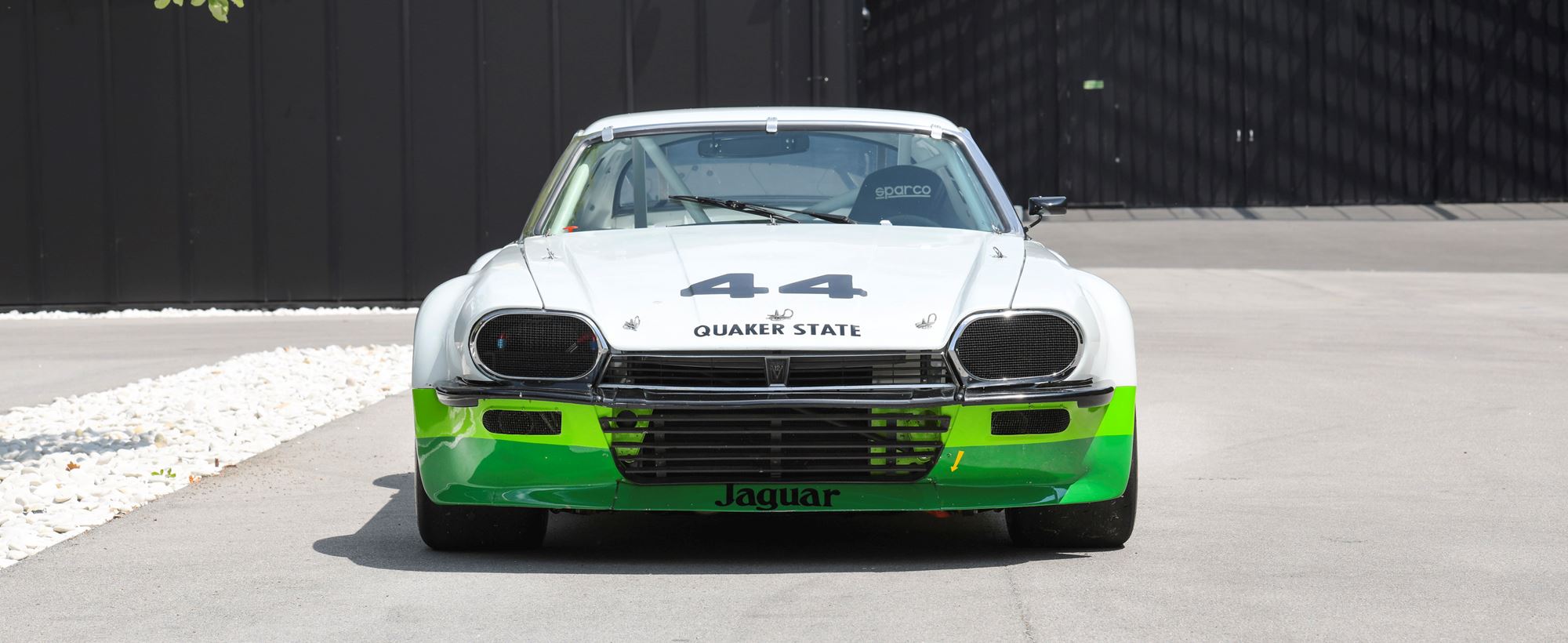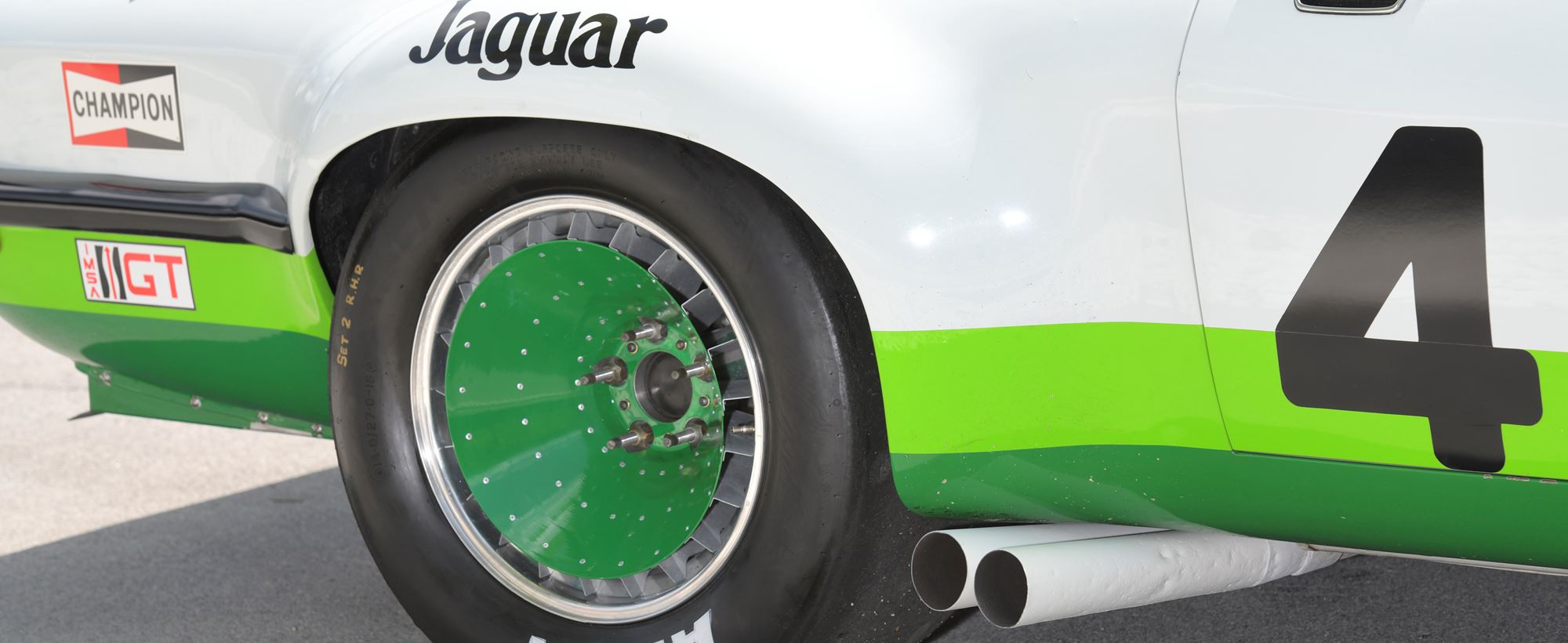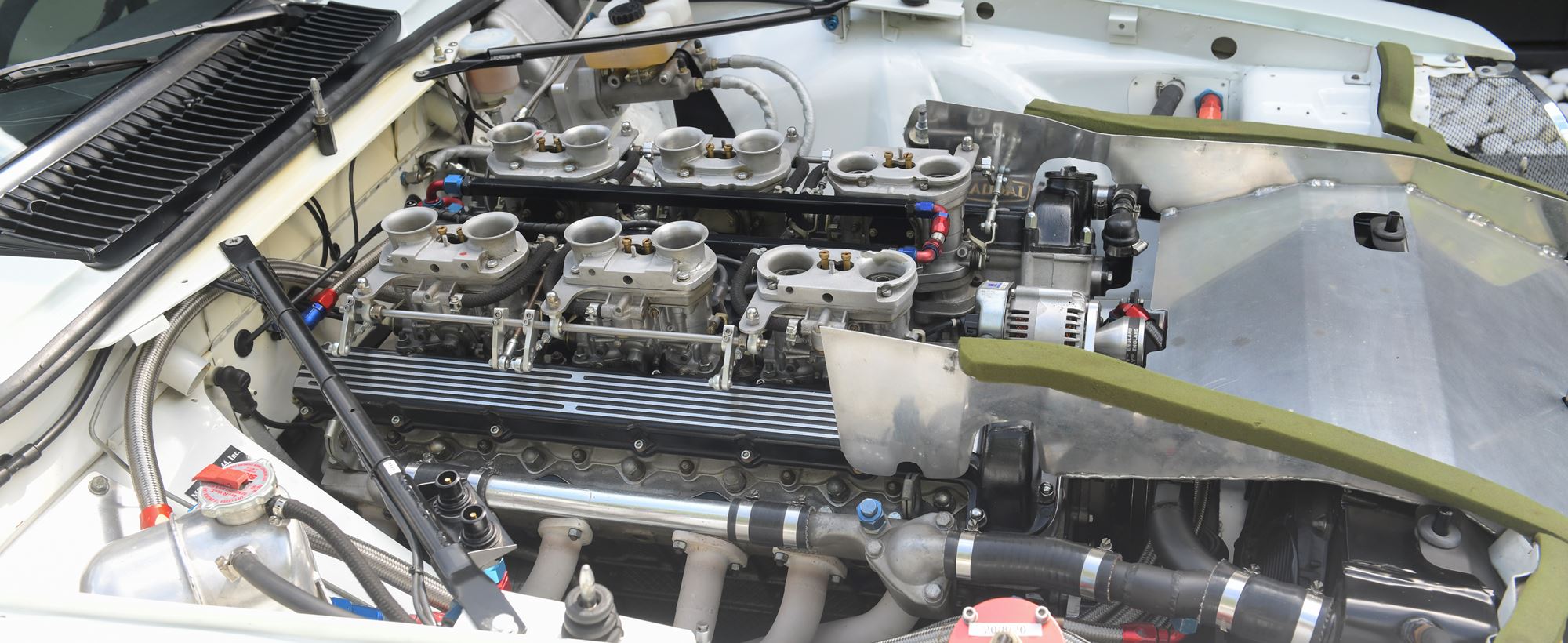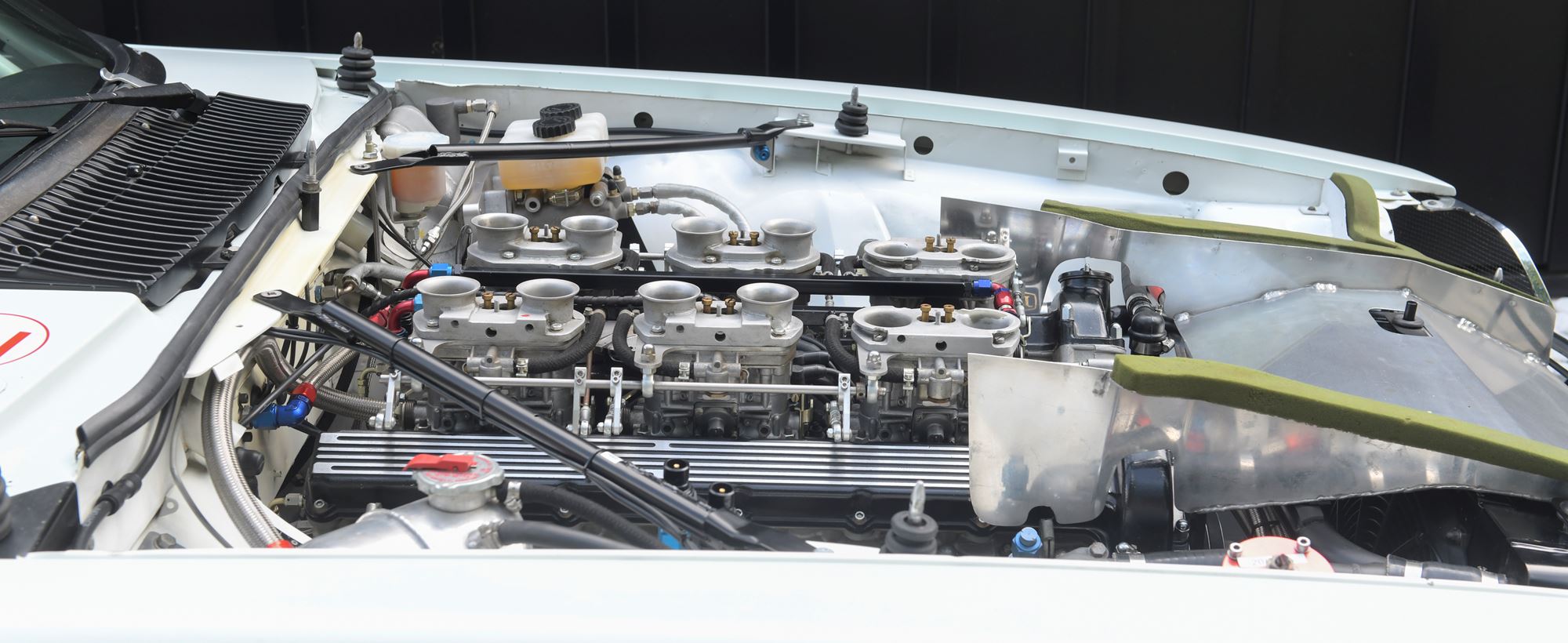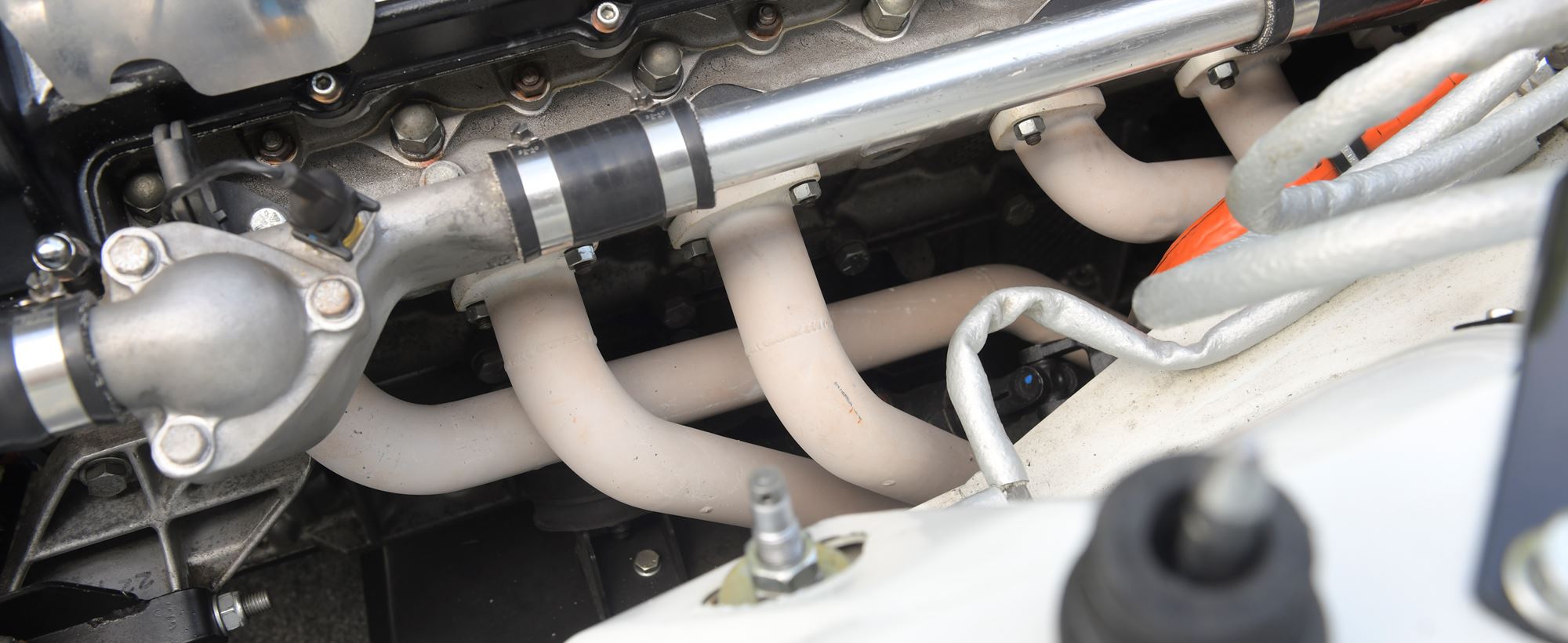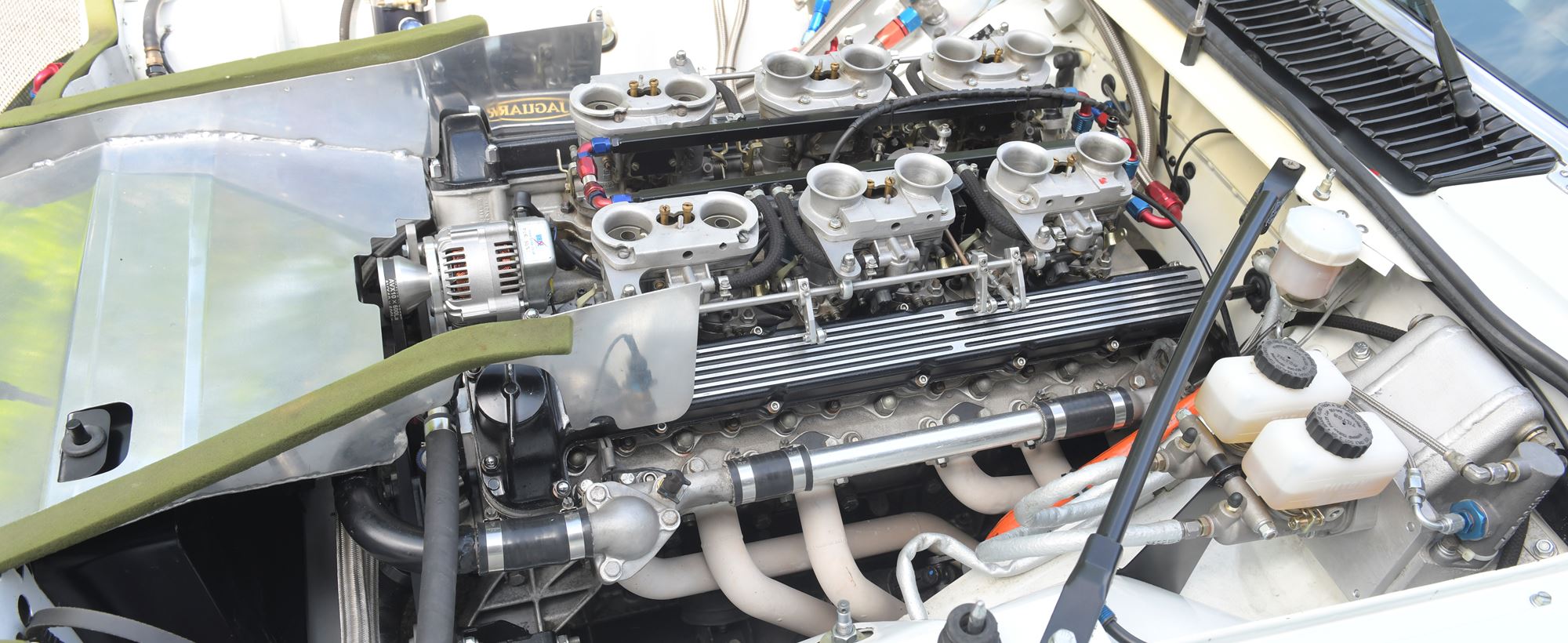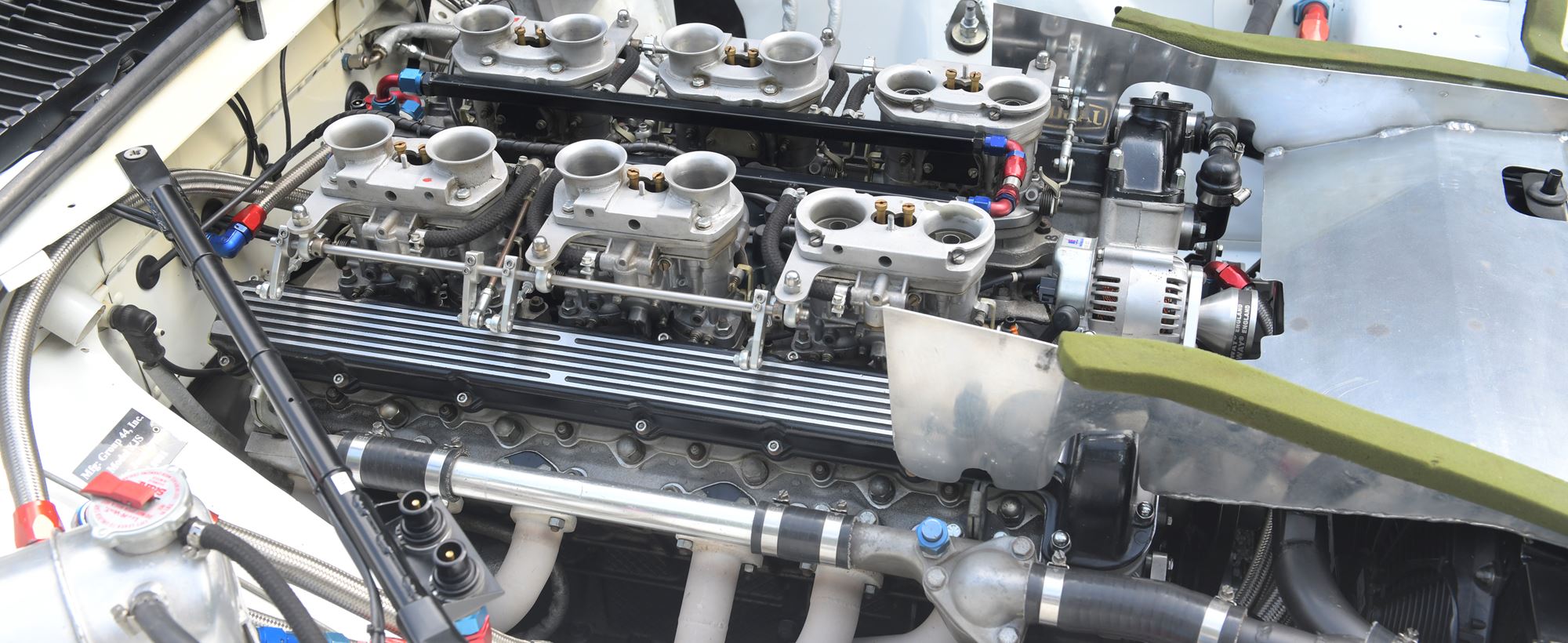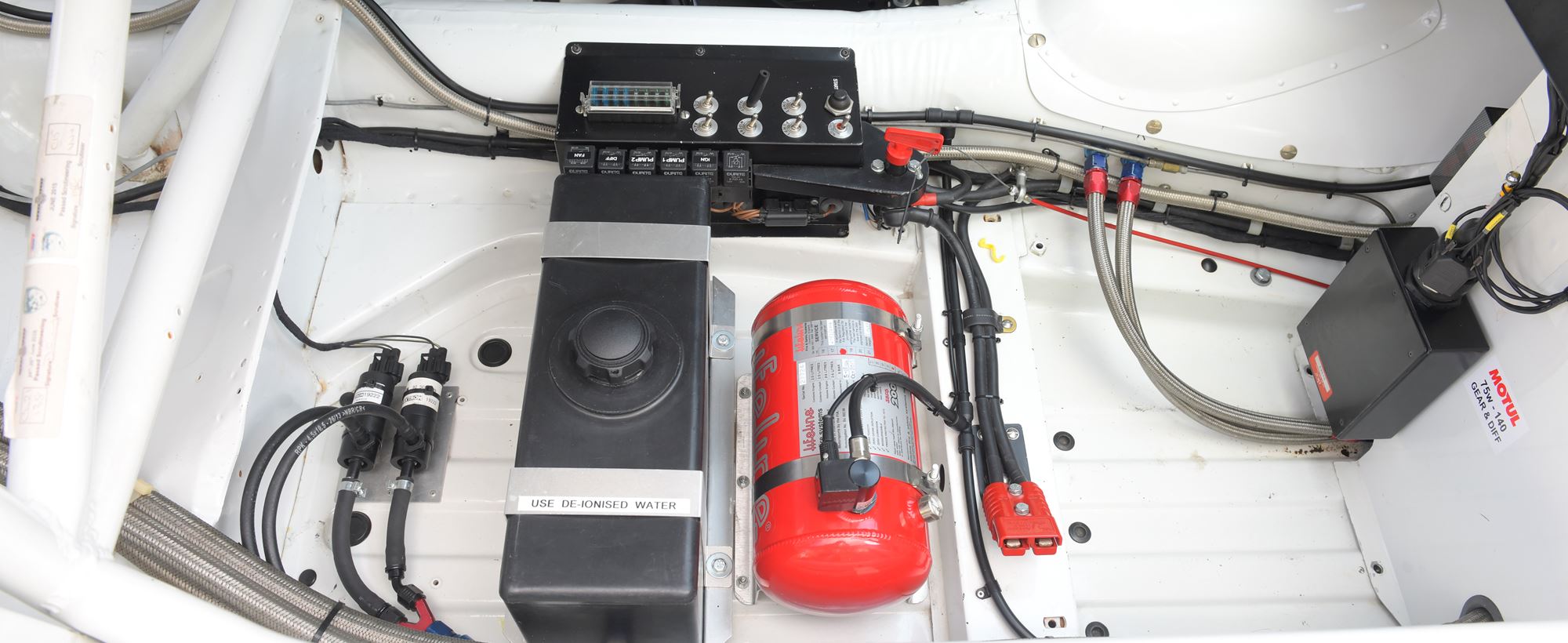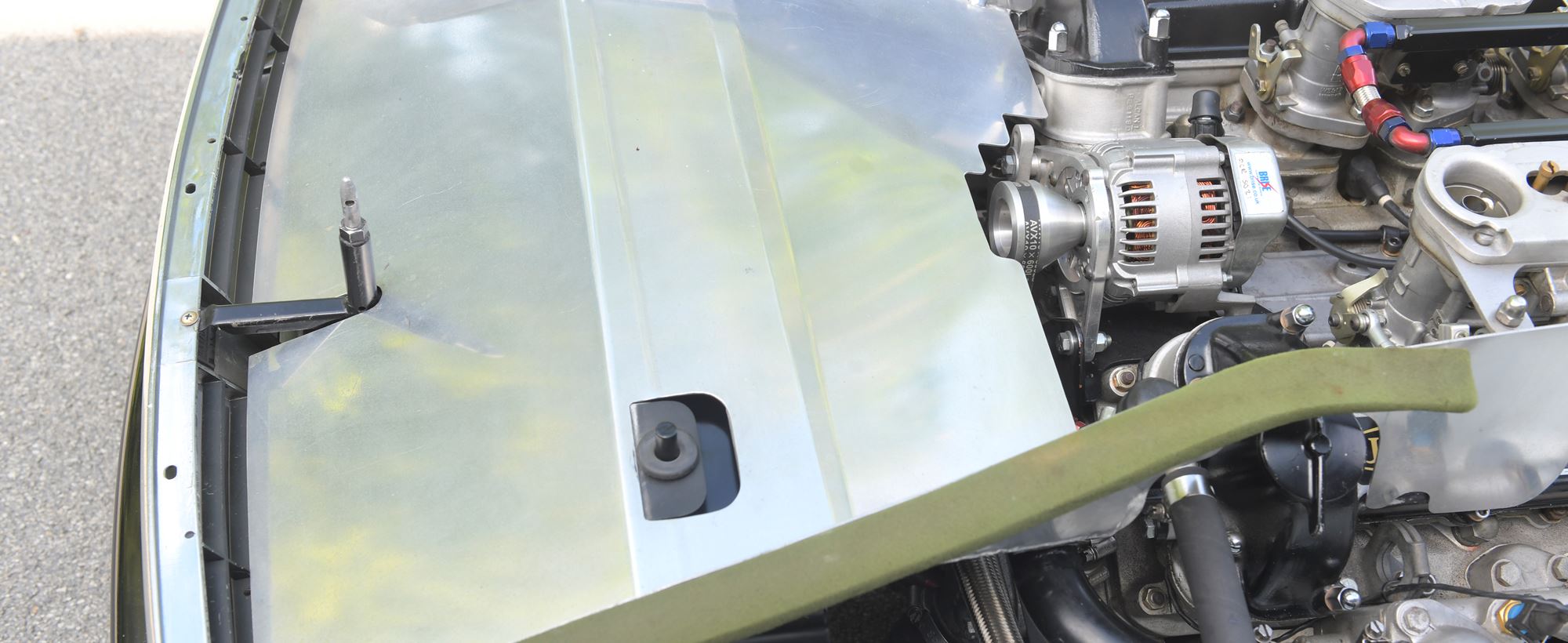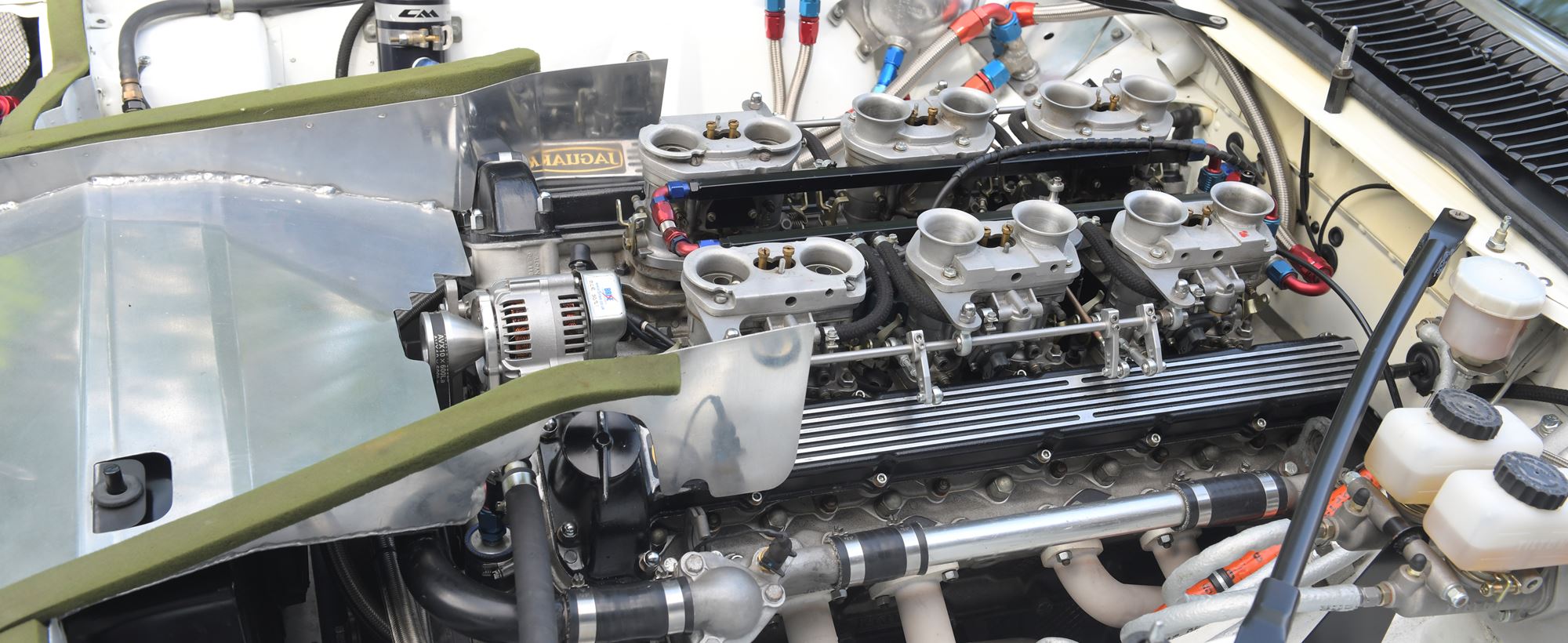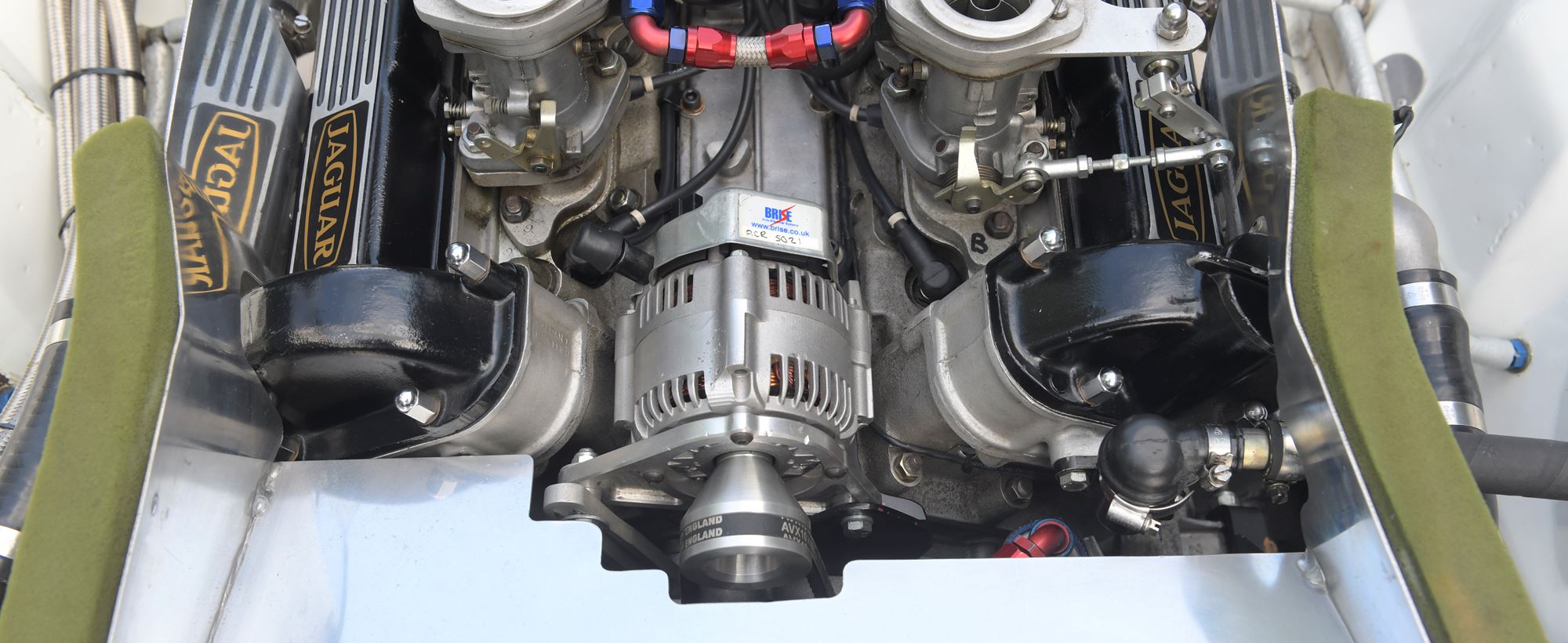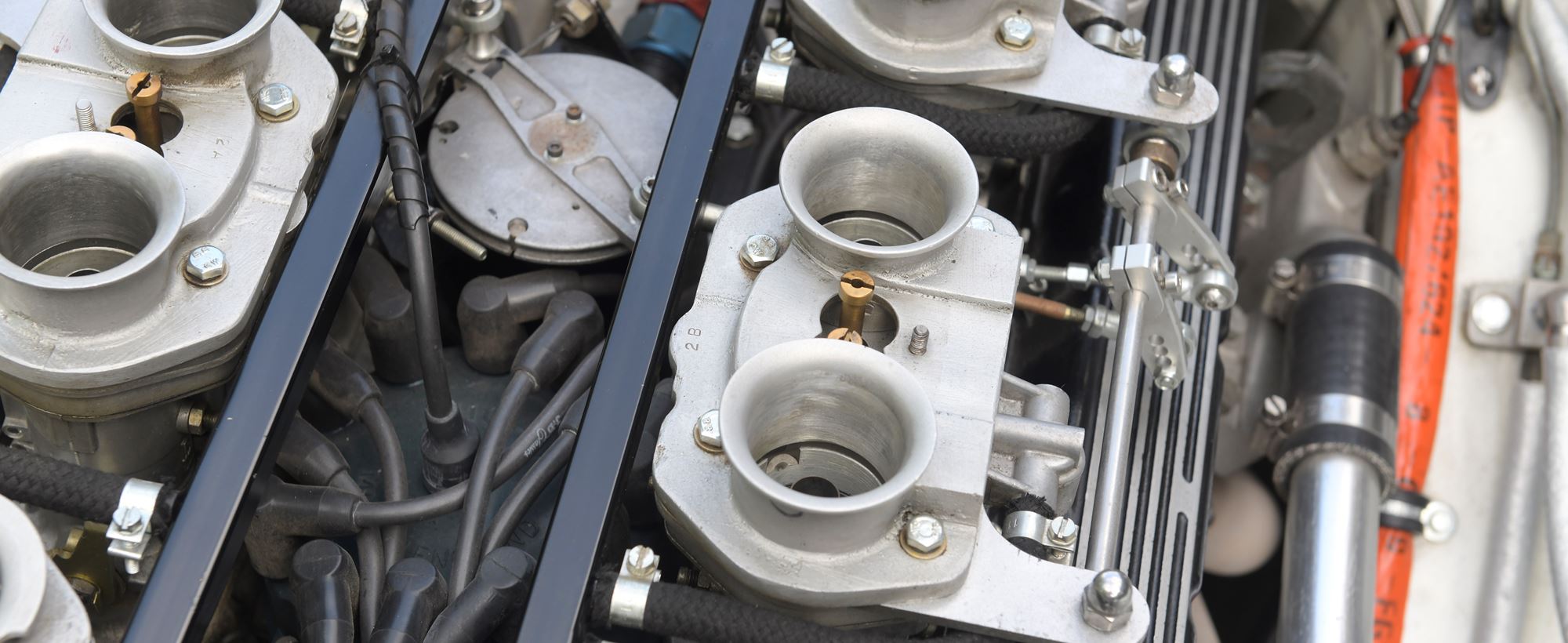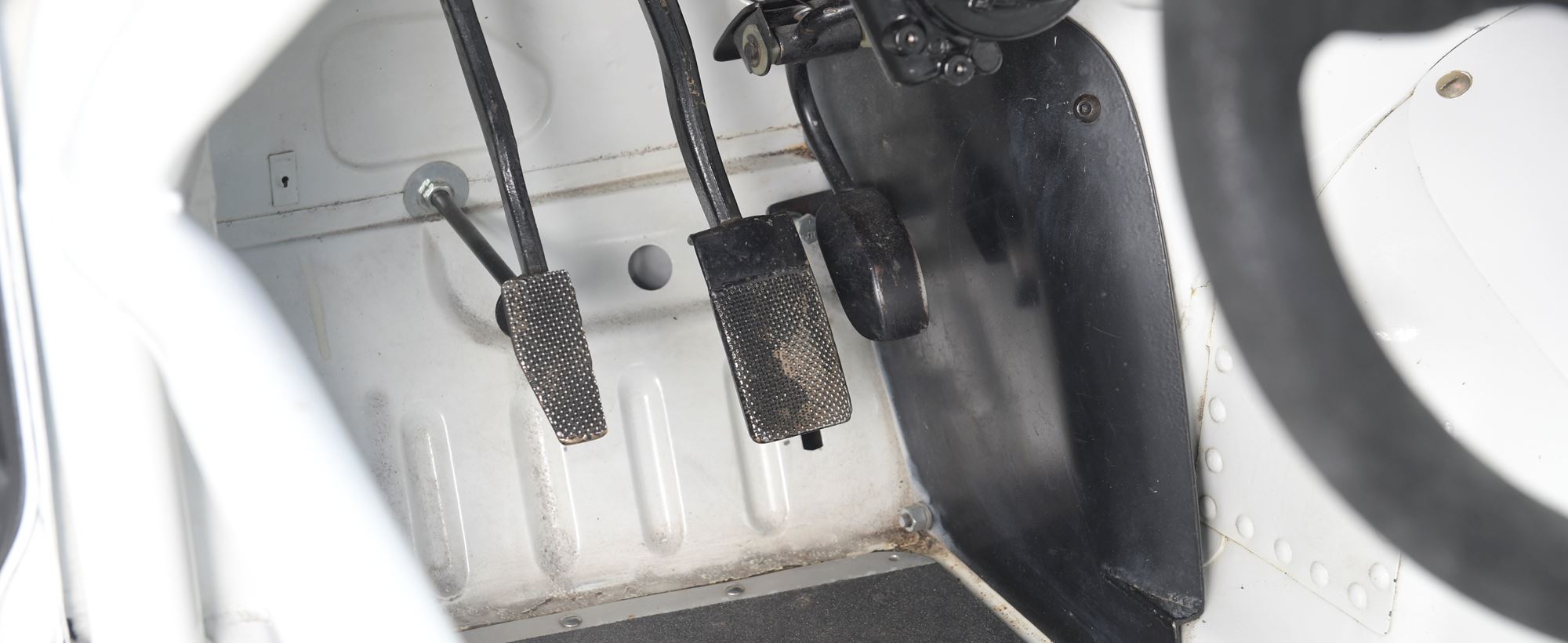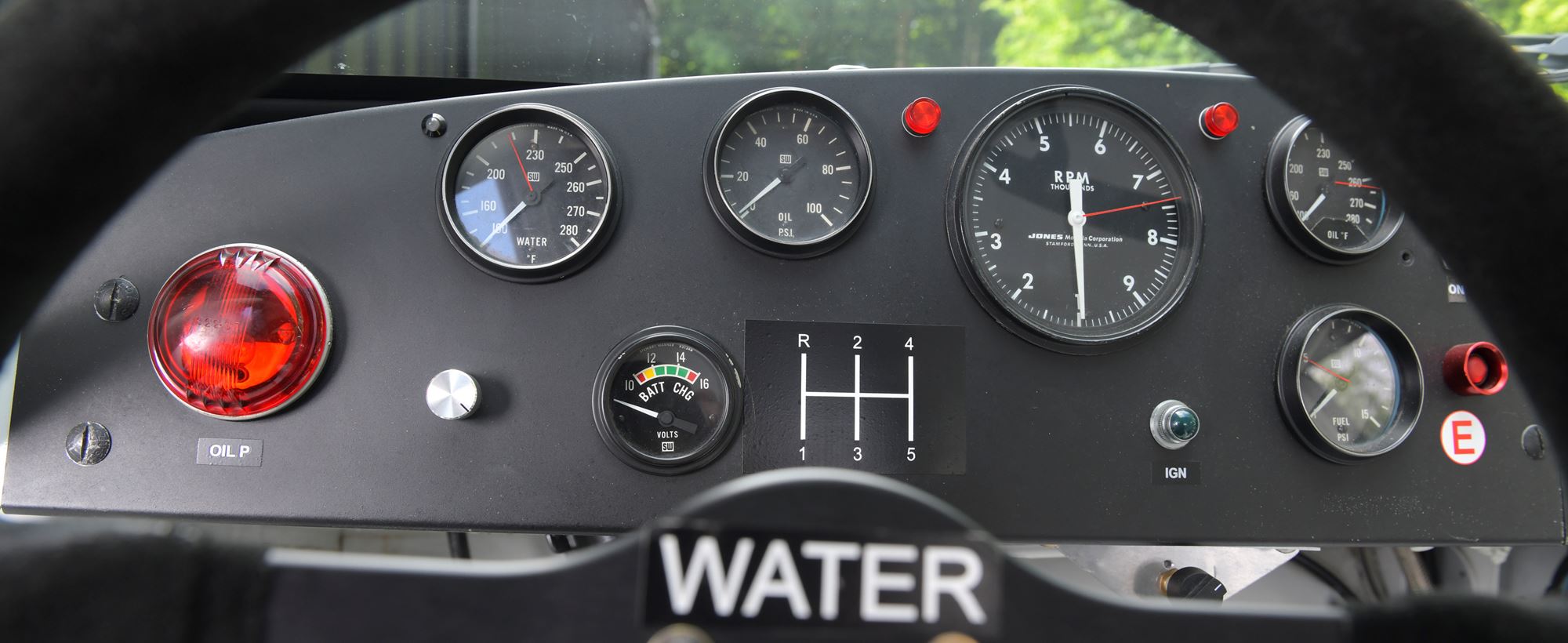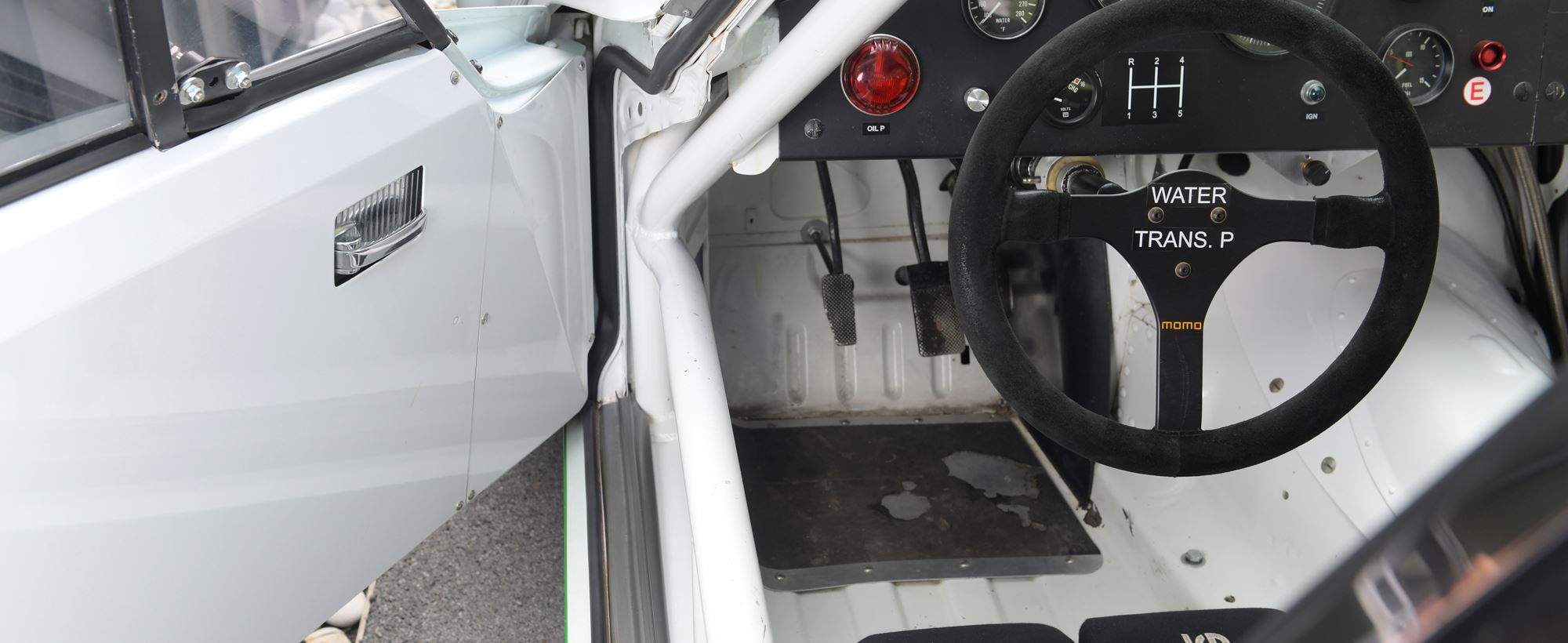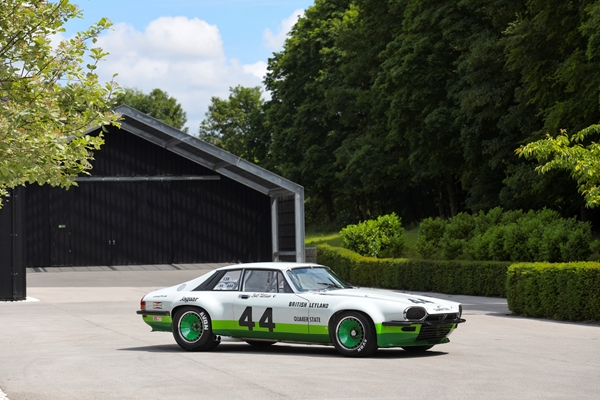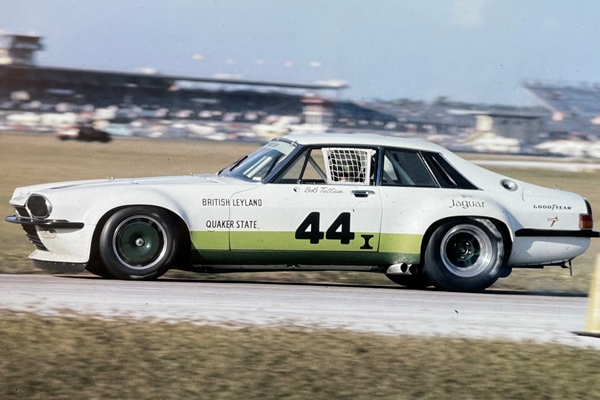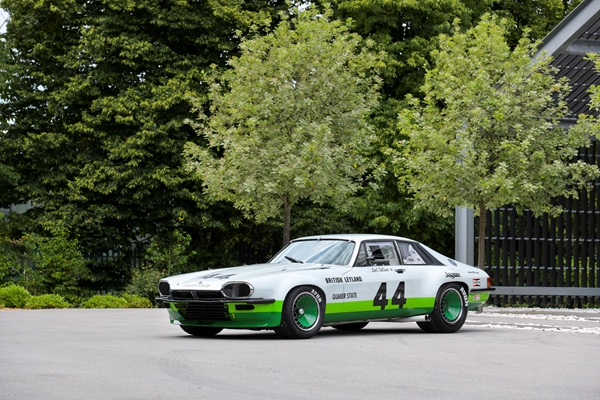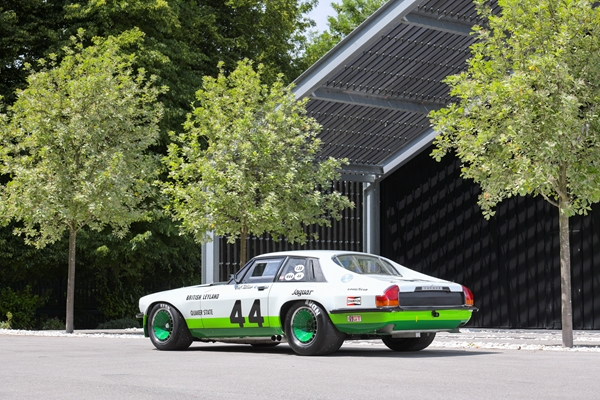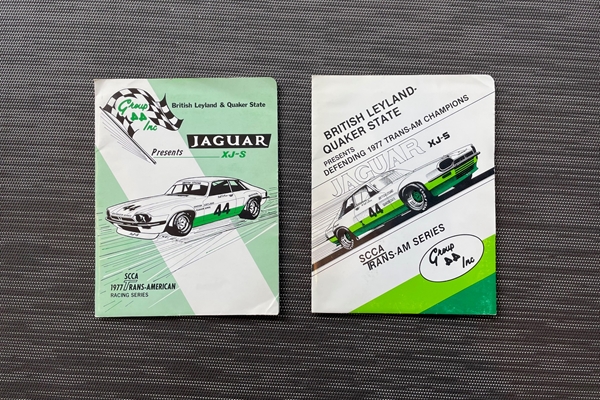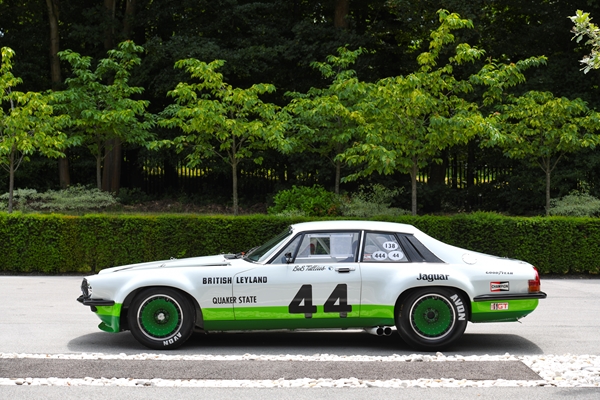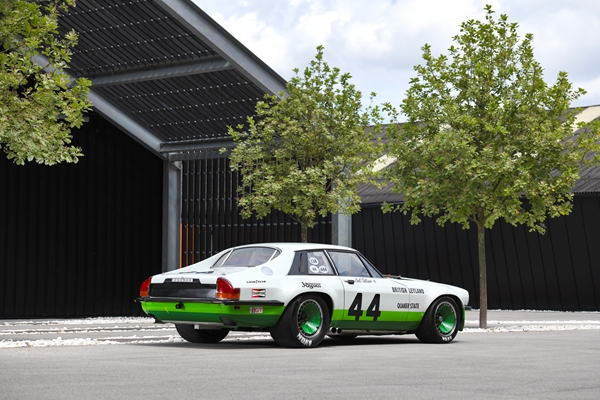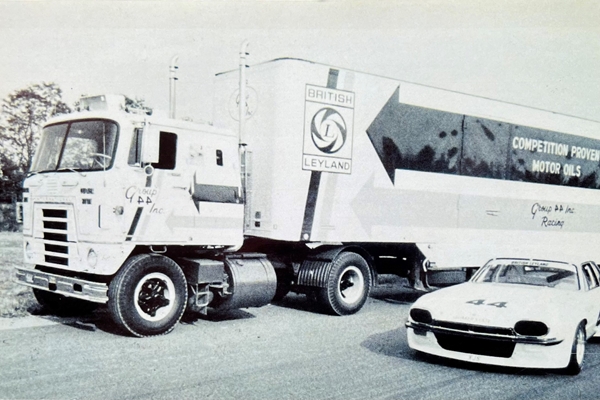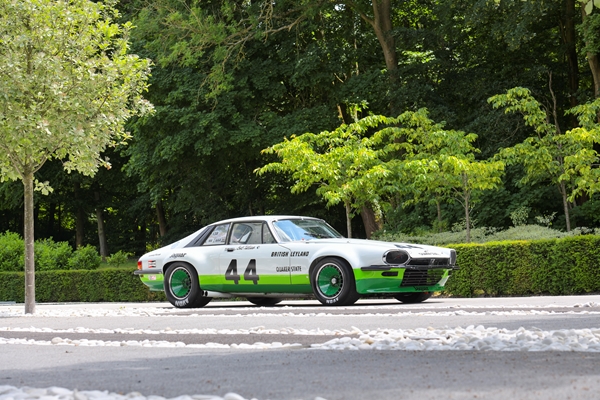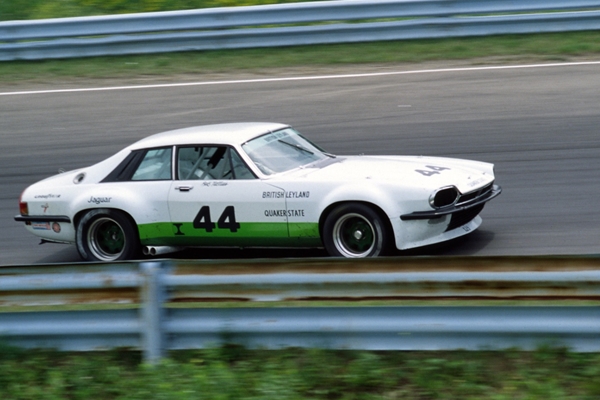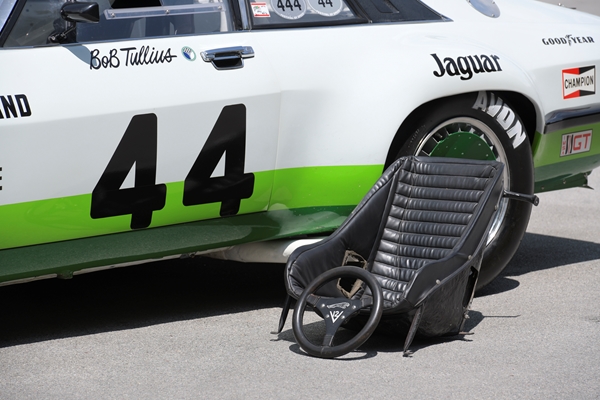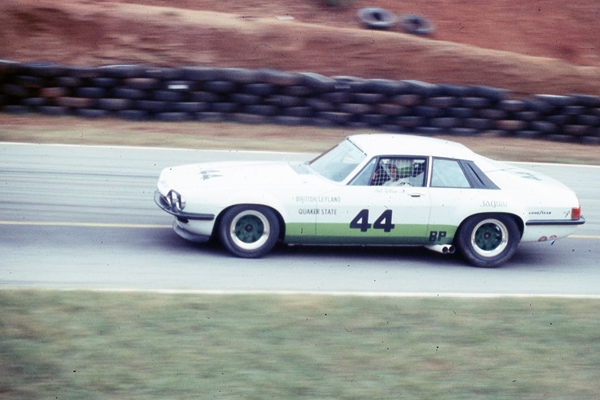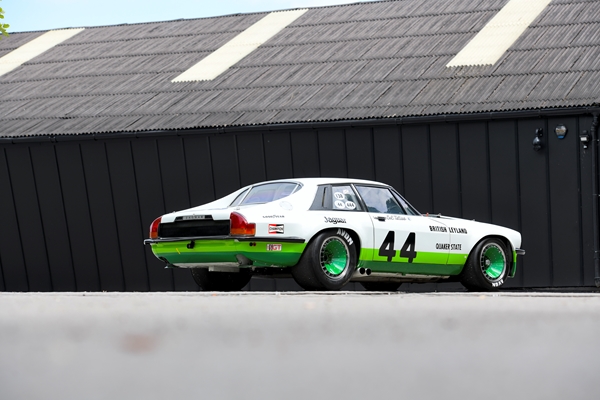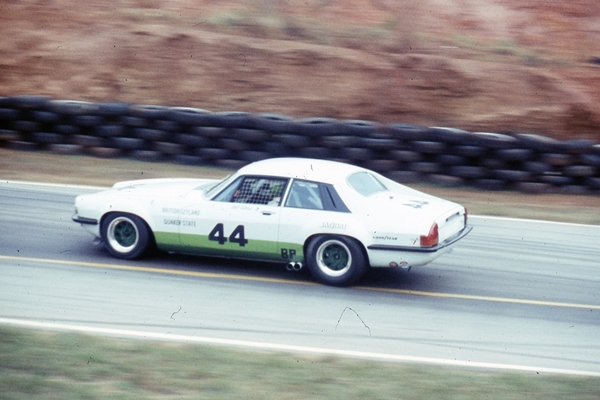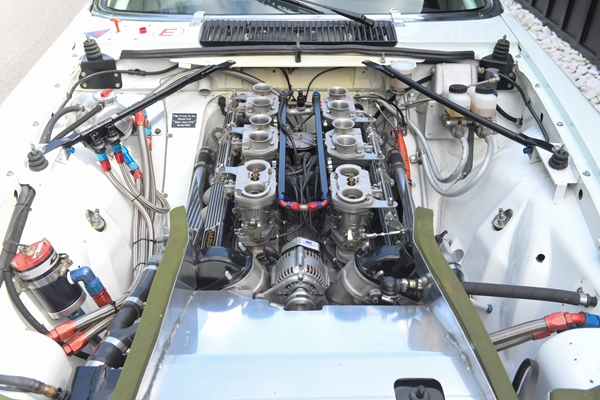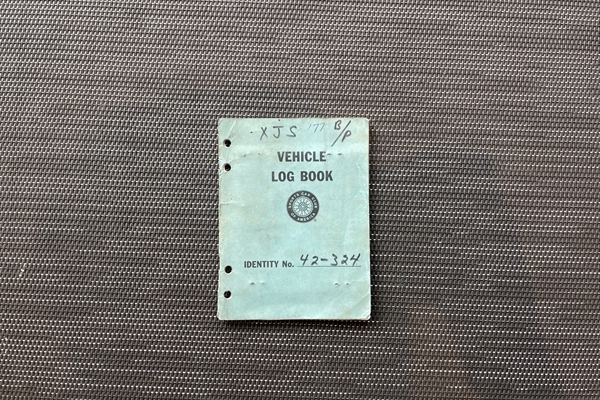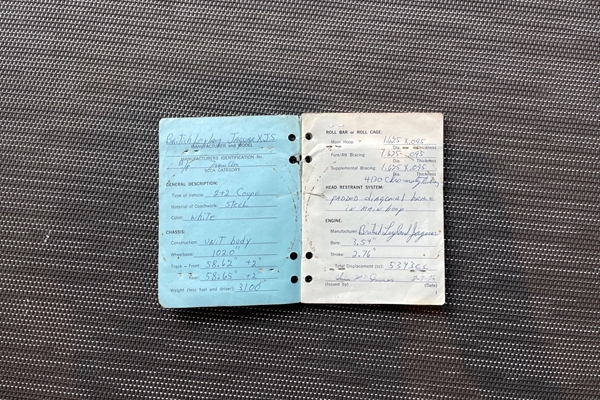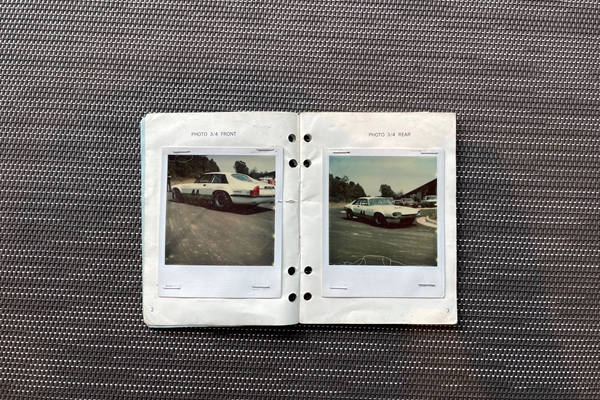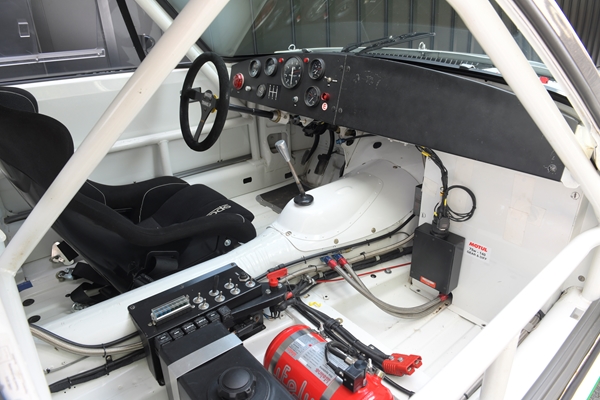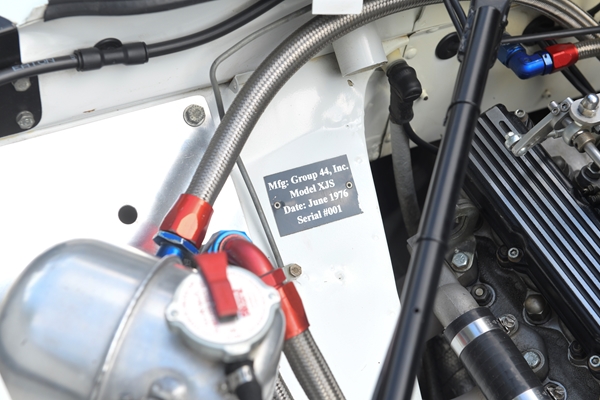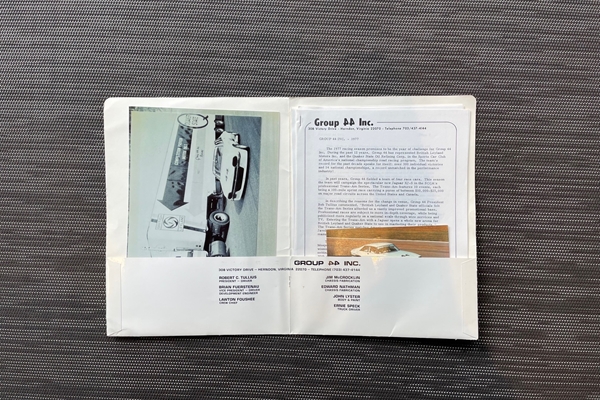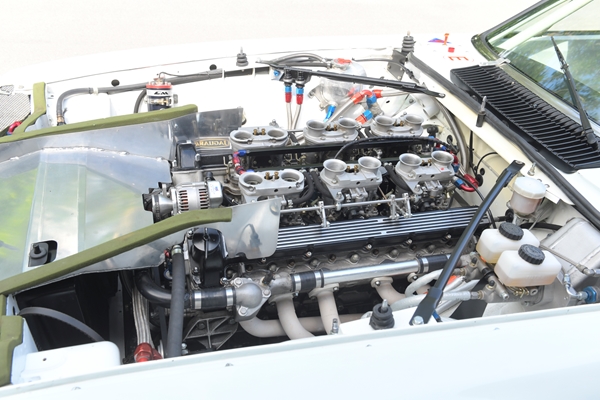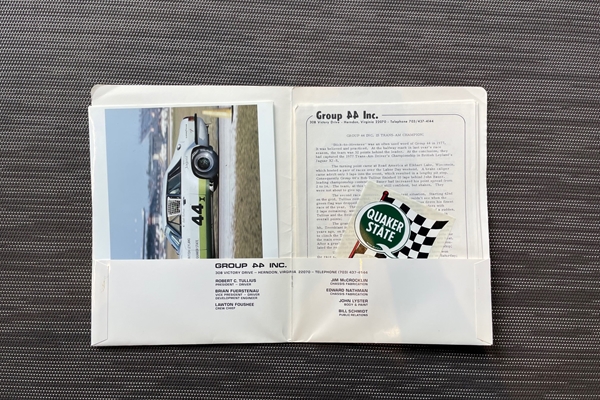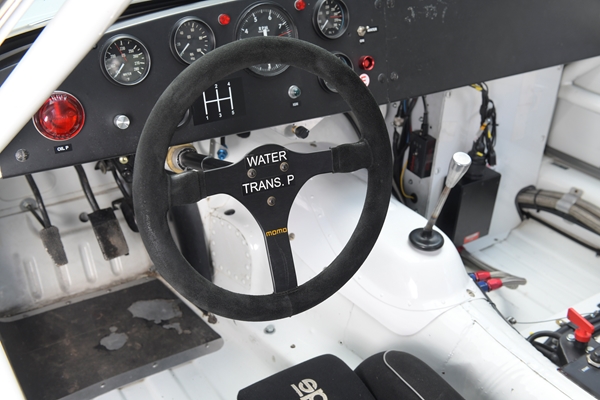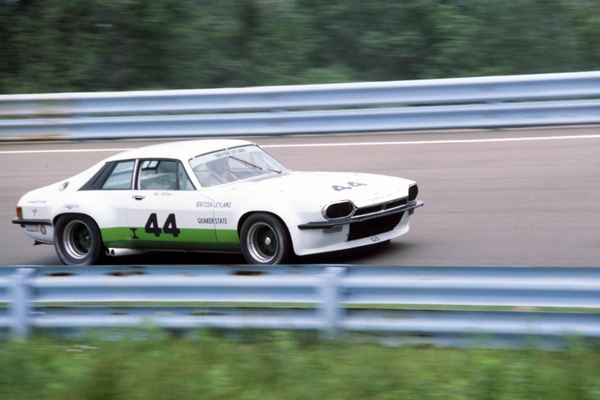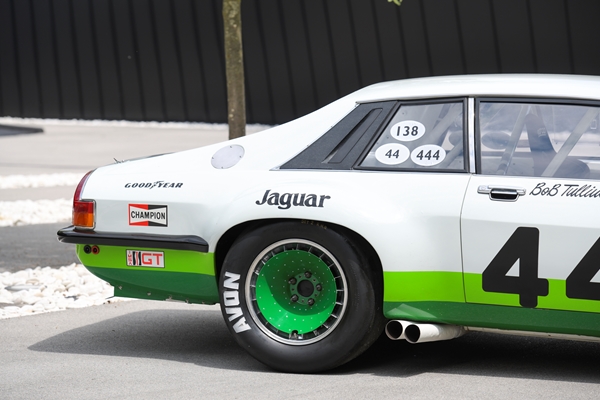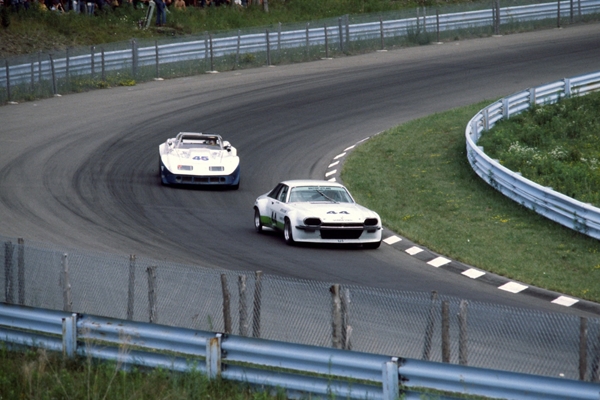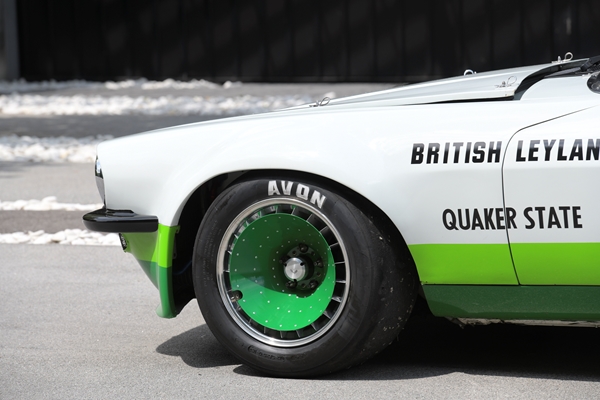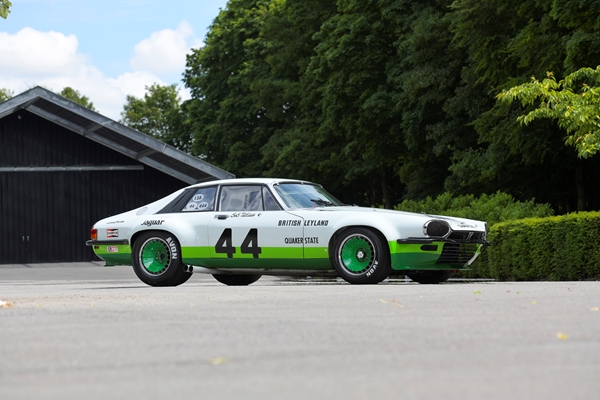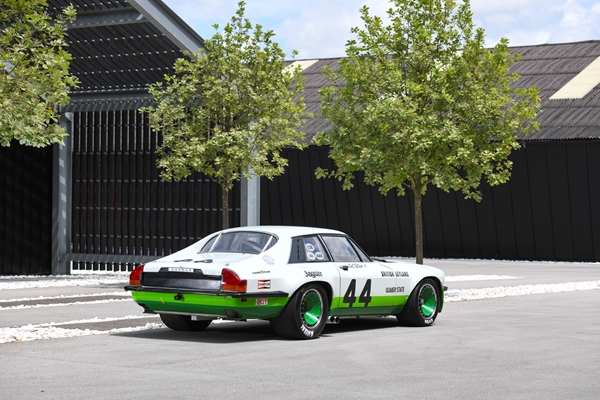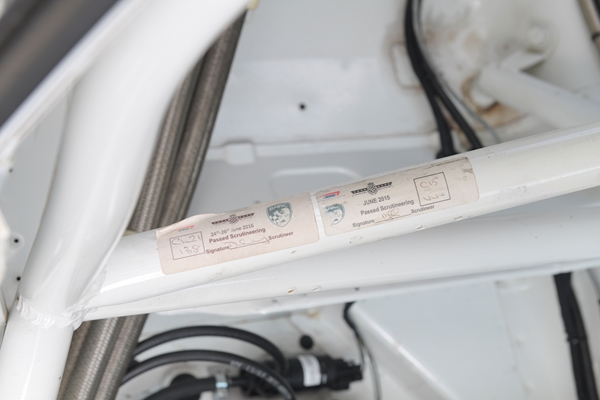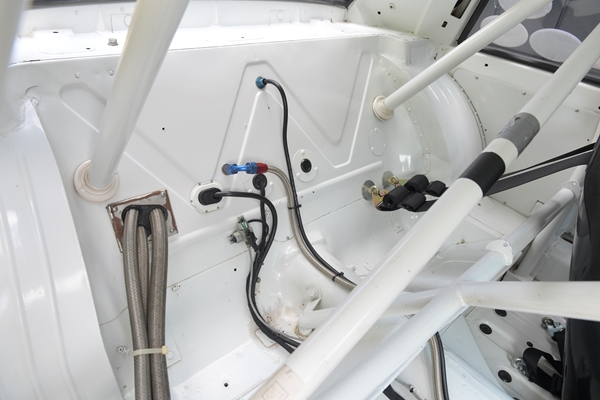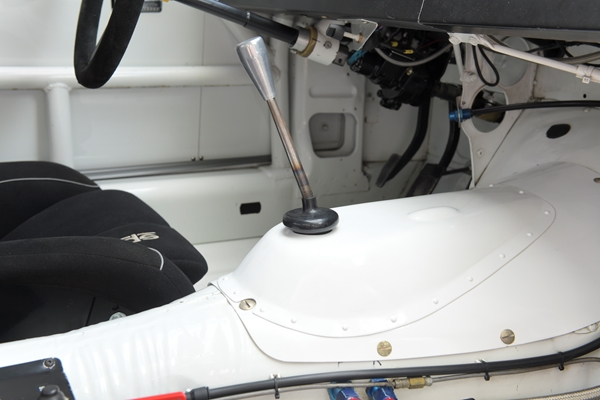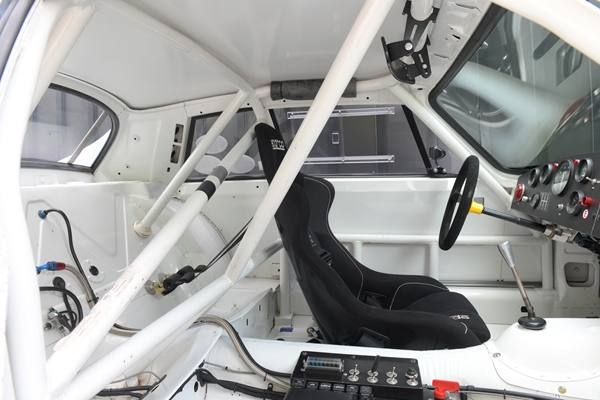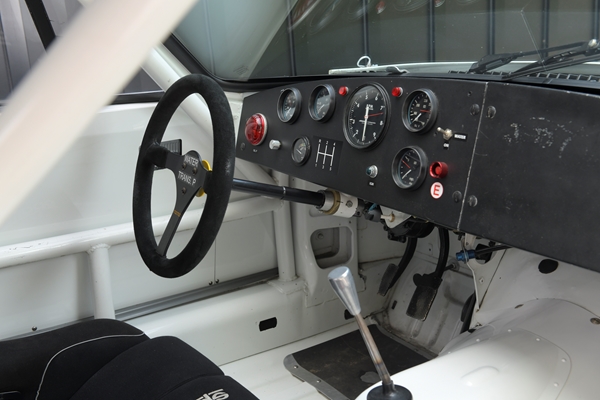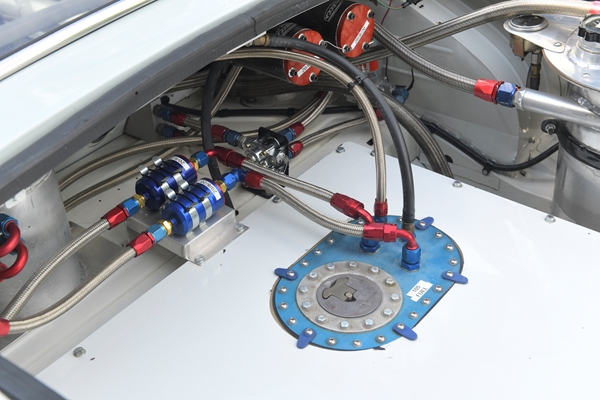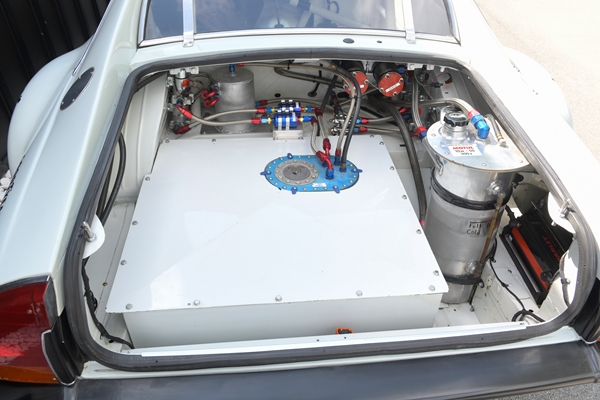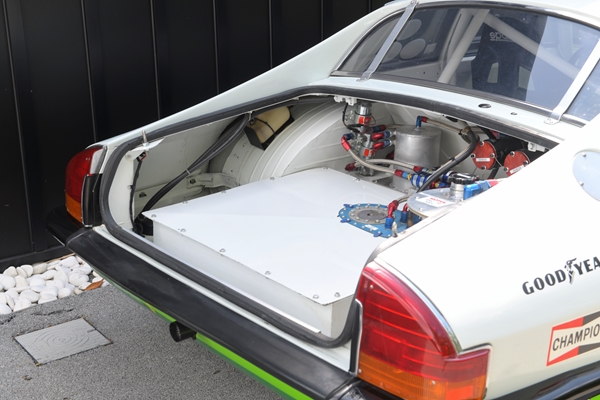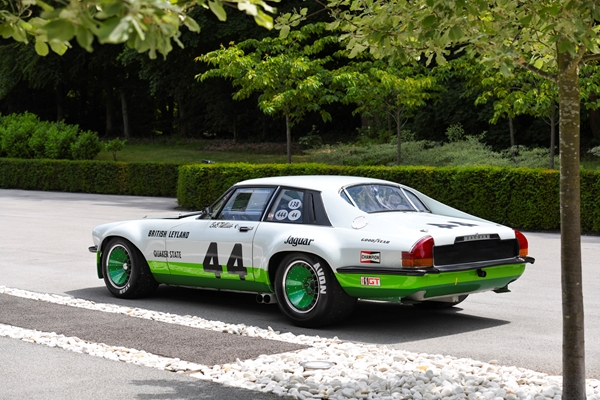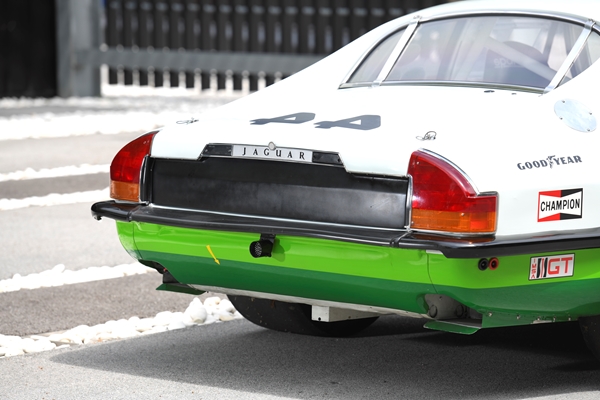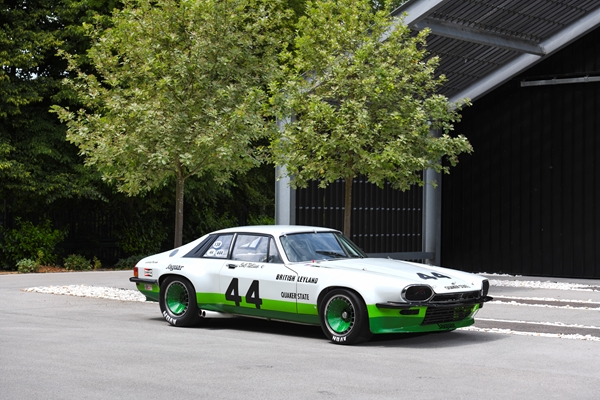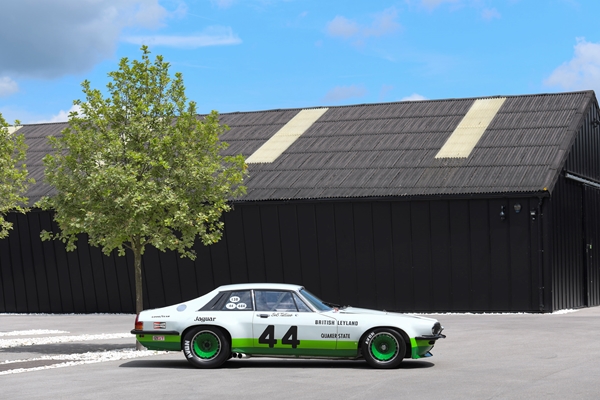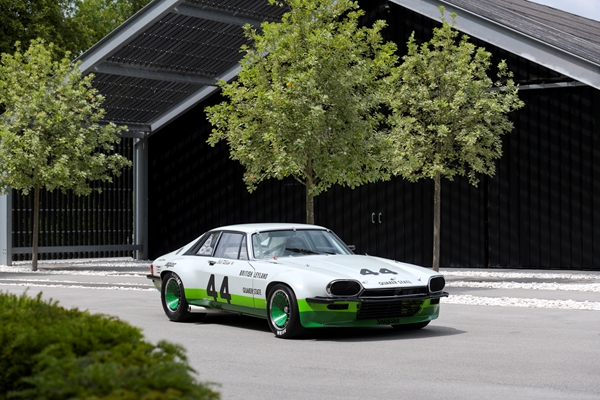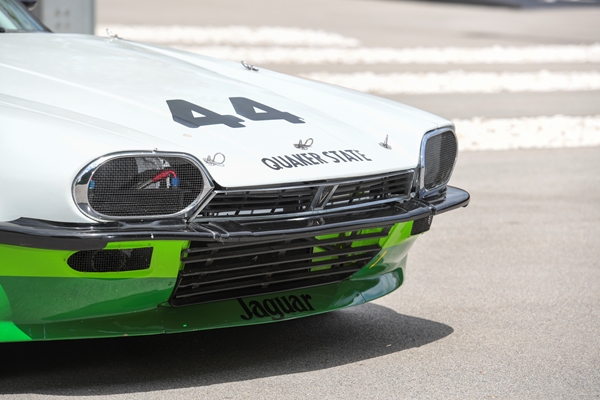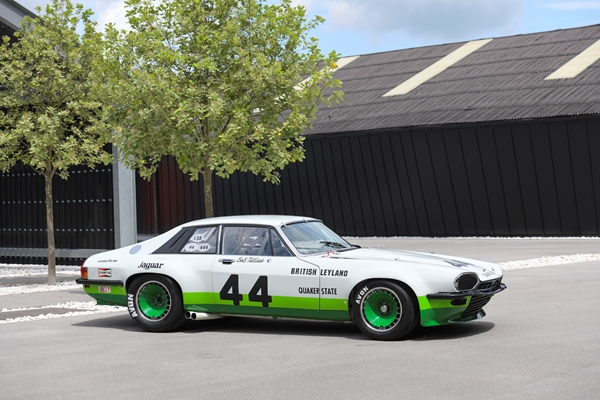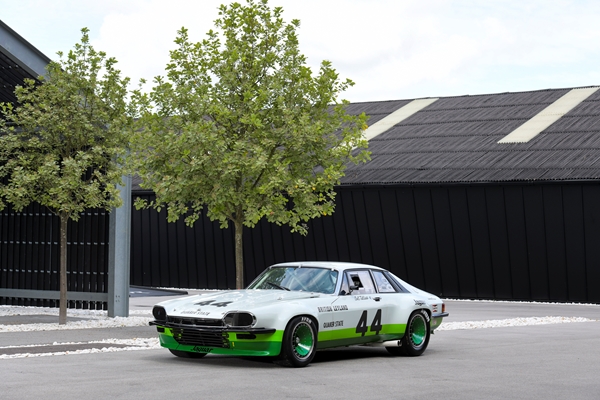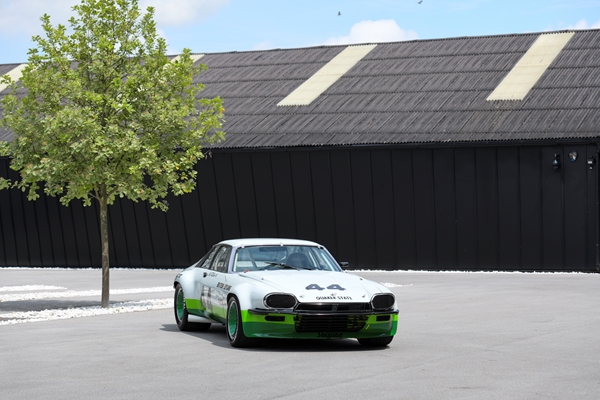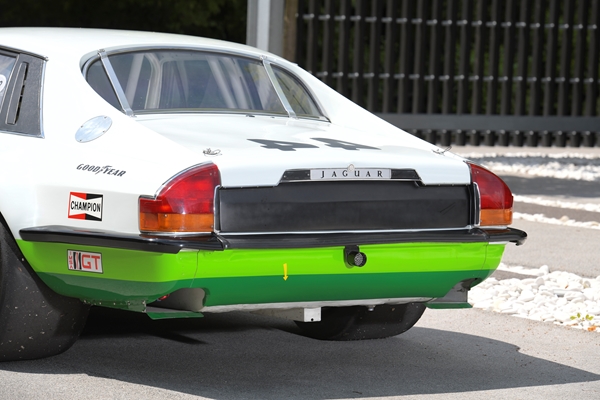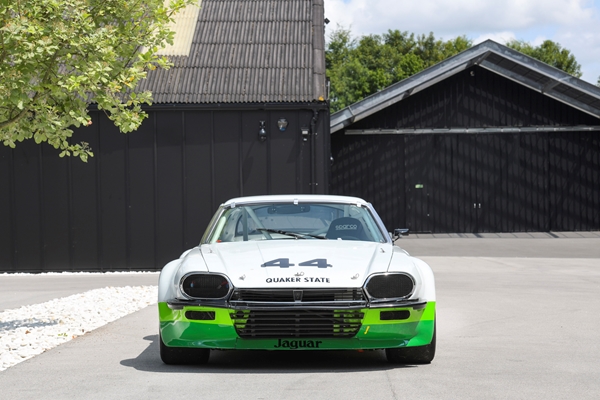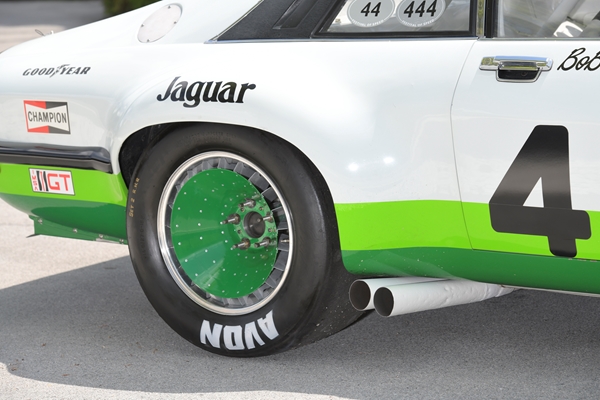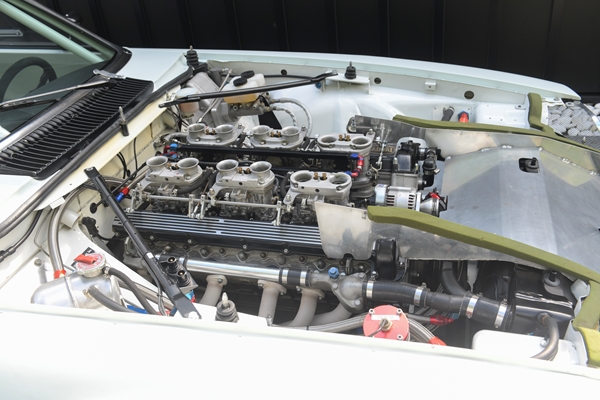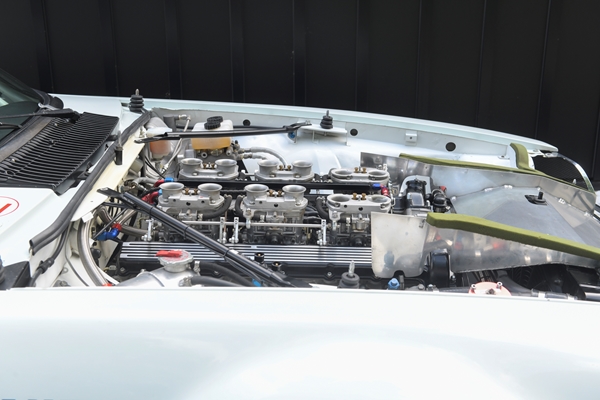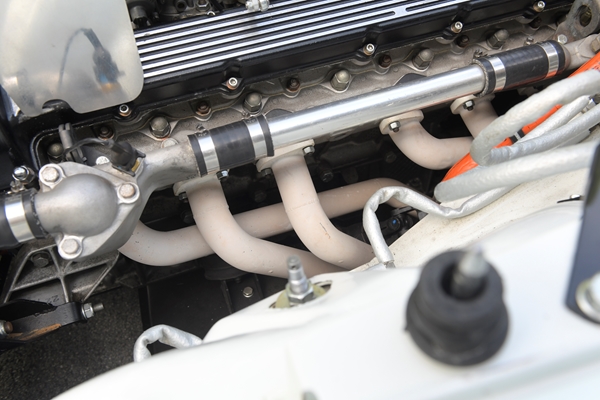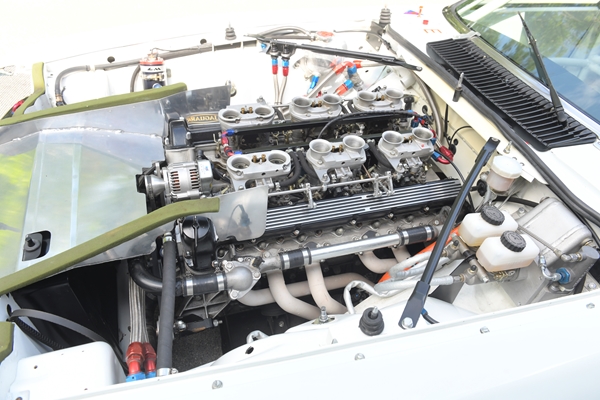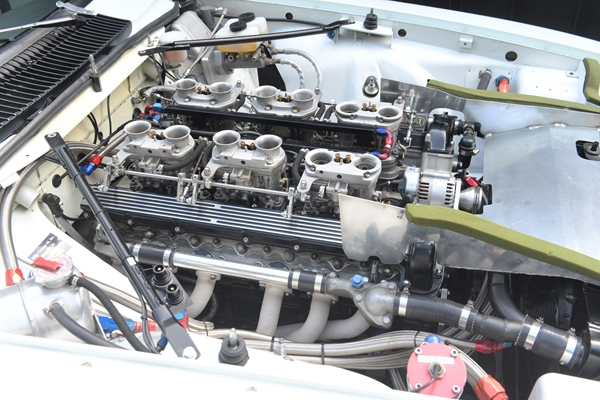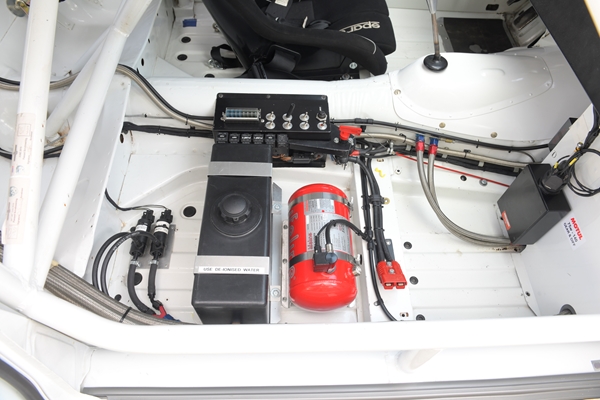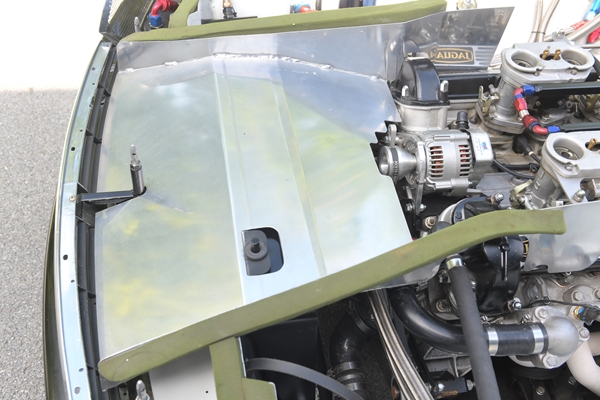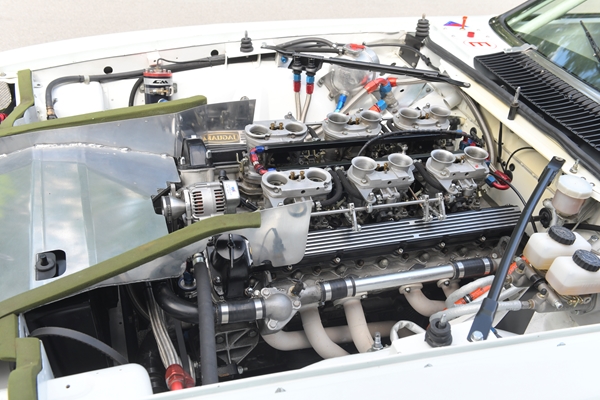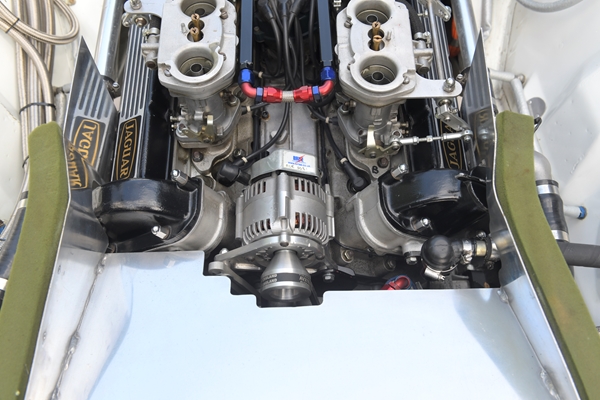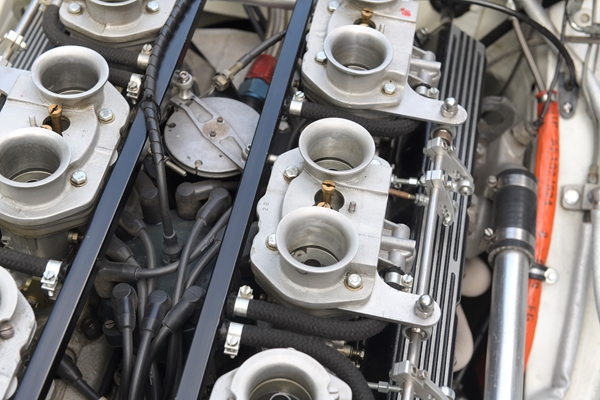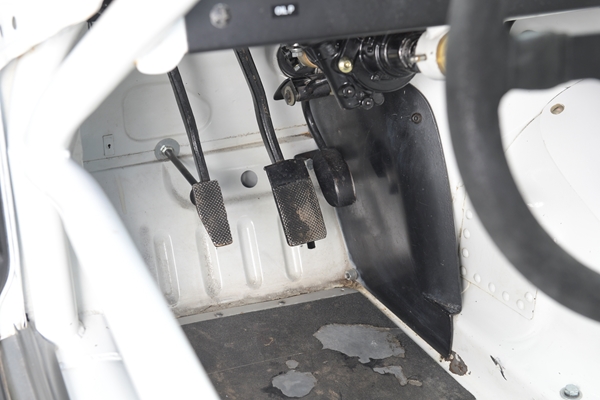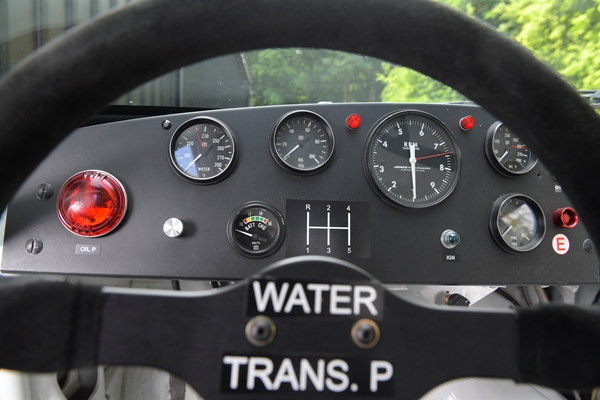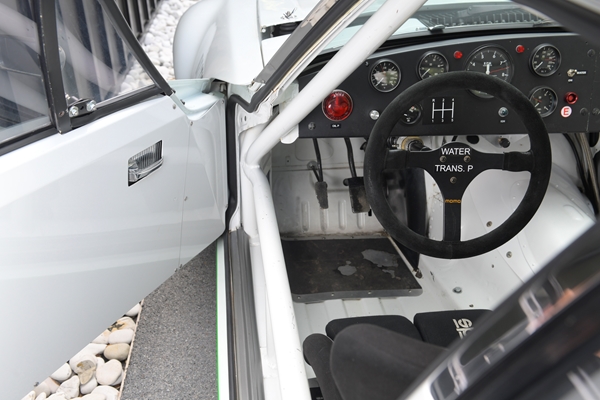1976 Jaguar XJS V12 'Group 44' Trans Am - Ex-Bob Tullius 1977 Trans Am Championship-winning car - chassis 001
Despite Jaguar's huge history and success with their racing programs, Lord Stokes of British Leyland had shown no interest in getting the XJS on the track during the 1970s. But in the USA, Michael H. Dale, British Leyland's Vice President of sales, remained an enthusiastic supporter of racing as a promotional tool – and the XJS was a big hit Stateside. Even if many at the ‘head office’ didn't want to see the XJS out on the tracks, he did, and it was Dale who worked closely with Bob Tullius to have the Group 44 XJS program replace that of the E-type V12 development, with the support of the factory.
This car, chassis 001 is the first XJS ever built by Tullius’ Group 44 Jaguar Team – constructed in June 1976 using a new body shell supplied by Jaguar Cars in England. The main responsibility for developing this car belonged to Brian Fuerstenau, Group 44's engineer and Latton 'Lanky' Fouchee the team's chief mechanic. ‘Tube frame’ cars were not introduced to the Trans Am rule book until 1980, so the process began with the bare metal and completely stripped factory-supplied shell. Next, the roll cage was installed with the team ensuring that it was positioned to stiffen the chassis. The suspension went through the usual creative racing modifications. To eliminate bump steer, the steering arms were bent to shorten the distance between them and the steering rack. The power steering was retained but a larger pulley was installed on the pump to compensate for the higher revving engine. Any rubber used in the suspension was replaced with solid joints. The car was also equipped with enormously heavier springs and thick roll-bars. There were also modifications made to front and rear suspension arms to improve strength and increase tire clearance. Braking came from the best that Lockheed could Supply in 1976 – huge discs and 8-piston calipers on the front. The rear used the front calipers from an E-type and Girling discs.
Group 44 made the usual modifications to the 5300cc V12 engine internals and oil system – lightweight internals, dry-sump oils system, six twin-choke Webers, tubular exhaust manifold etc. Initial horsepower was approaching 500bhp and was already at the 580bhp mark before long. With power transferred through a 4-speed manual ‘box and ‘welded’ rear axle in place of a limited slip differential, the Group 44 XJS was generating over 1g of lateral acceleration and was exceeding 180mph on-track.
Final touch was the beautiful and iconic Group 44 livery - in the familiar Quaker State green and white colours.
The first race for the new car was in July 1976 at Watkins Glen, but with very poor weather Tullius decided to protect his gleaming white new rocket-ship and wait until the August Trans Am race at Mosport. At the Mosport event, he took pole, fastest race lap and led for over half the race. However, he discovered that when running in traffic there was insufficient ducting for the oil cooler. With the oil temperature rising rapidly he had to drop back into clean cool air. In the end, Tullius had to back off and finish 10th overall and 4th in ‘Category 1’. The next test for the car was an IMSA Camel GT '250 mile Daytona Finale' race in November '76, running in the fierce GTO class. Tullius was running fourth at the halfway point, however, he was forced to retire when the car's interior temperature became simple unbearable.
The exploratory outings at Mosport and Daytona showed the car's potential, and a full season was planned for 1977 – focusing on the headline-grabbing Trans Am Championship – the first year that Group 44 had devoted all their efforts to both the Trans Am Driver and Manufacturer Championships for British Leyland.
The 1977 Trans Am championship consisted of 11 races, with the XJS entered in the Category 1 class. Tullius started the season with wins at the first two races, Seattle and Westwood. But a DNF at Portland and an eighth-place finish at Nelson Ledges allowed John Bauer in a Porsche 911 to take the points lead. The fifth race of the series was a 6-hour event at Watkins Glen, which was run as part of the World Championship for Makes grid. Double points were awarded for Trans Am Class competitors due to the race length and to encourage teams to enter the event. Brian Fuerstenau was brought in to share the driving duties with Tullius. The pair qualified 1st in class, which resulted in some satisfaction for the team as the car was “detuned for reliability”. Unfortunately, his words proved prophetic as a combination of a broken wheel and electrical problems resulted in a fourth place finish. Tullius' main rival for the championship, Bauer, finished second, which allowed him to maintain his points lead. After the Glen, Group 44 returned to their early season form and the team took three wins in the remaining six races, finishing out of the top three once. In the end, Tullius won the Driver's Championship with 170 points to Bauer's 162.
At the end of the 1977 season, Tullius and 001 would again take on the MSA Camel GT '250 mile Daytona Finale', again in the top GTO class. Although the car was running strongly, again a DNF denied the car Daytona success.
Chassis 001 was retired as the championship winner at the end of the 1977 season, but Group 44 would continue their winning ways with their next XJS chassis in Trans Am, taking the 1978 championship too. Only a handful of years later, Tullius convinced Jaguar to go back to Le Mans with his XJR-5 IMSA GTP / Group C car – so we can thank Tullius as the instigator of the subsequent overall Jaguar Le Mans wins of 1988 and 1990.
Today chassis 001 is fully restored both cosmetically and mechanically, and comes with original paperwork including multiple original SCCA log books, original leather-trimmed bucket seat and steering wheel (from the 1977 championship-winning year). Also included are current HTP papers, and a number of spare parts including wheels. Ready to use in events across the world, including Patrick Peter’s CER 2 and of course historic Trans Am events in the USA.
POA ENQUIRE ABOUT THIS VEHICLE
